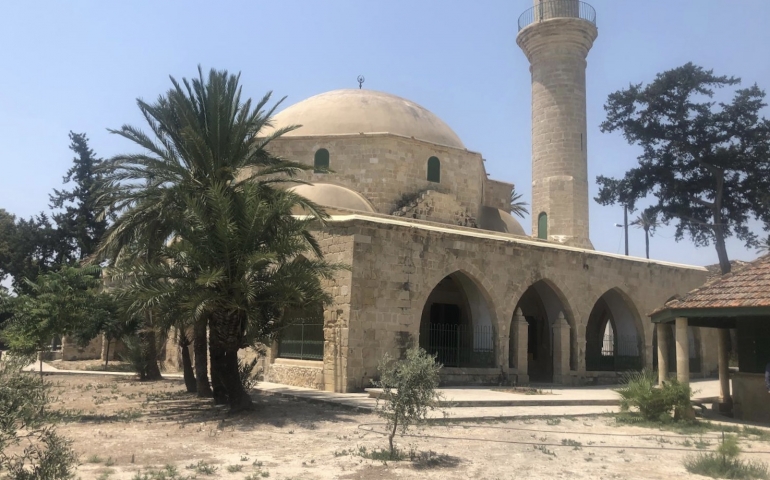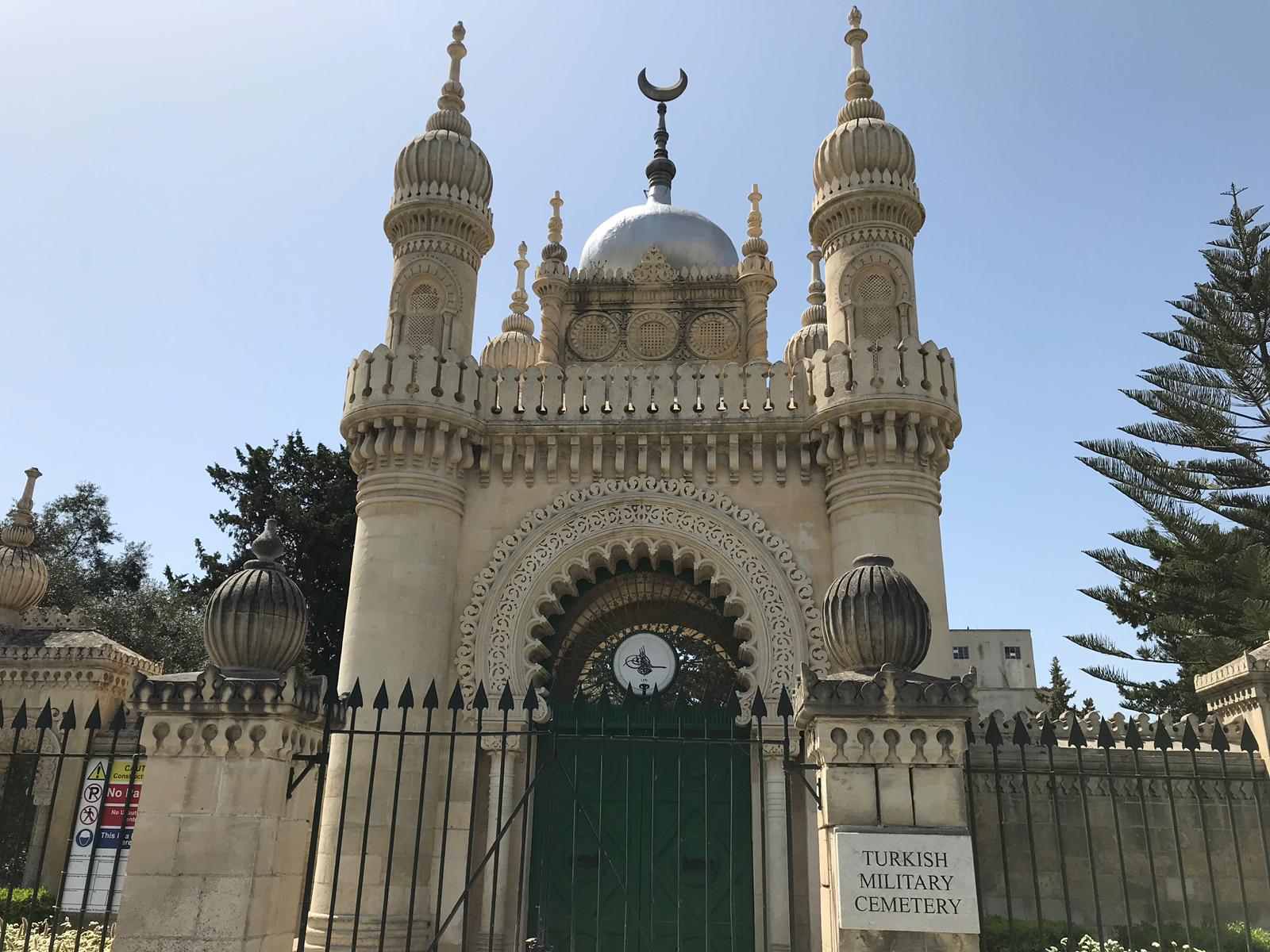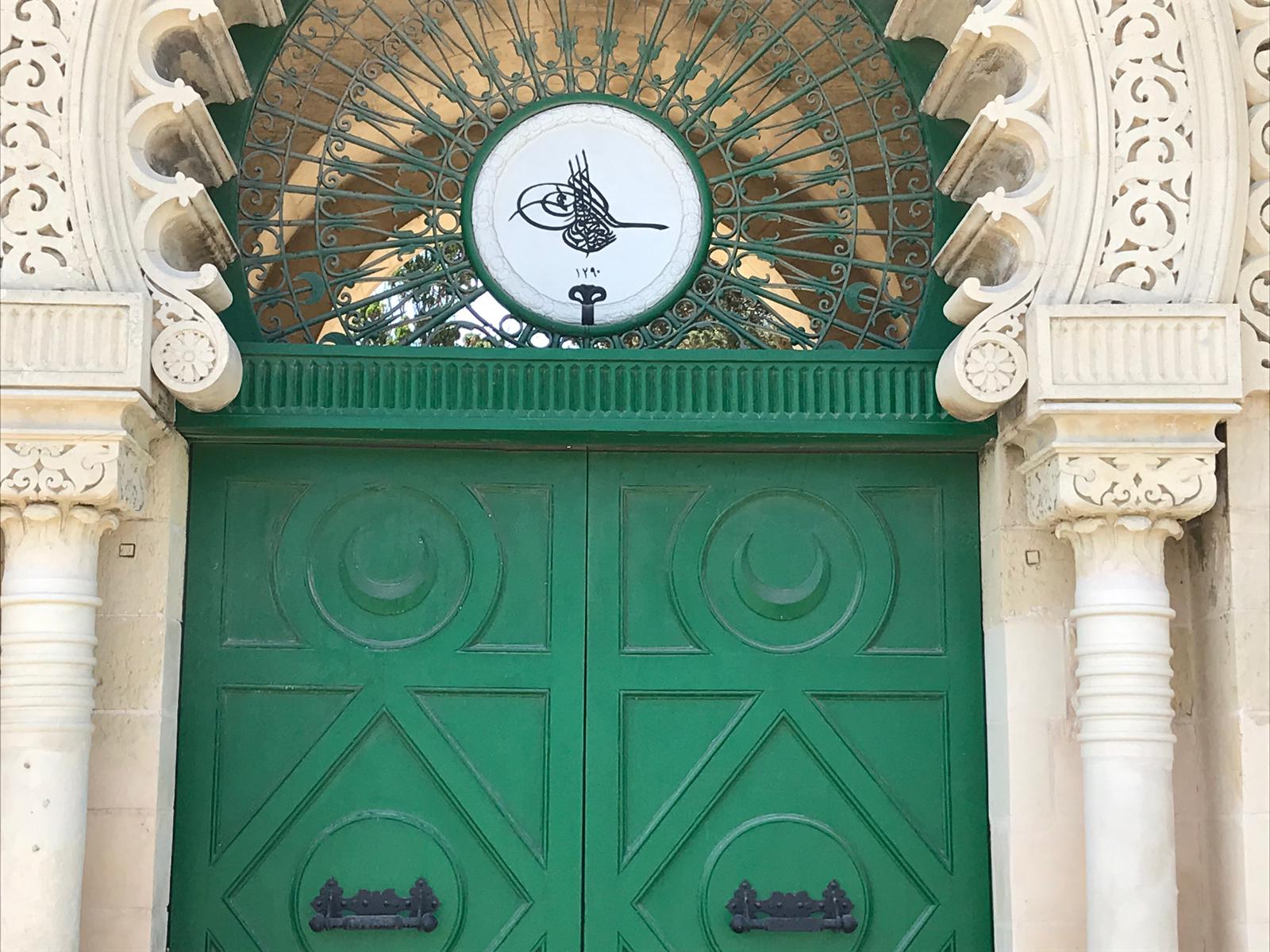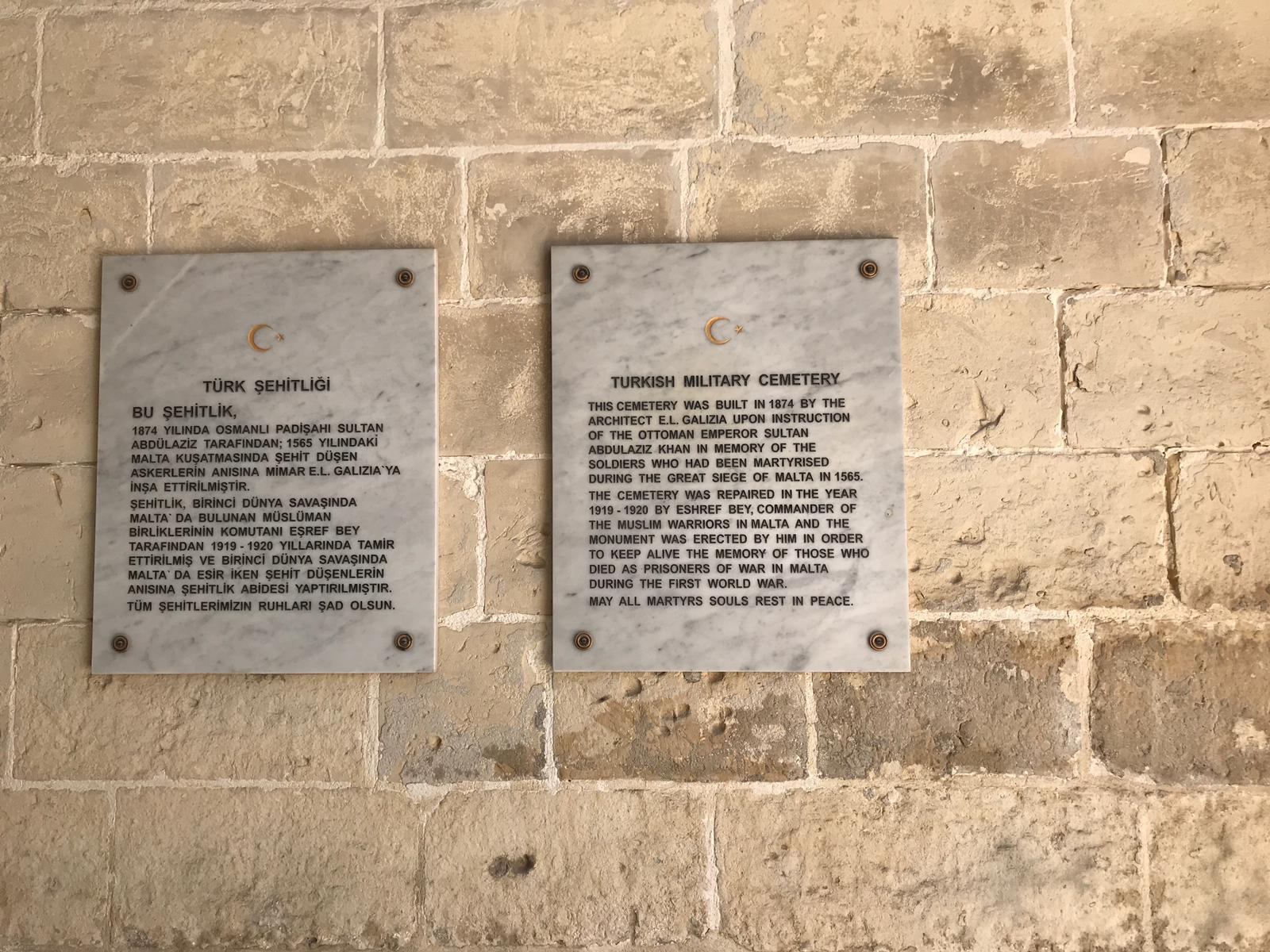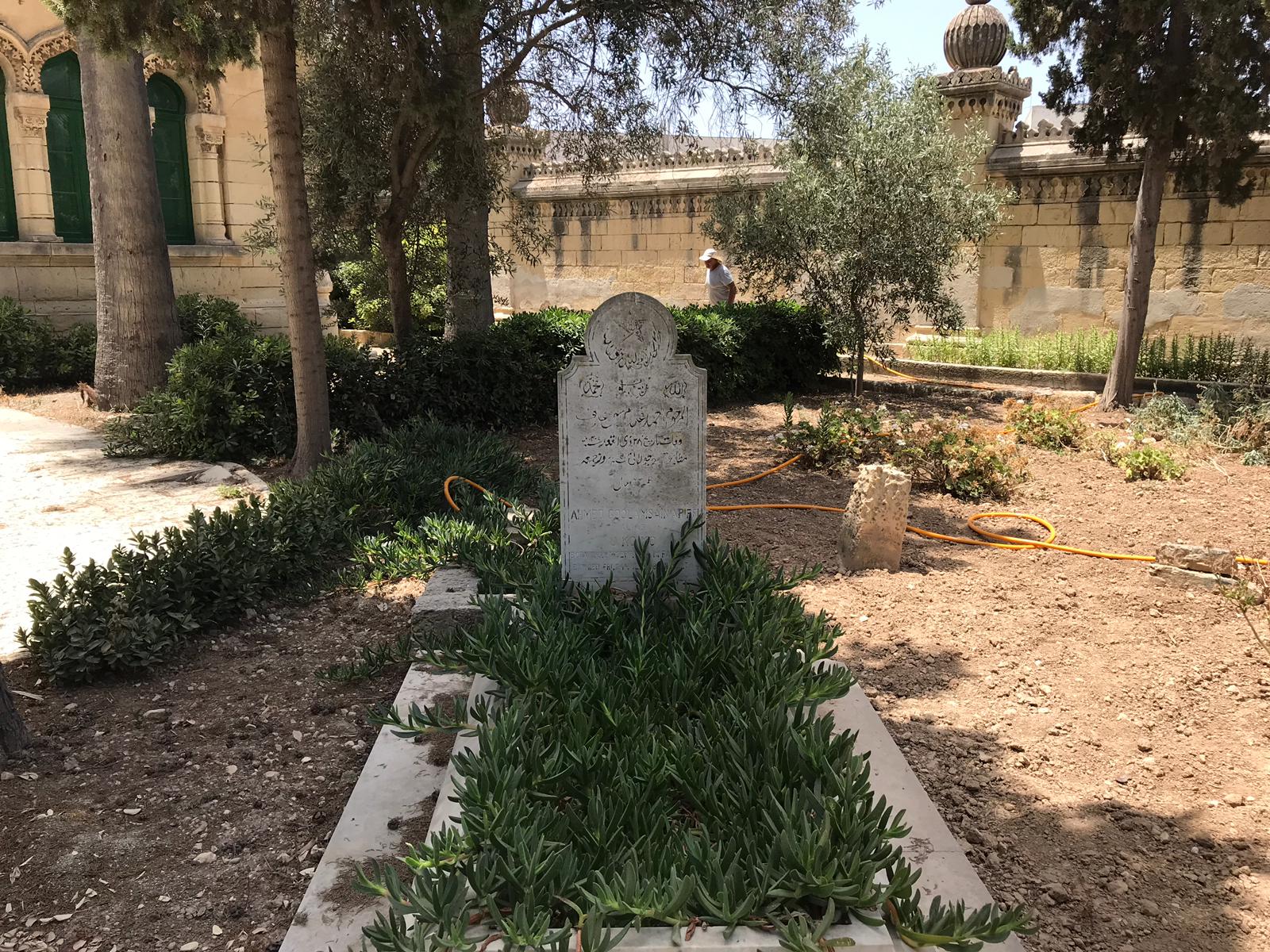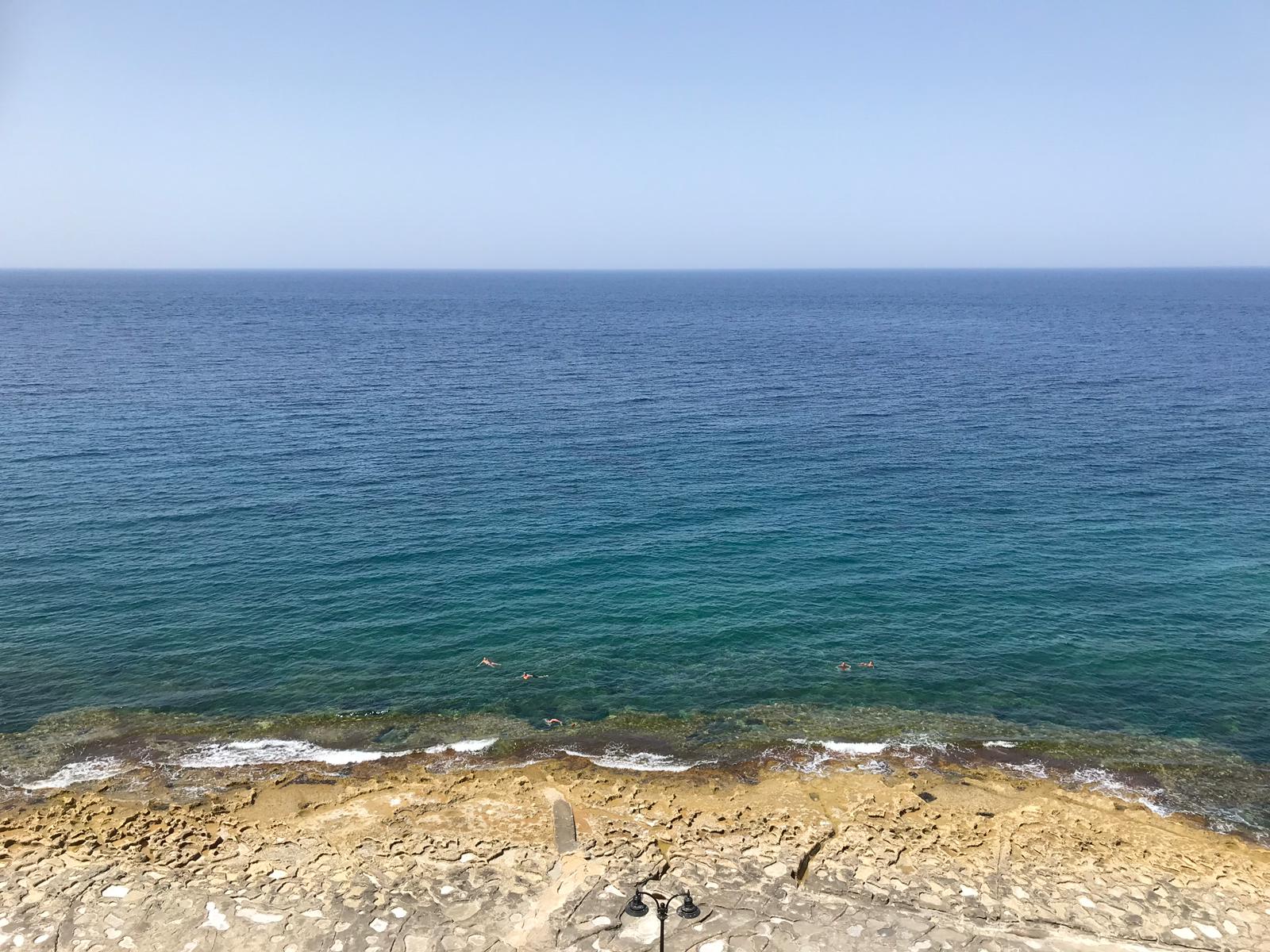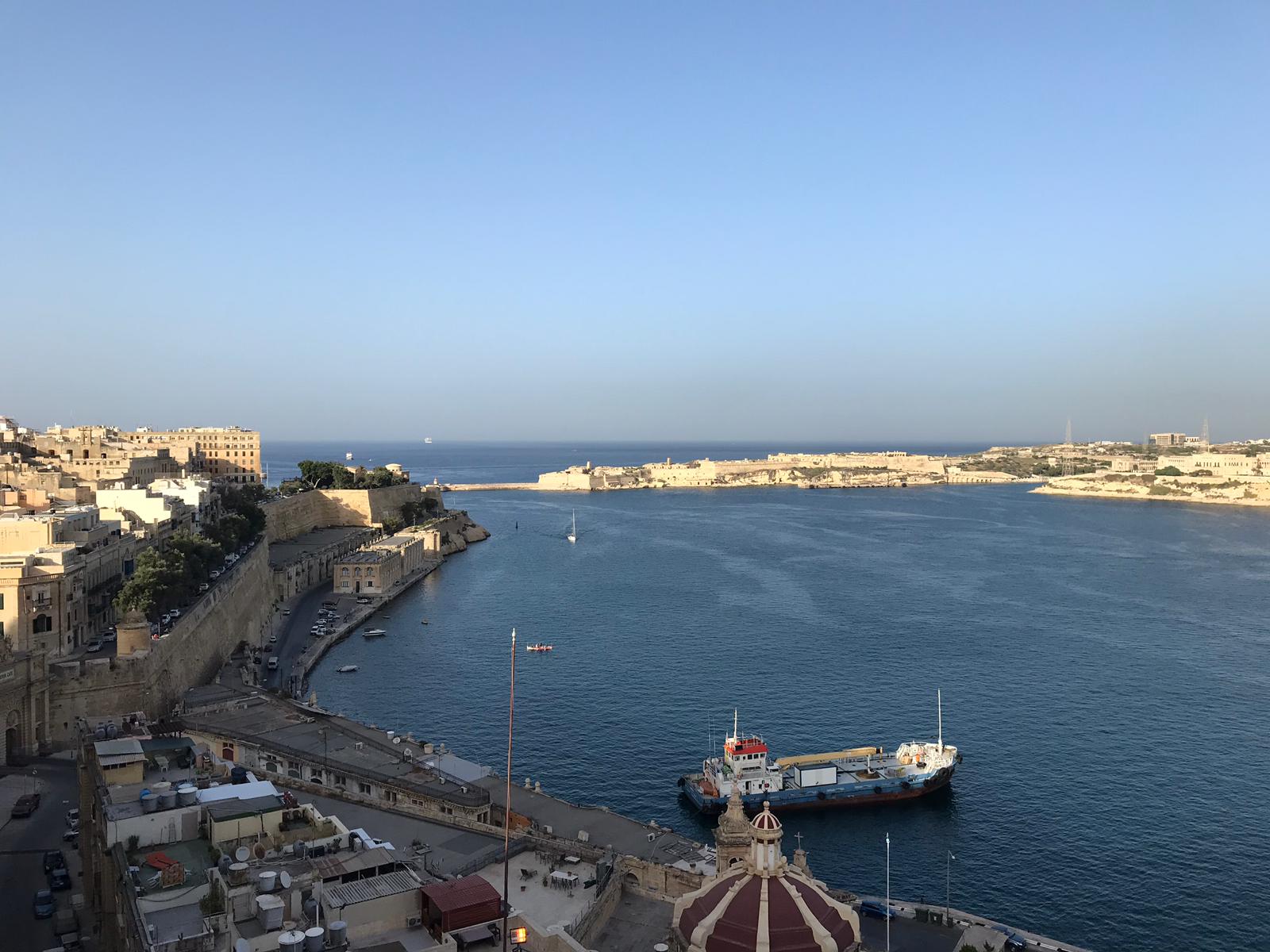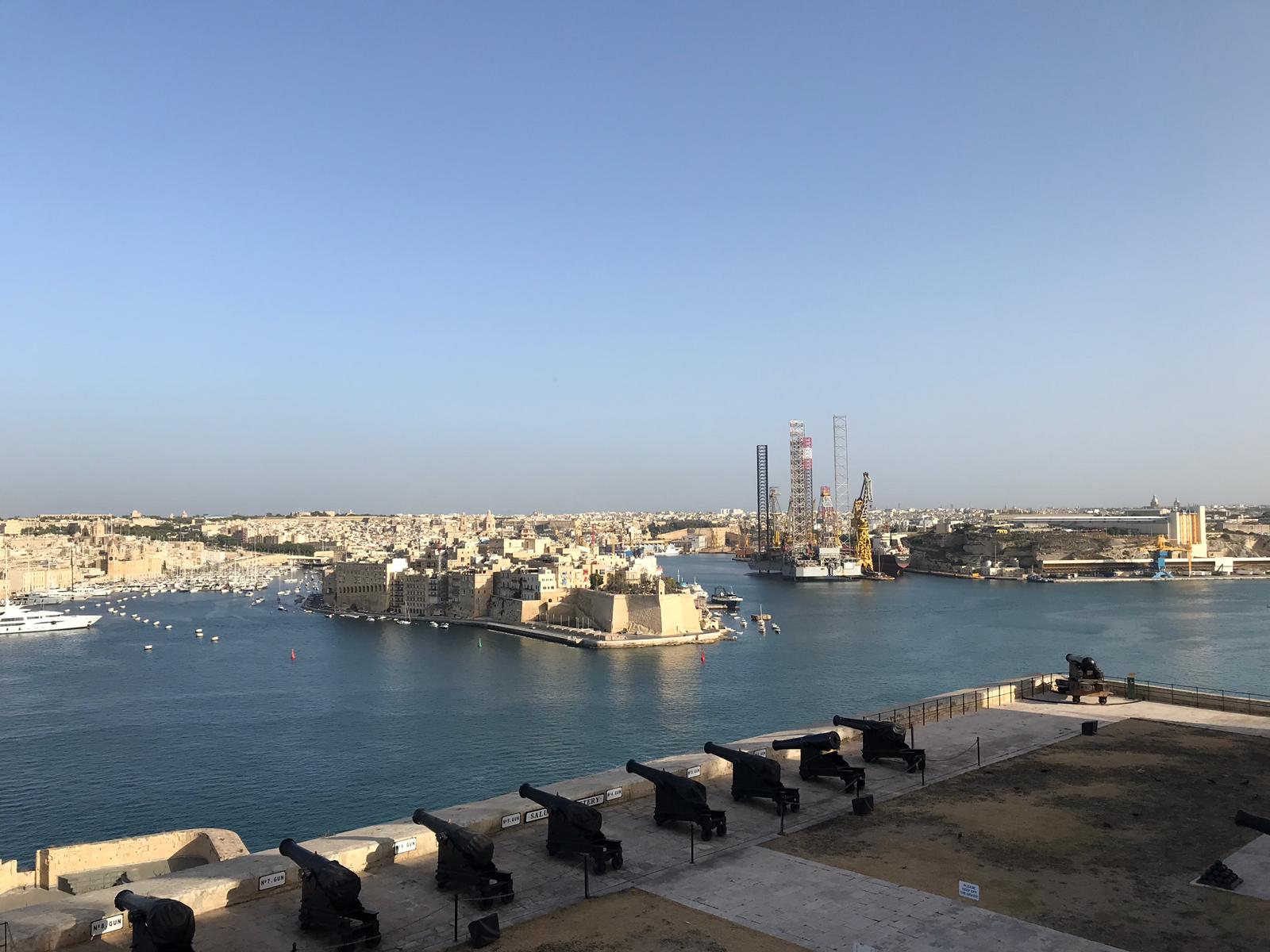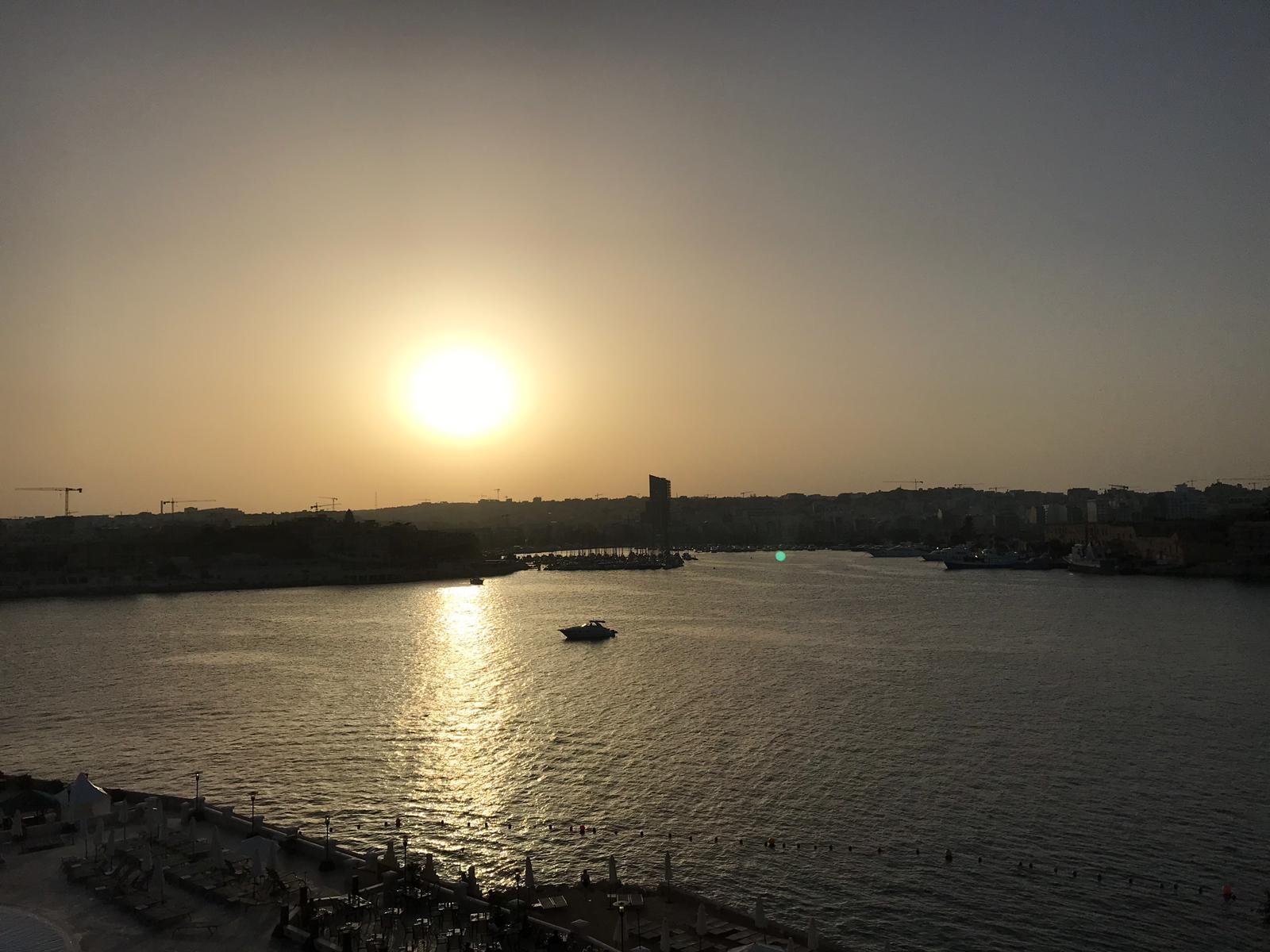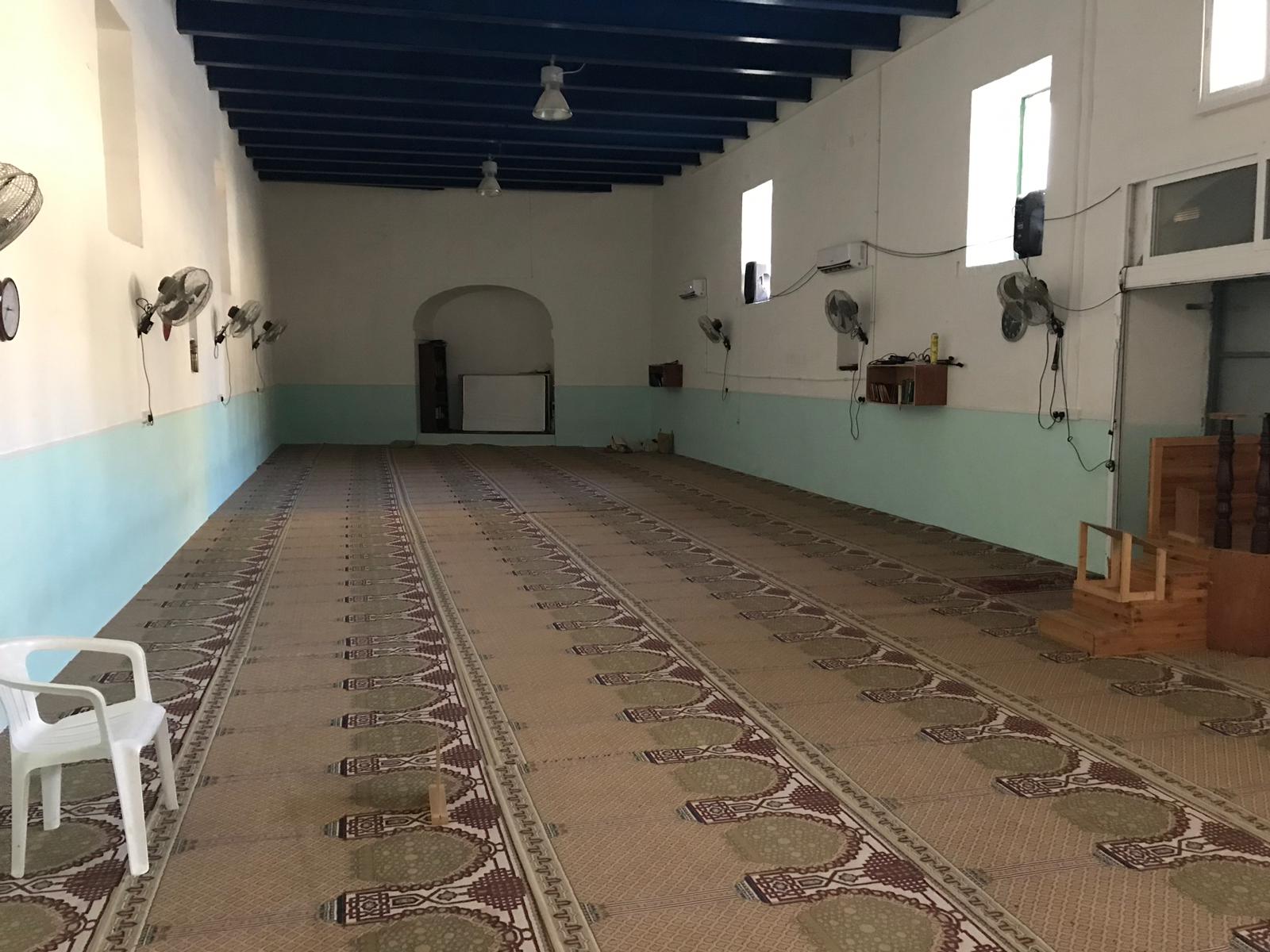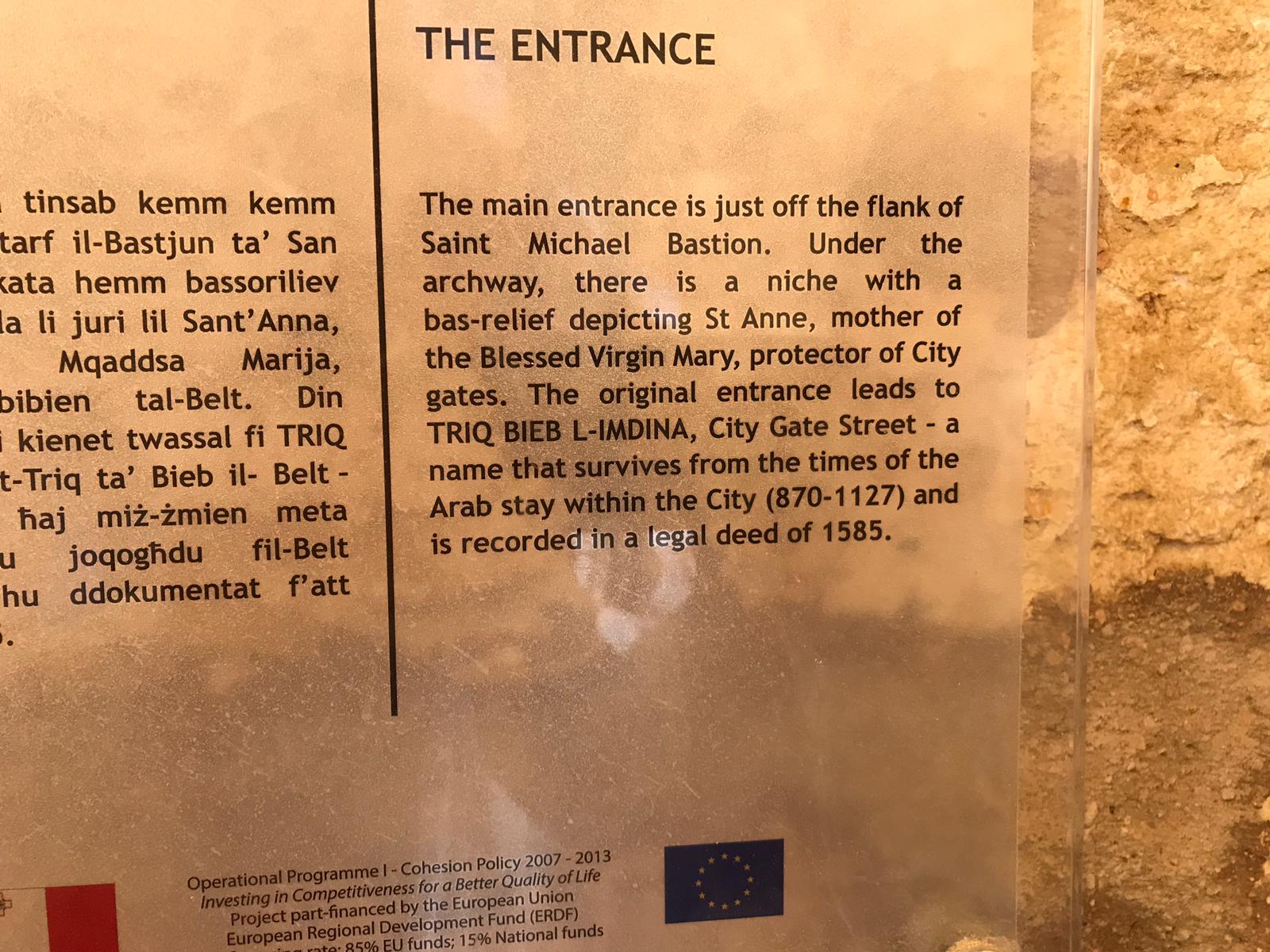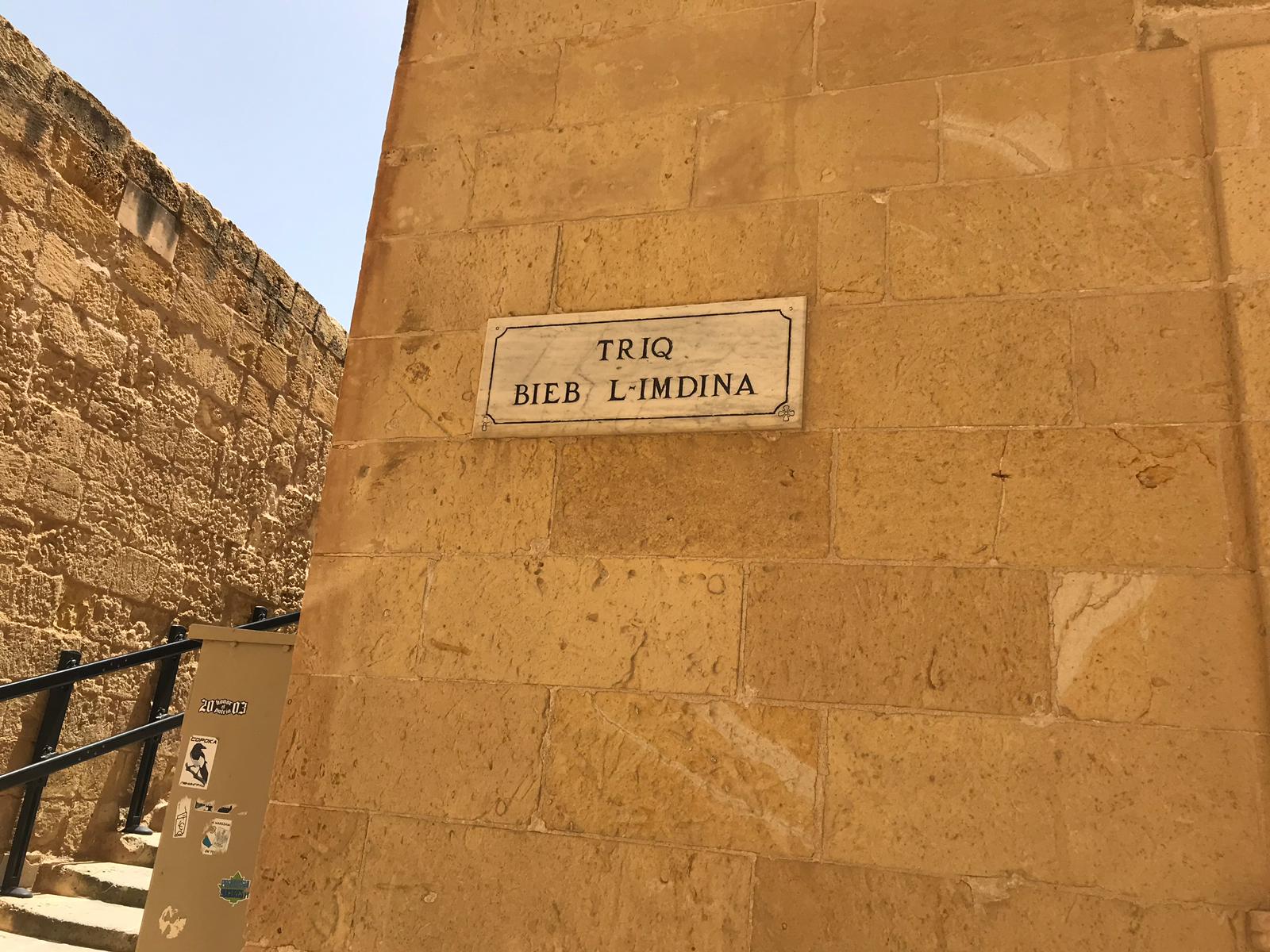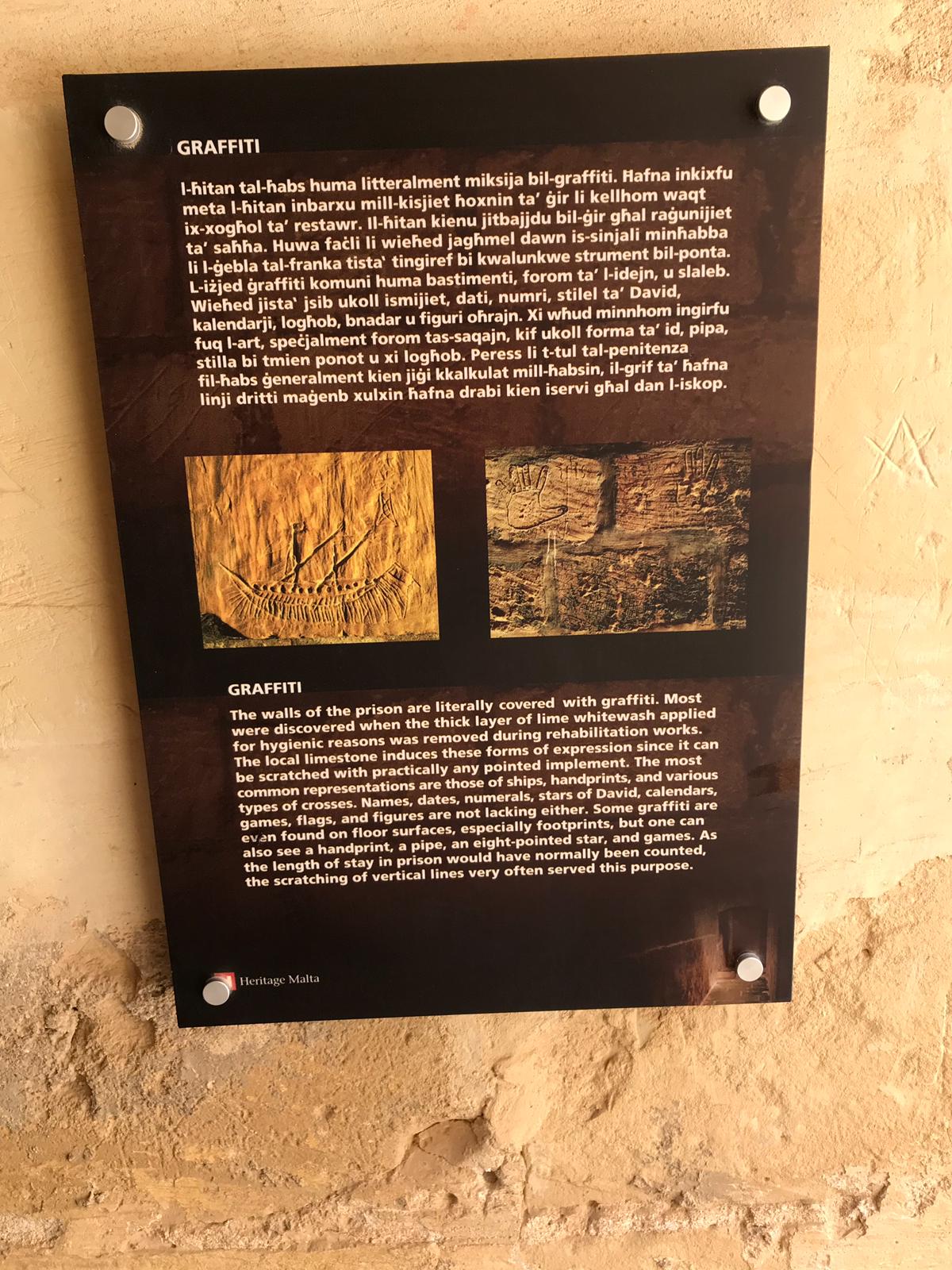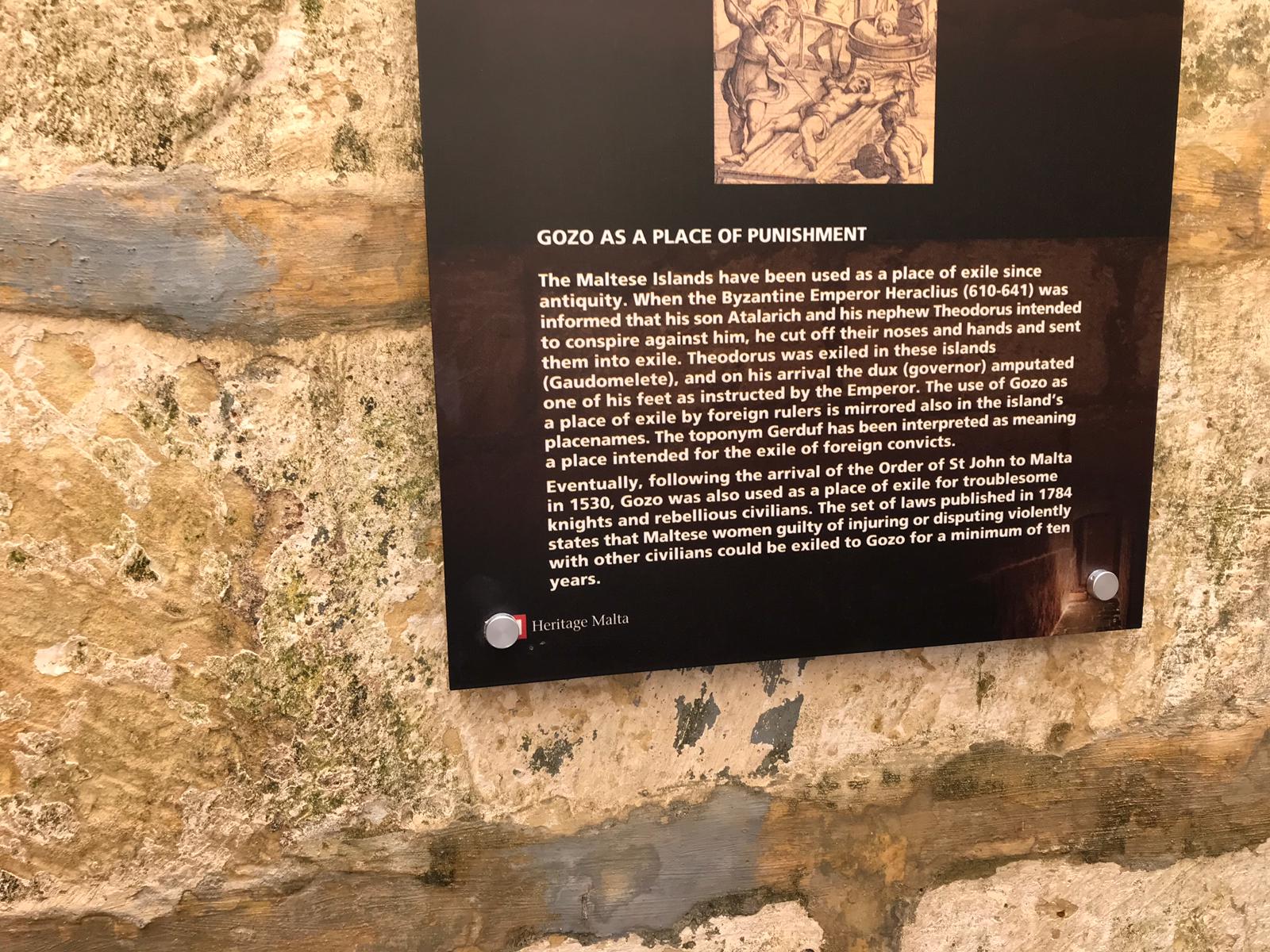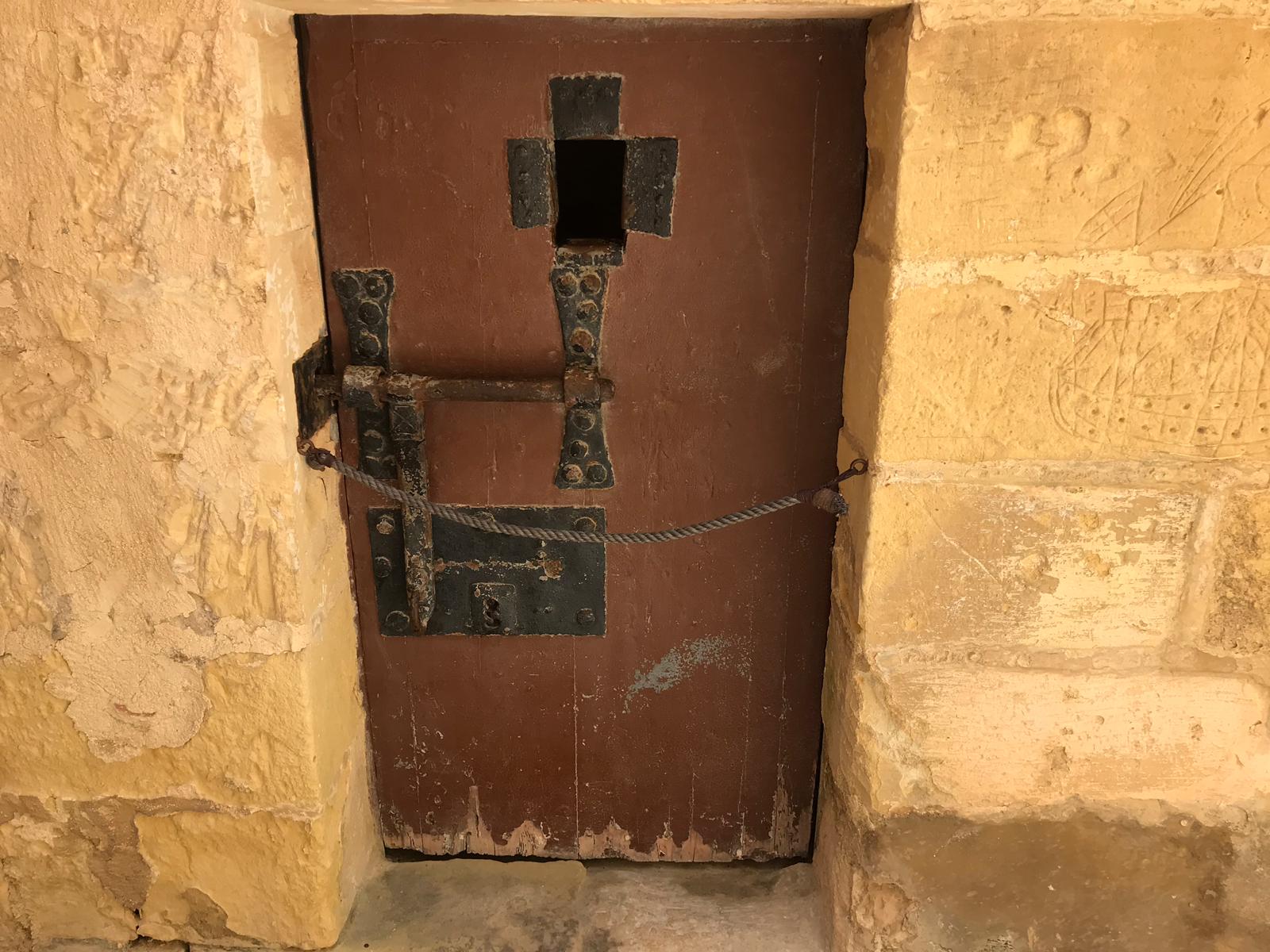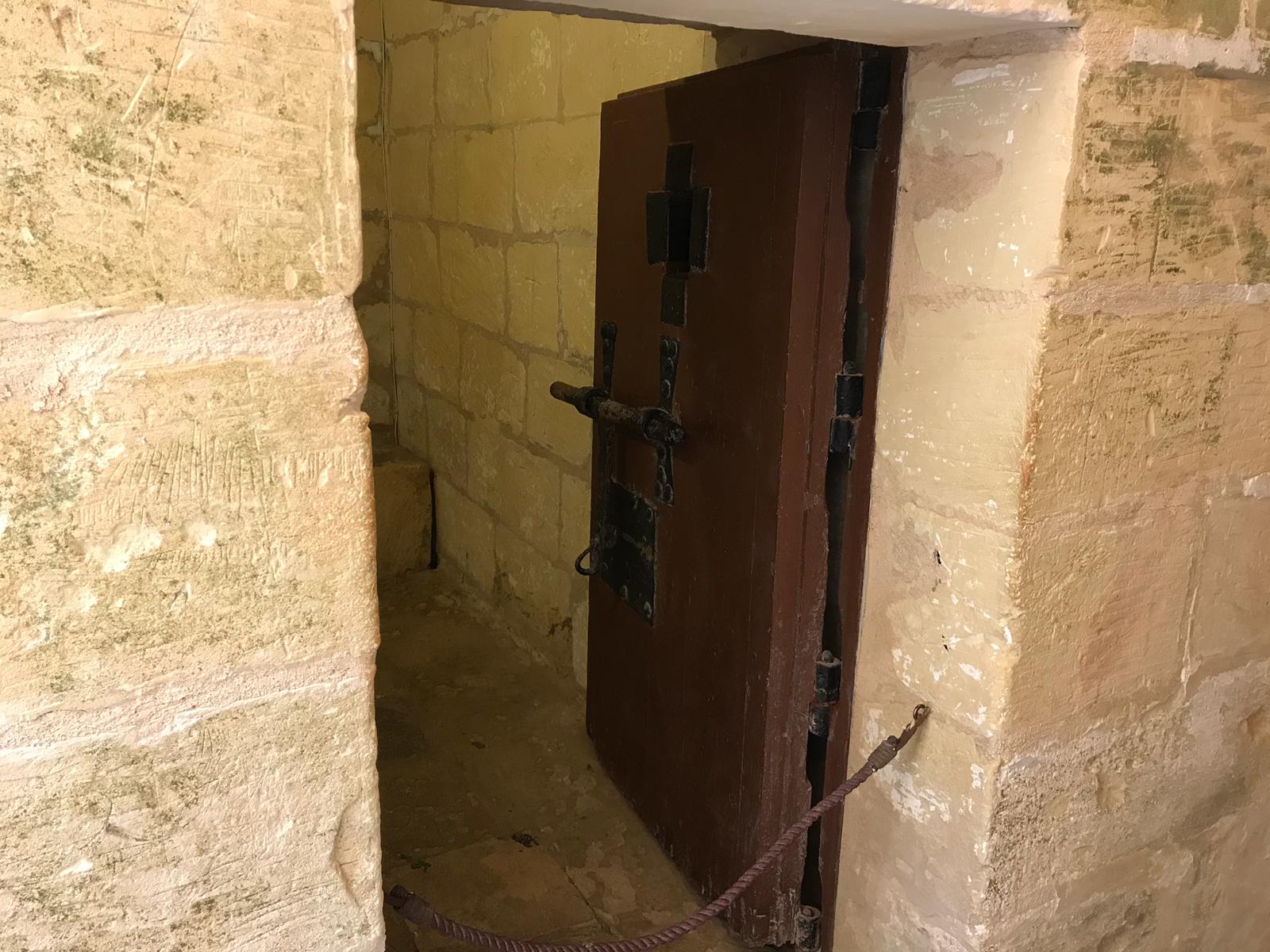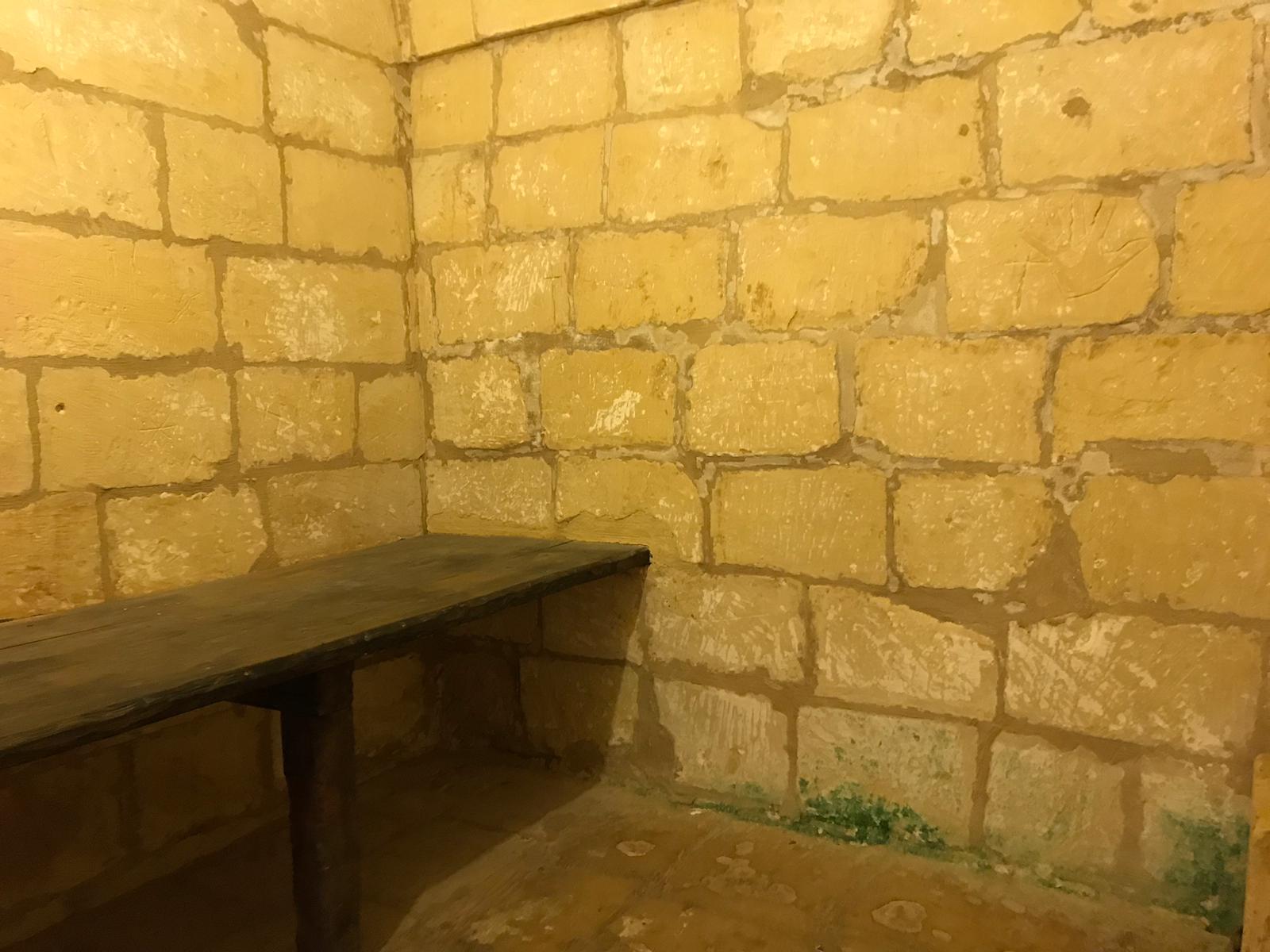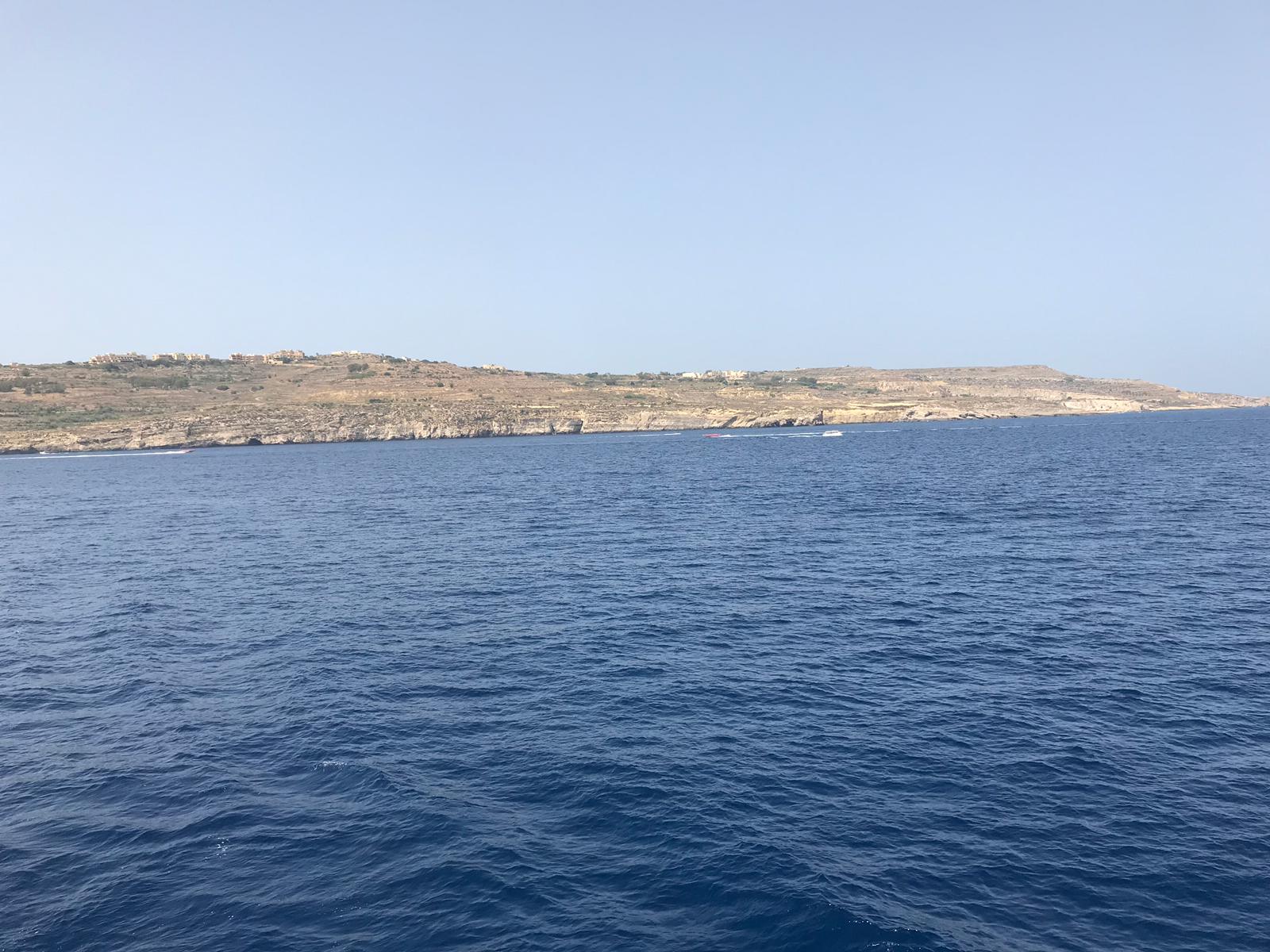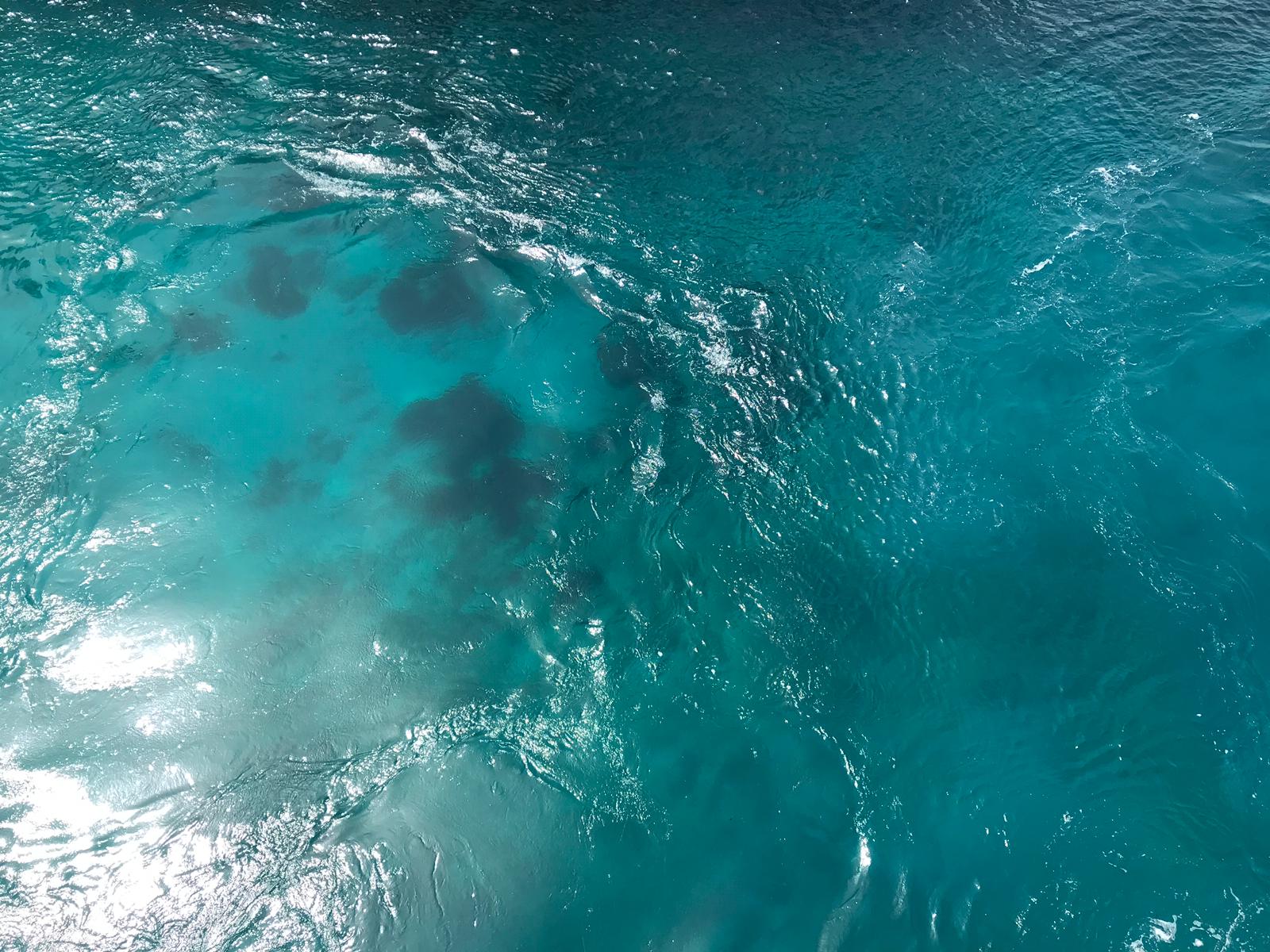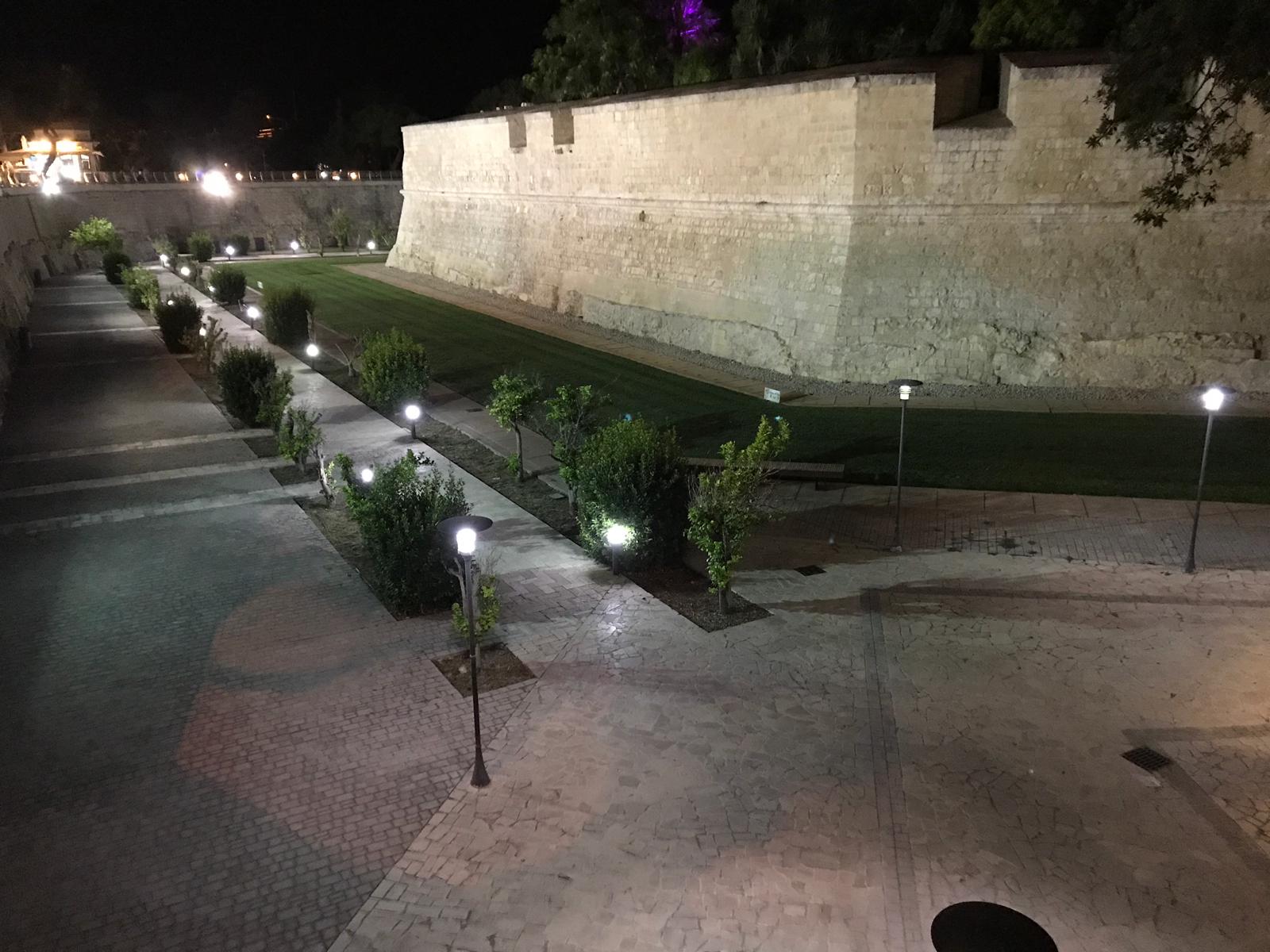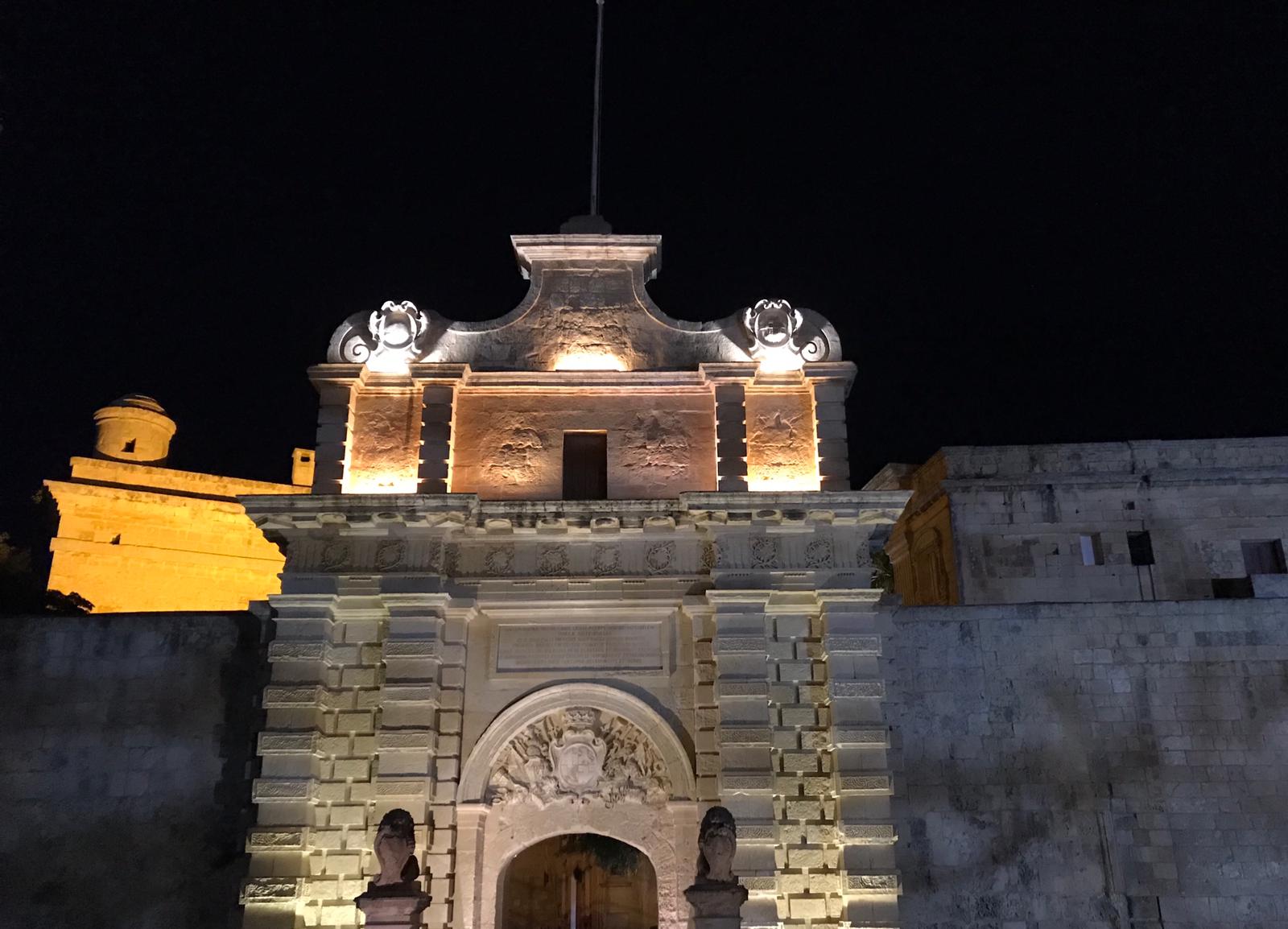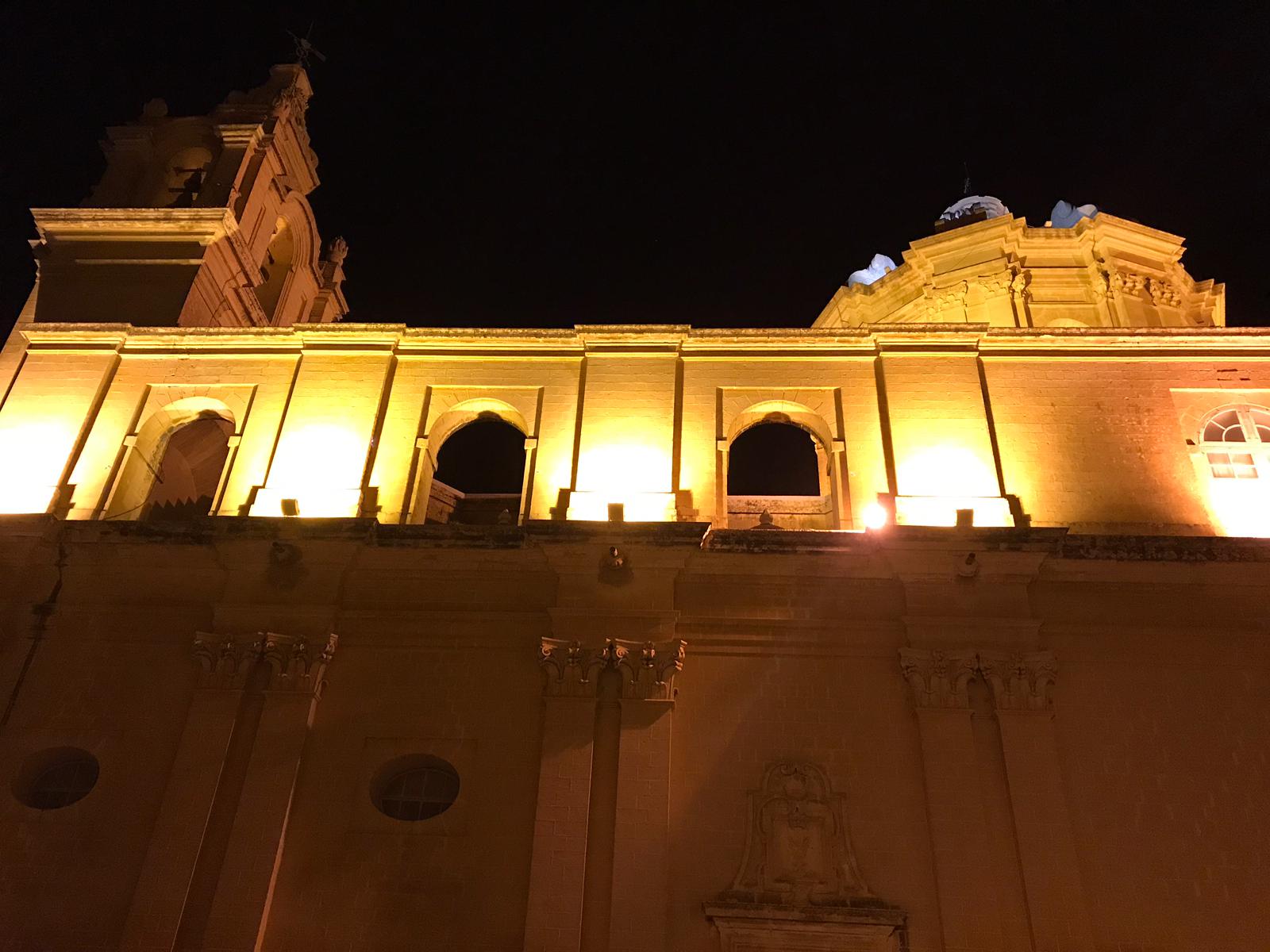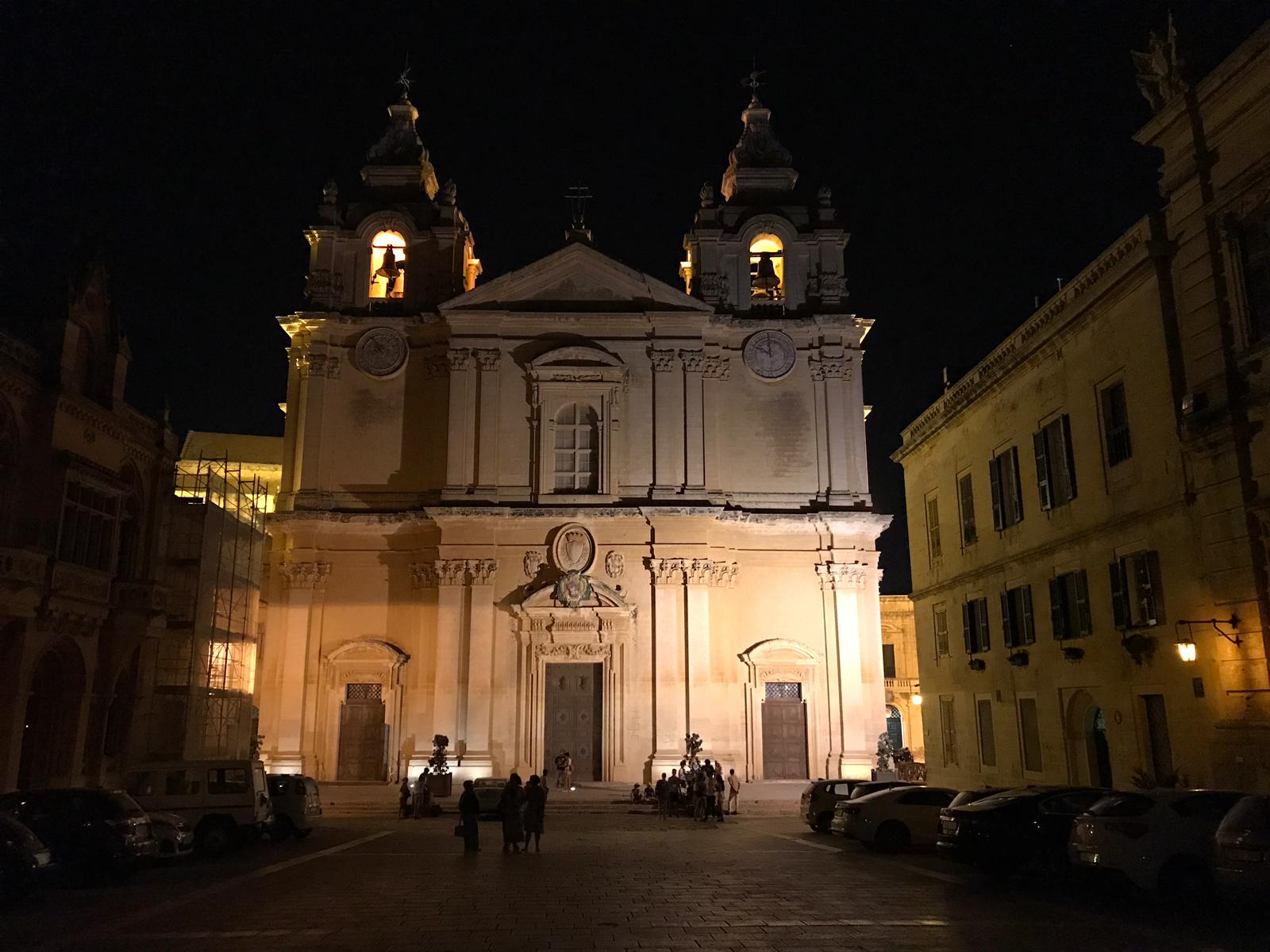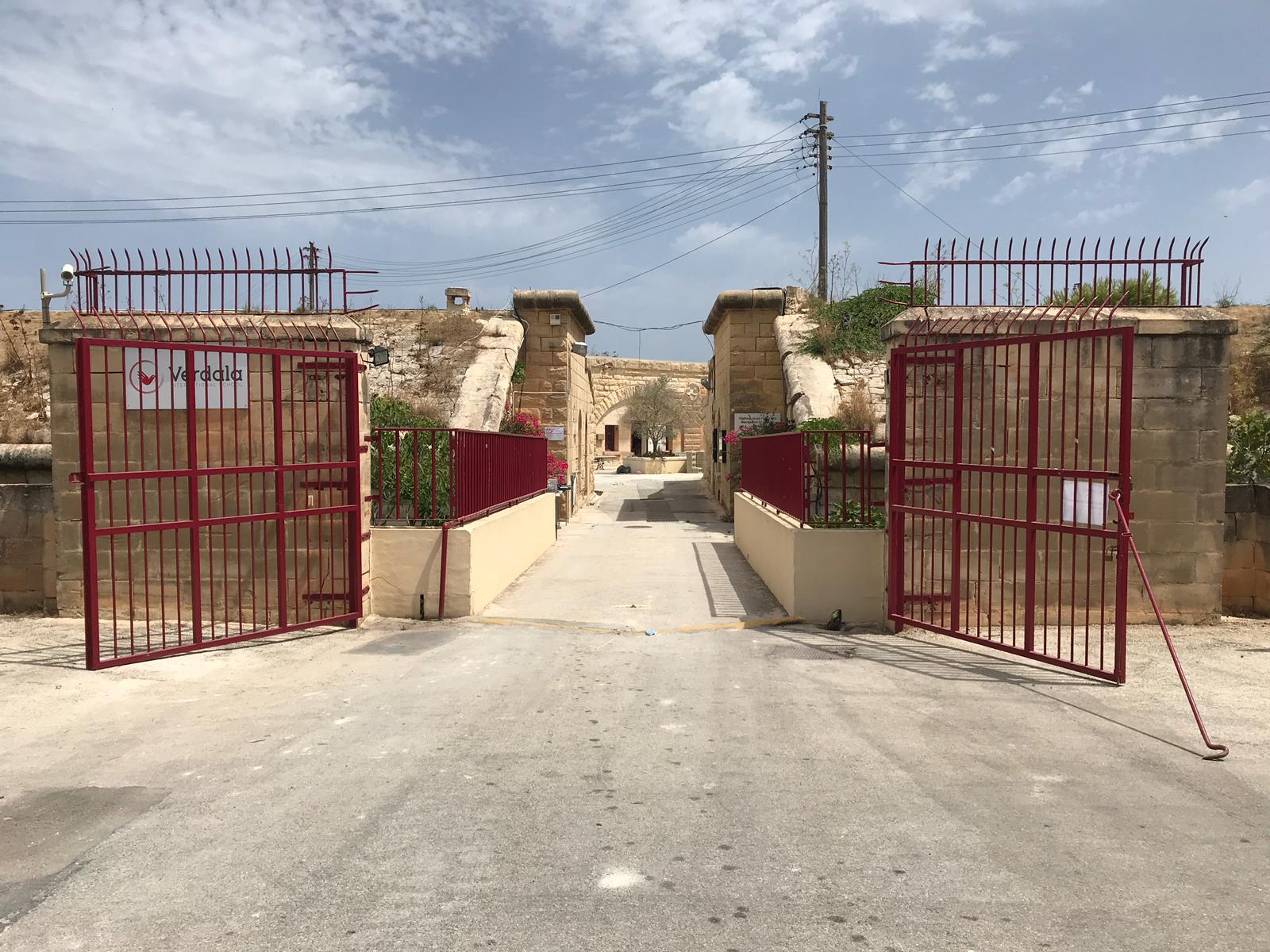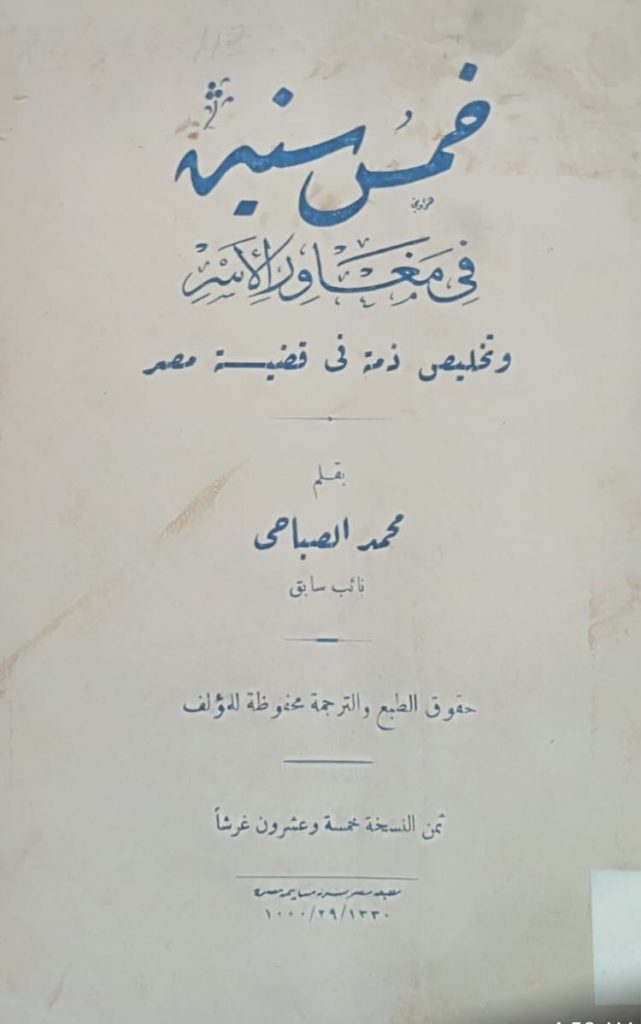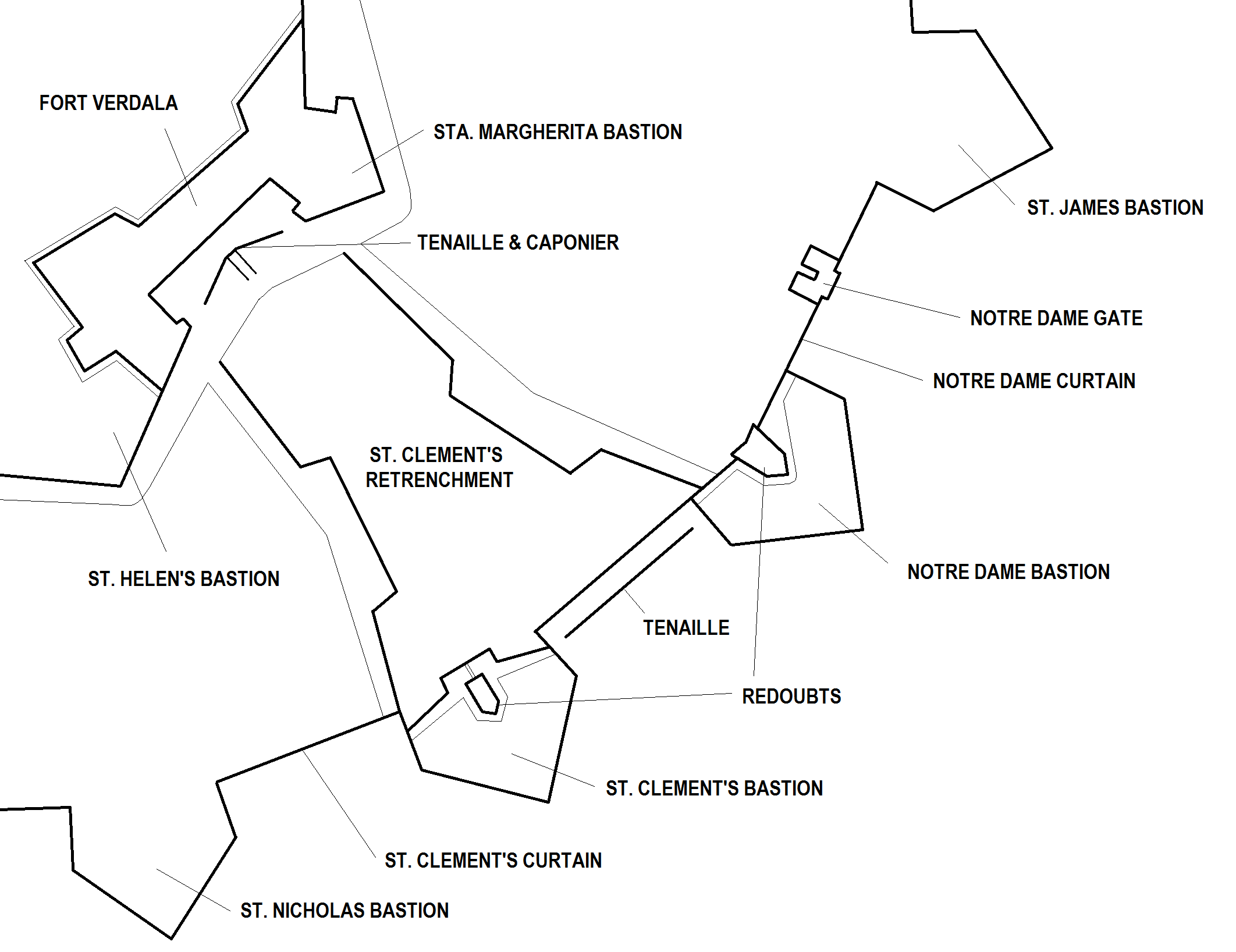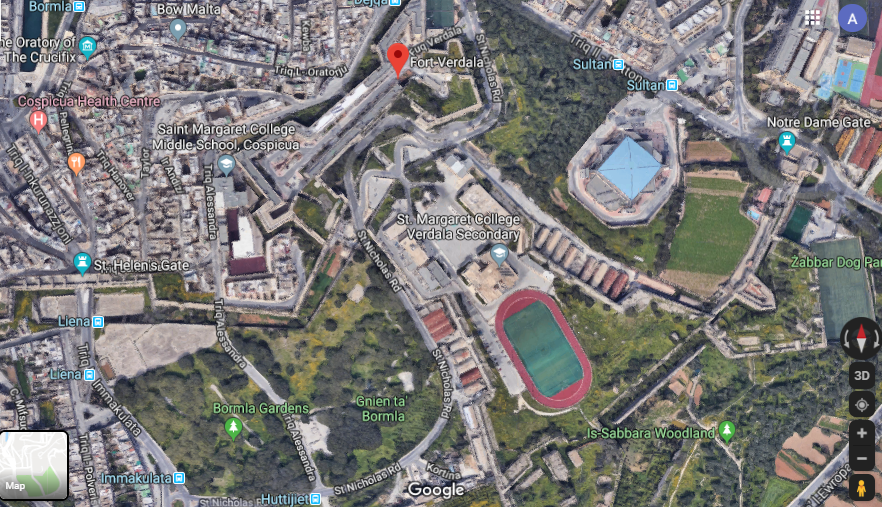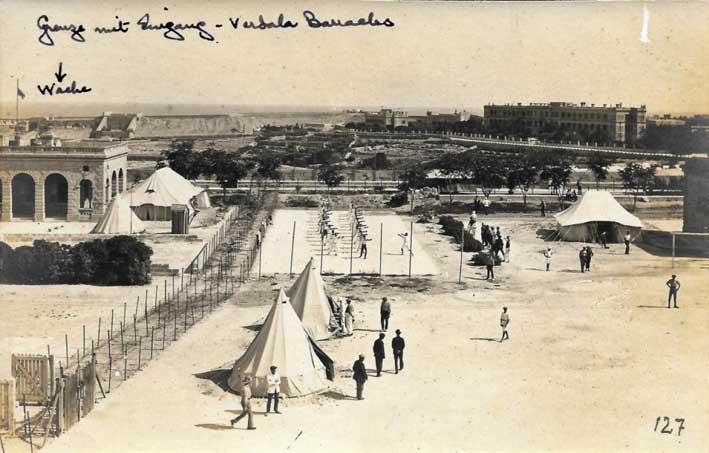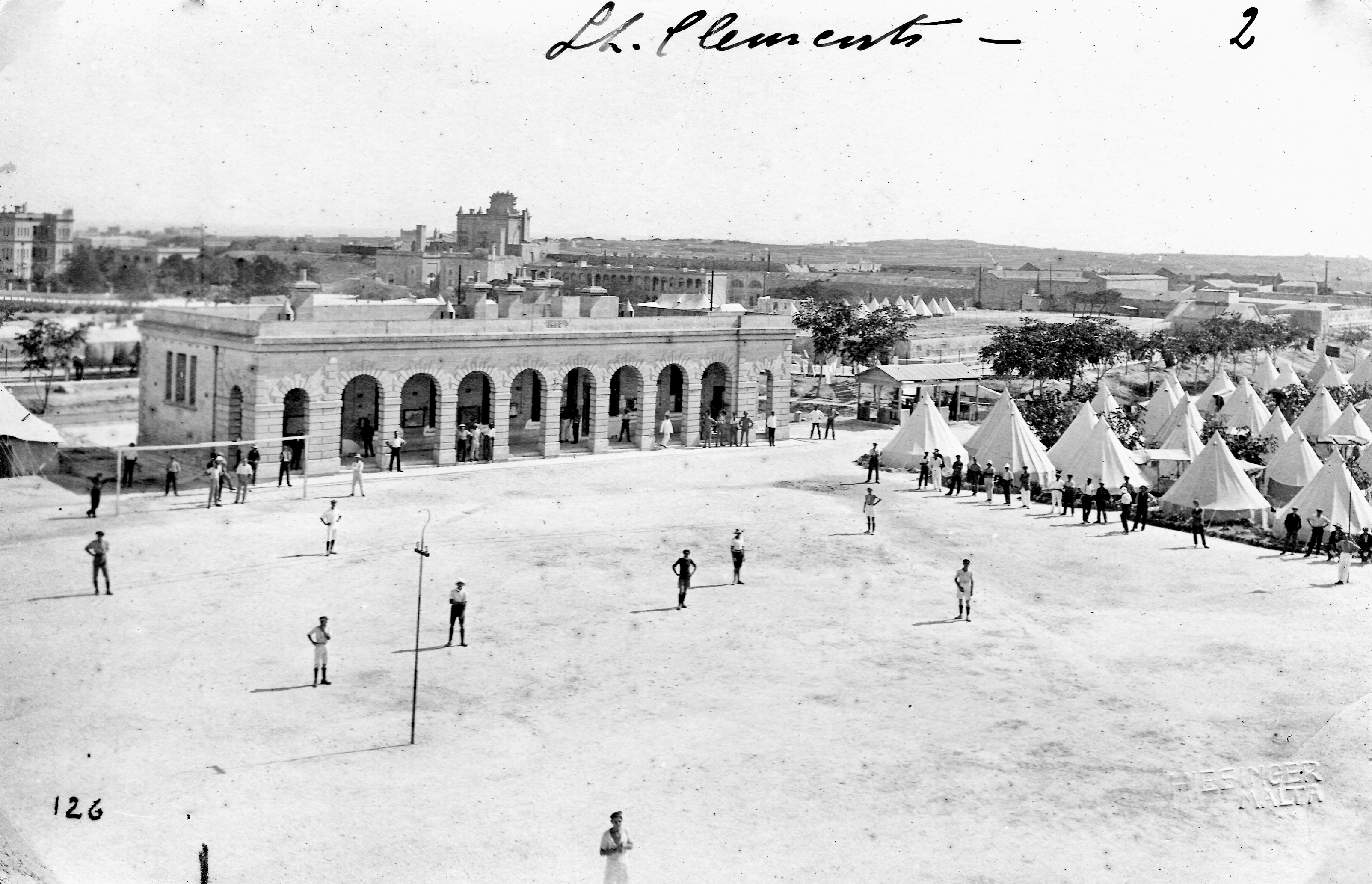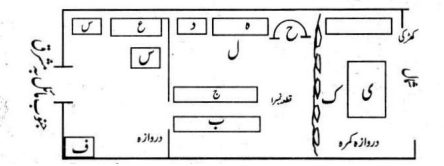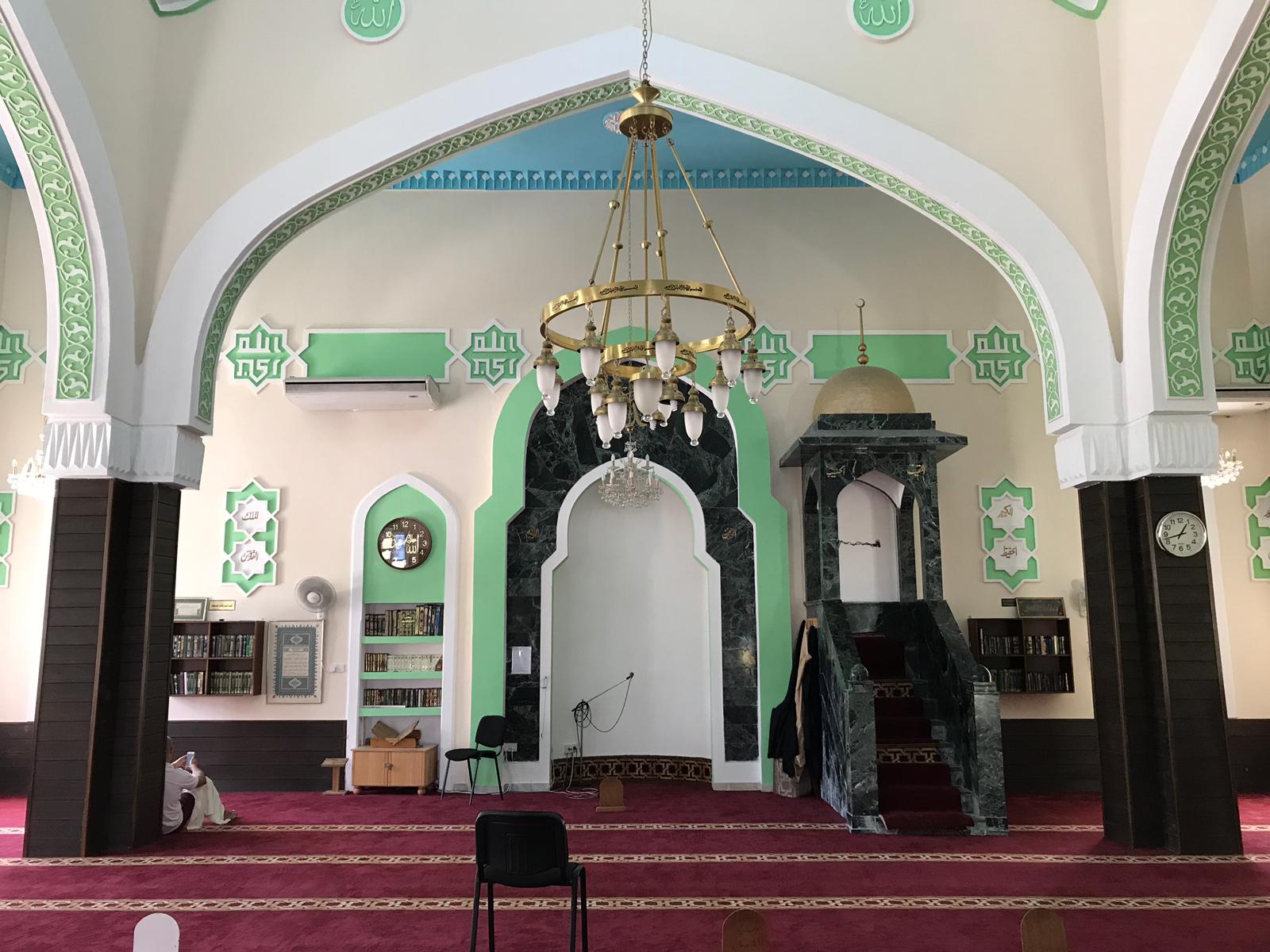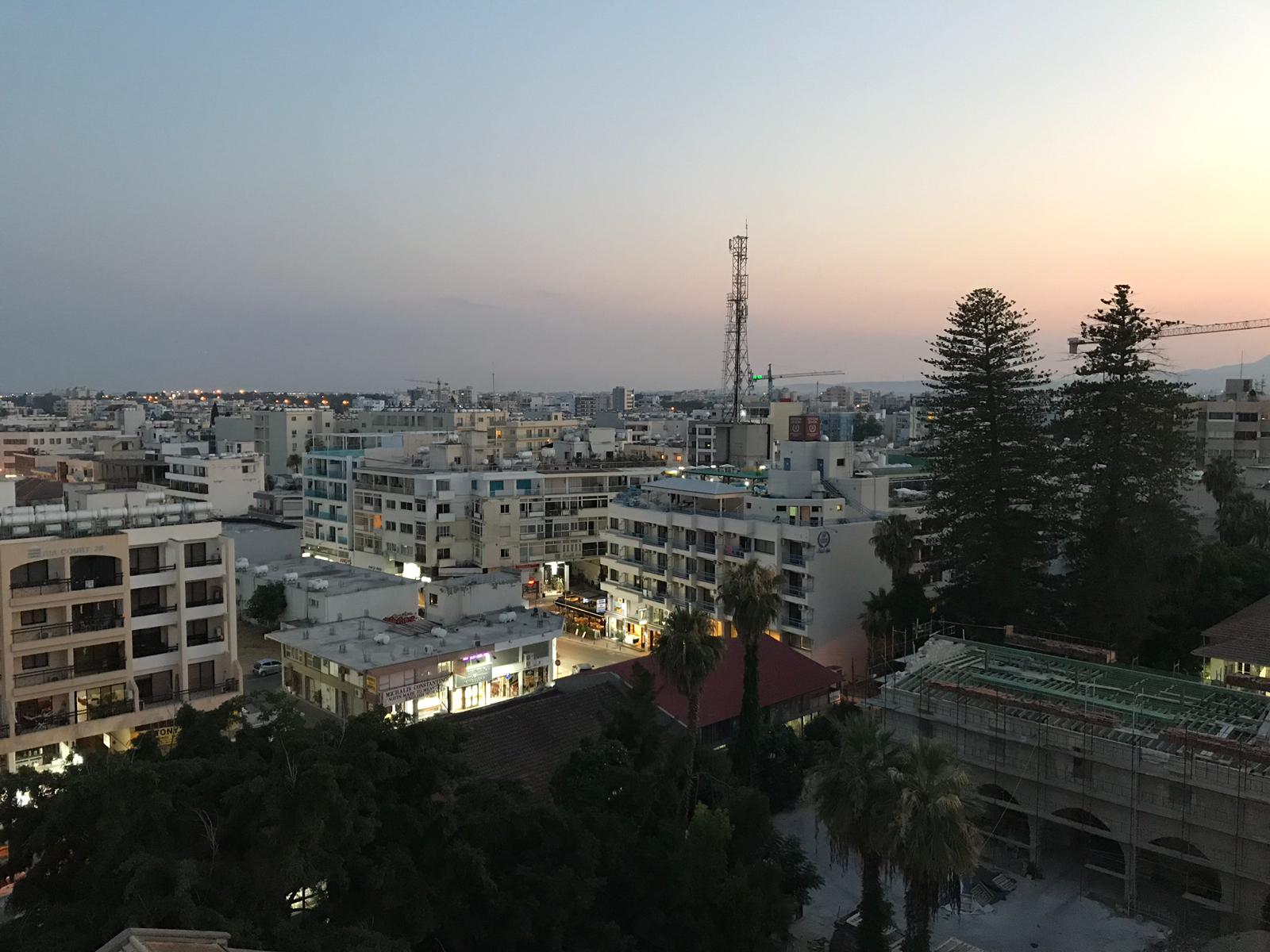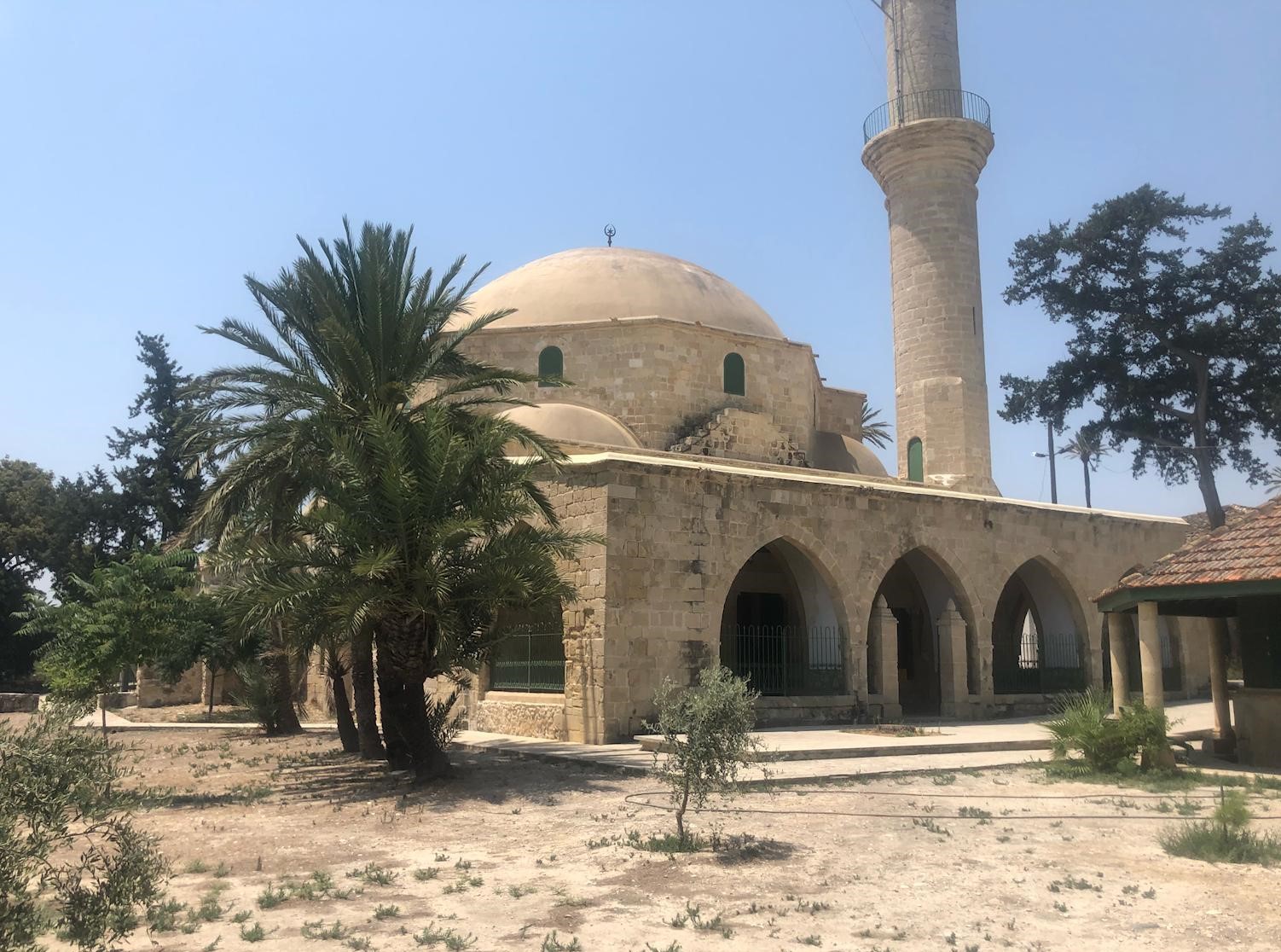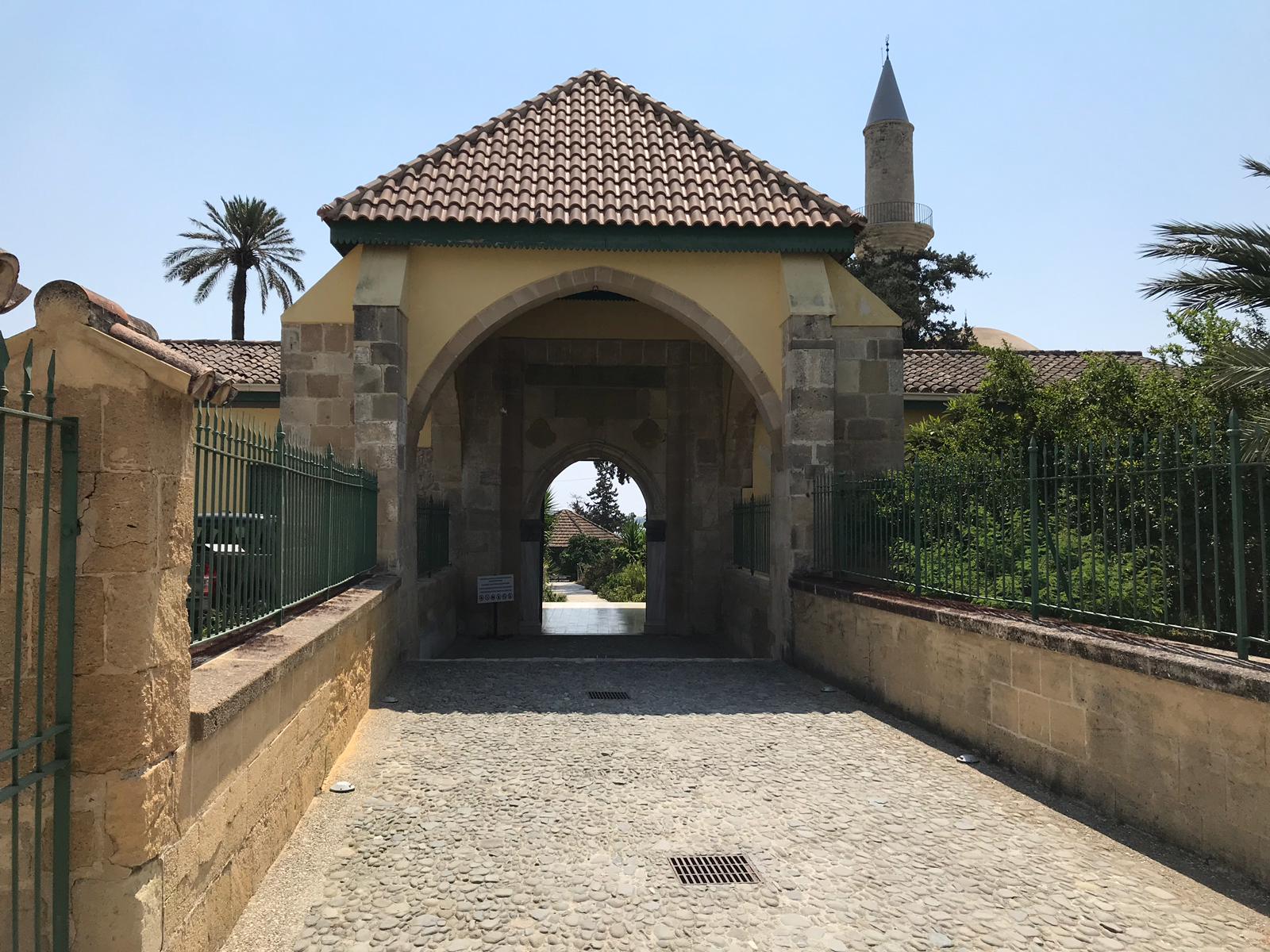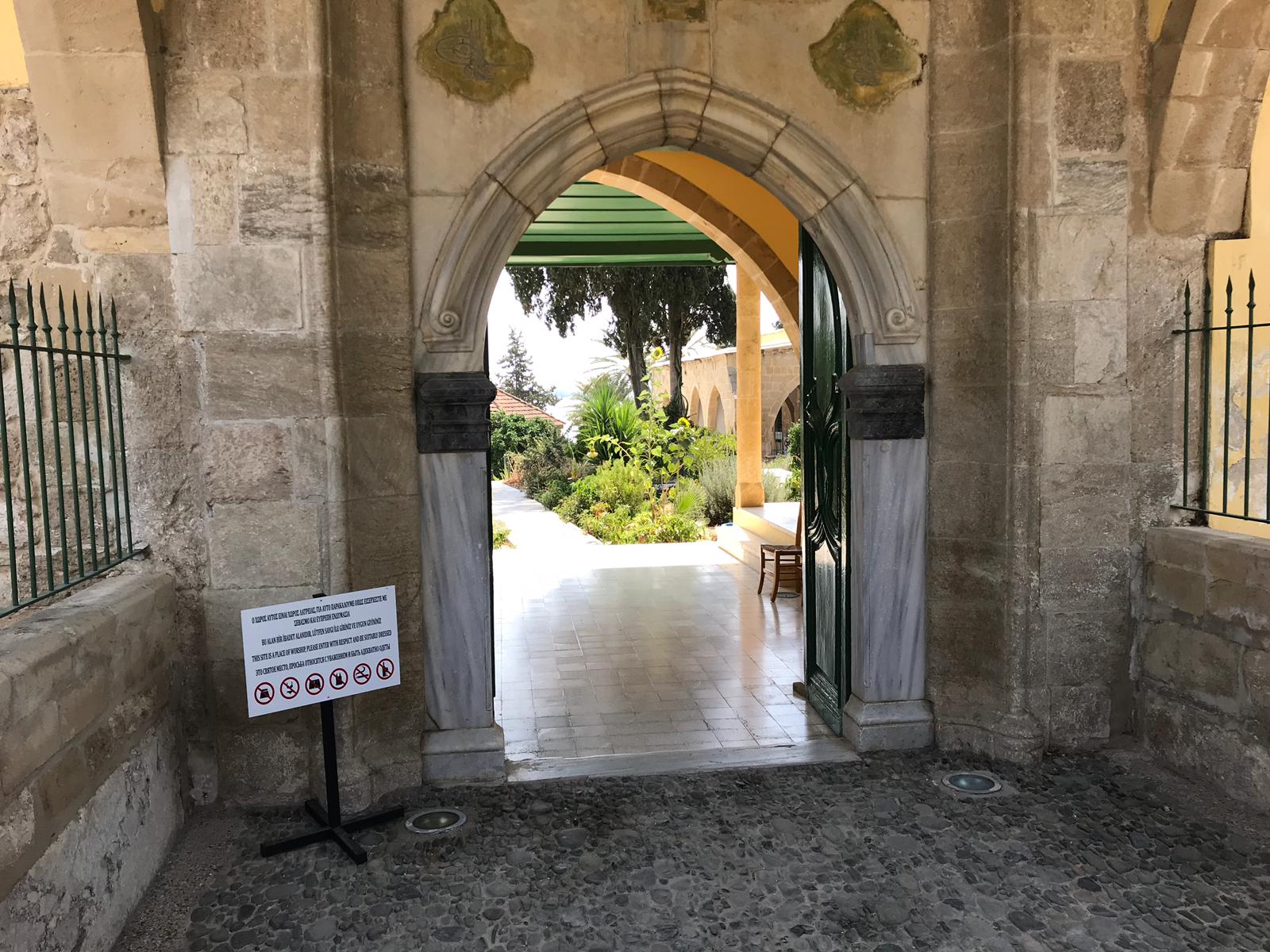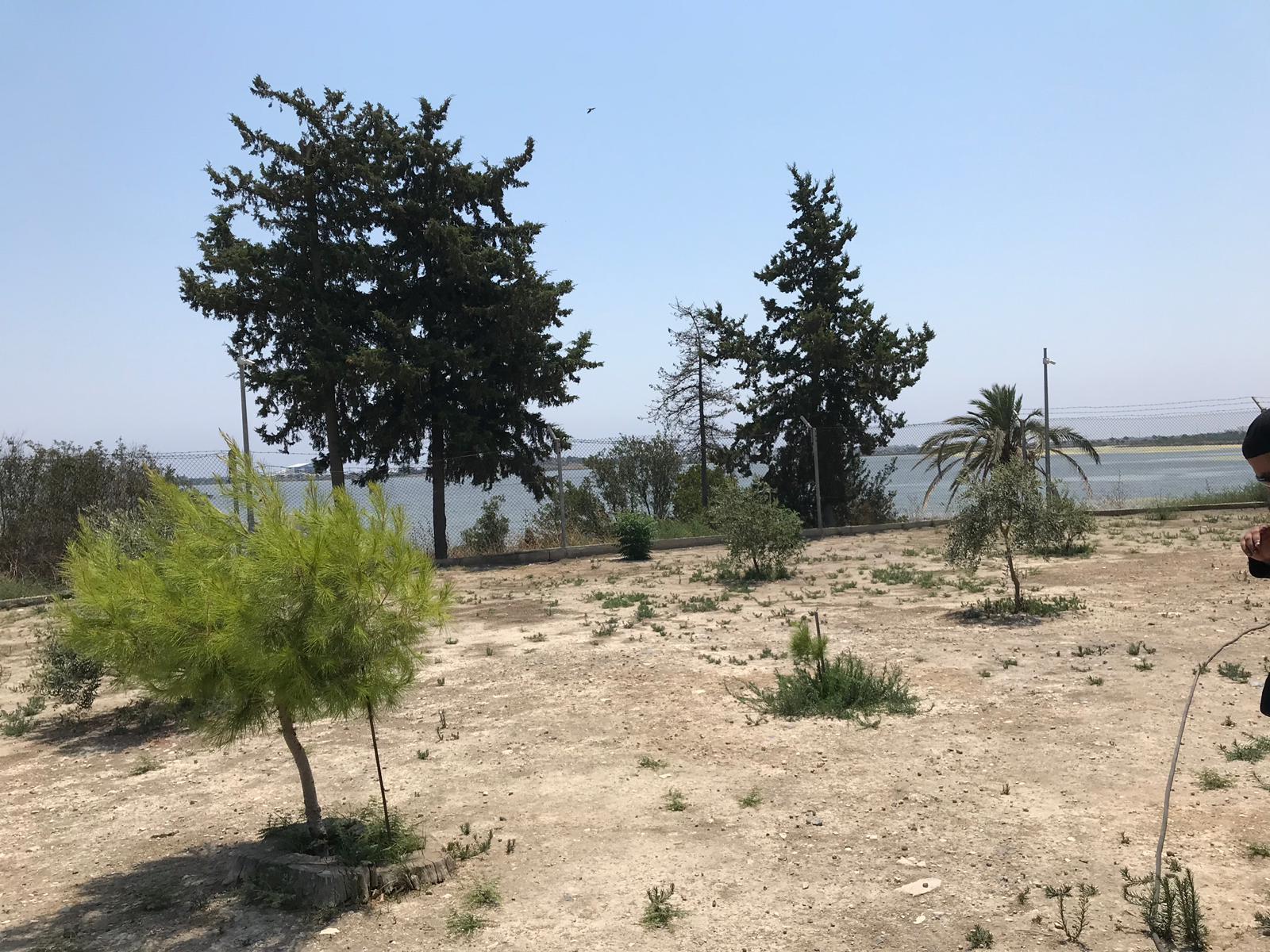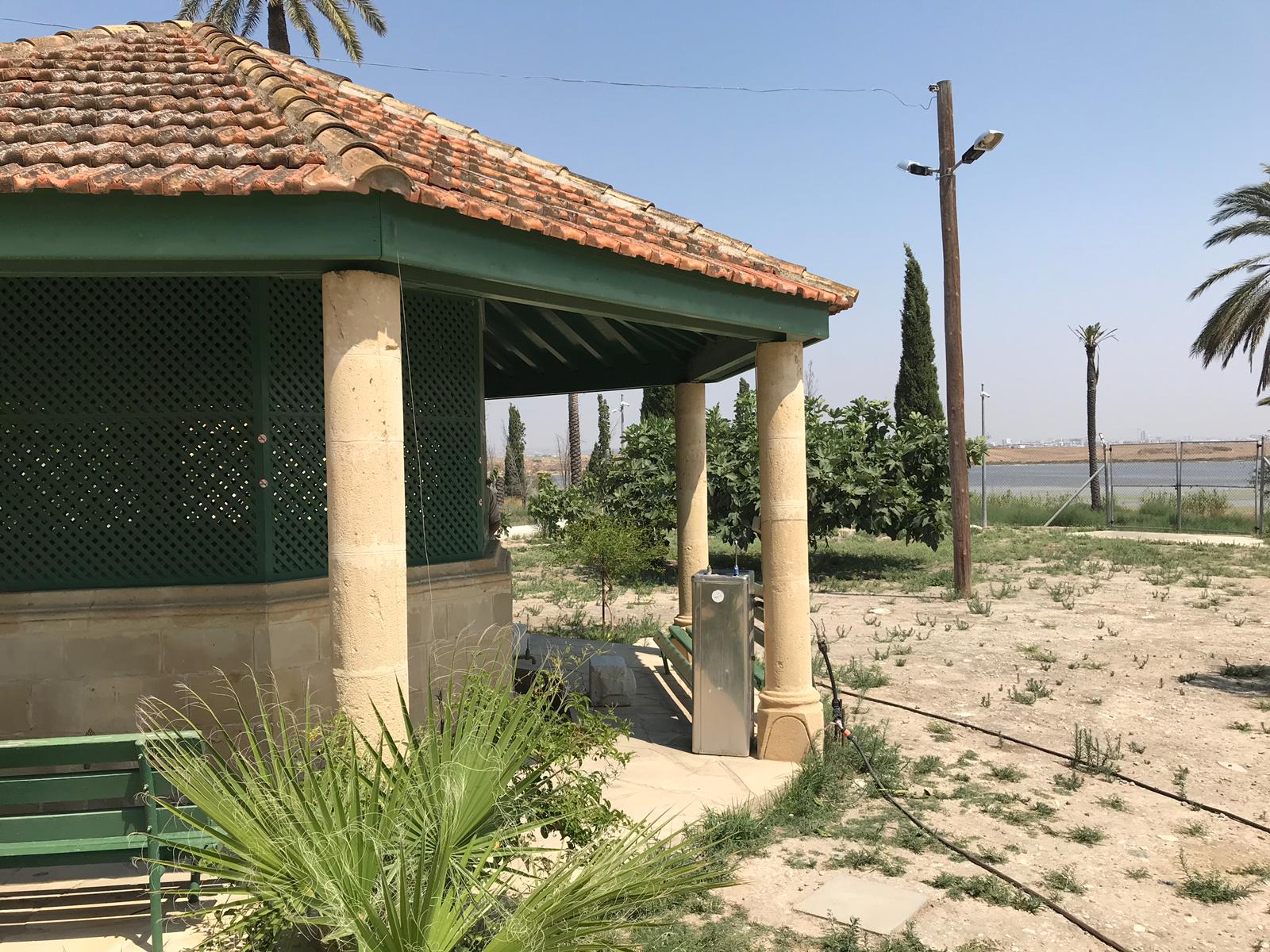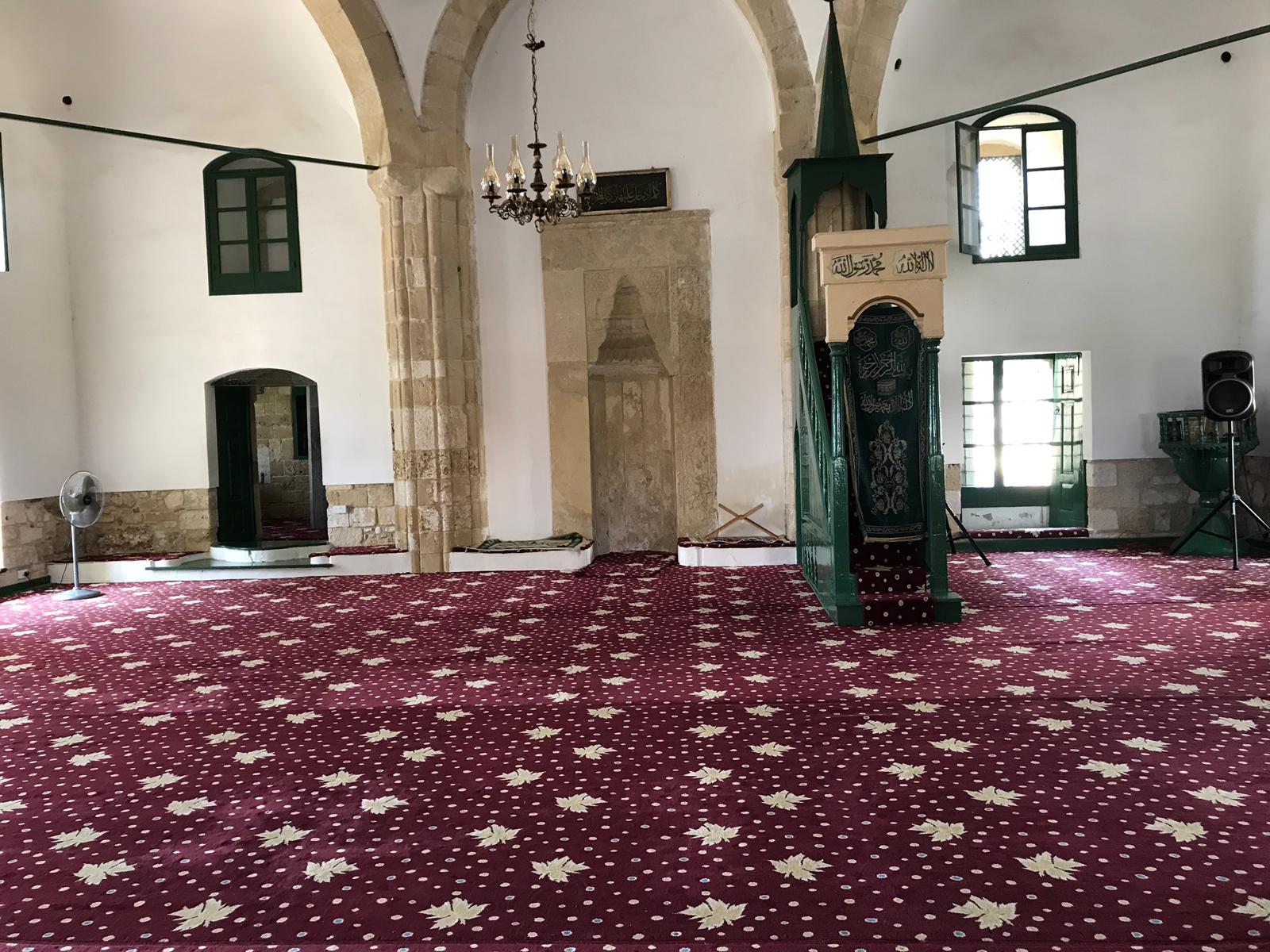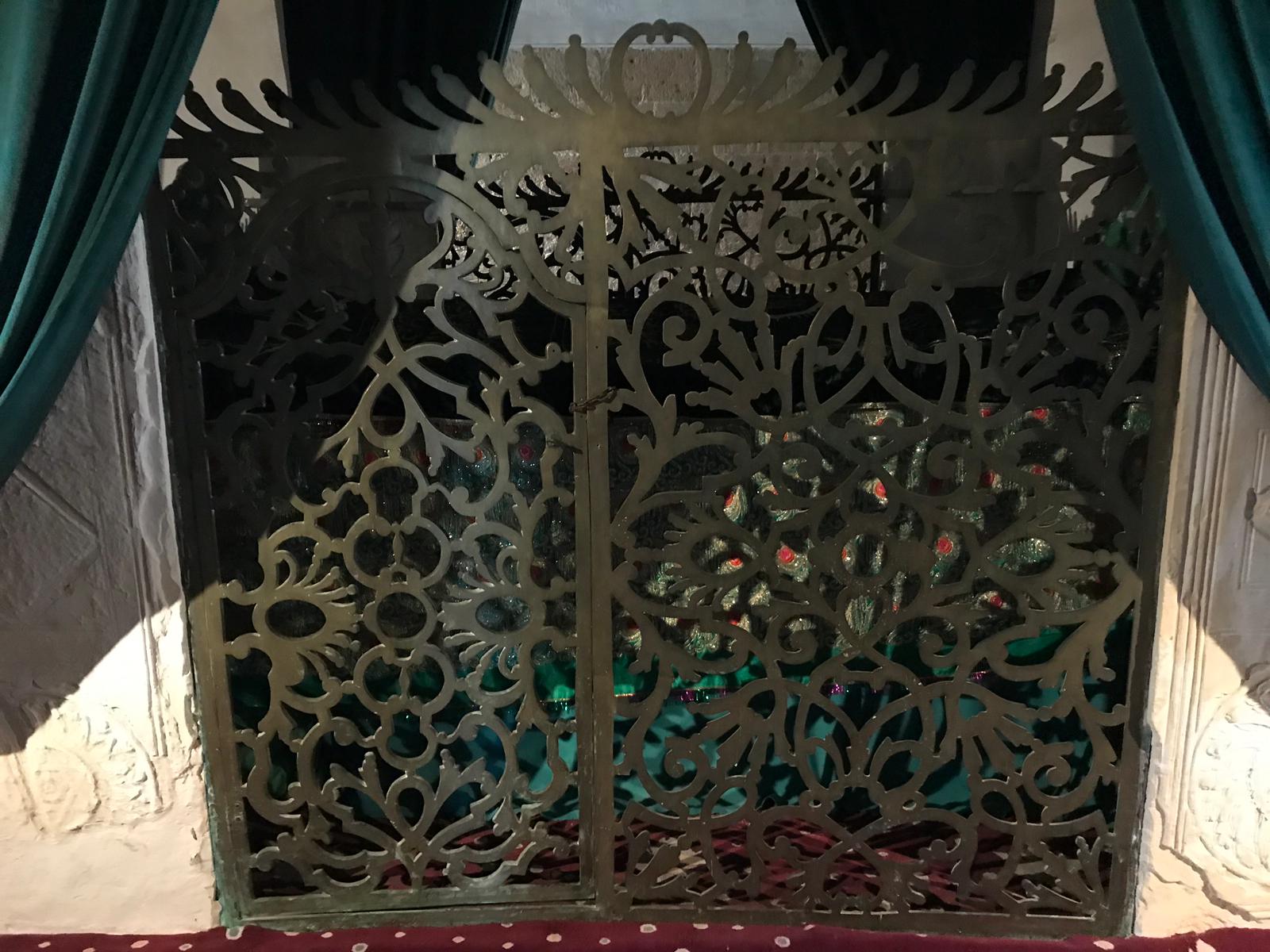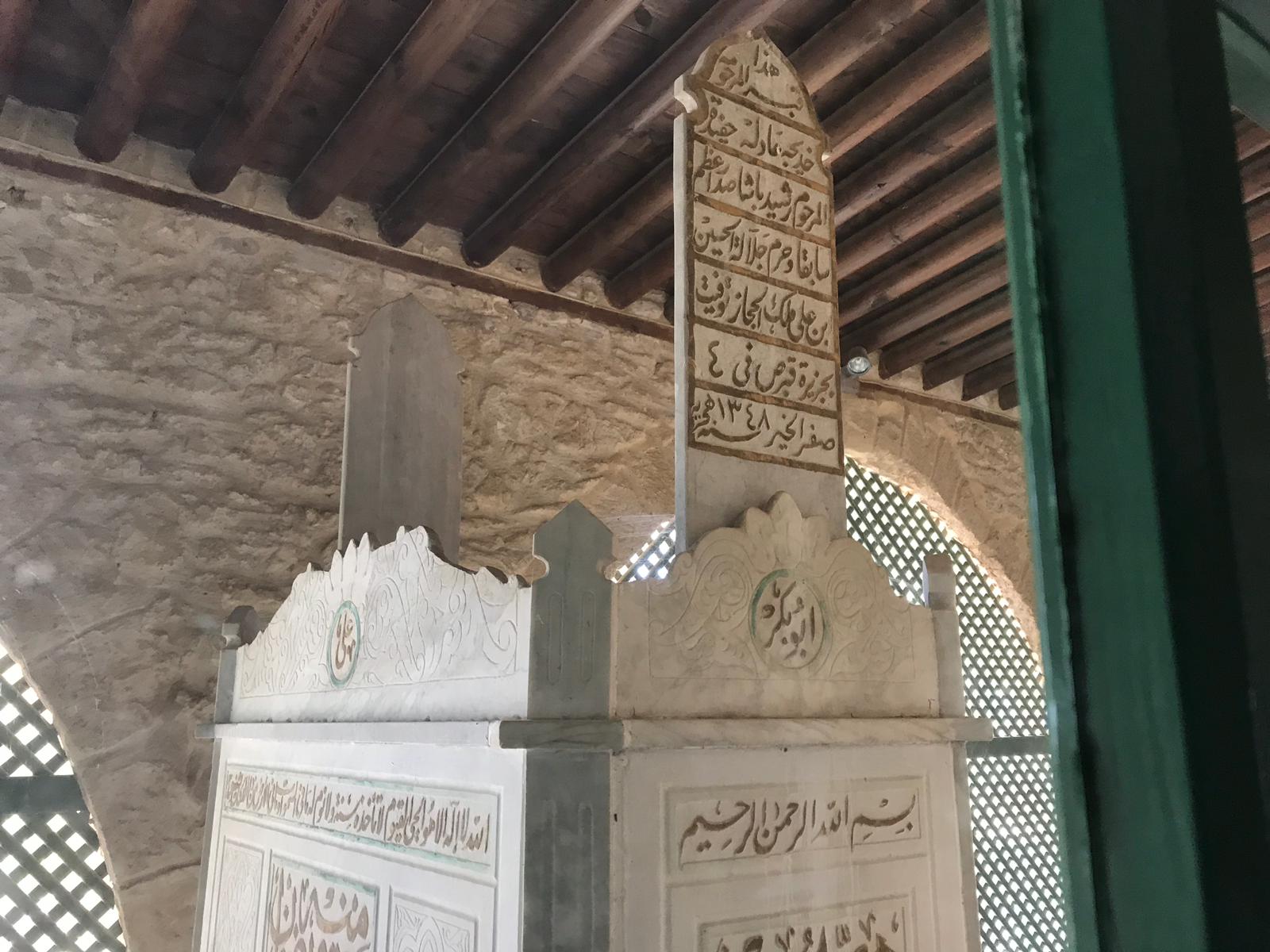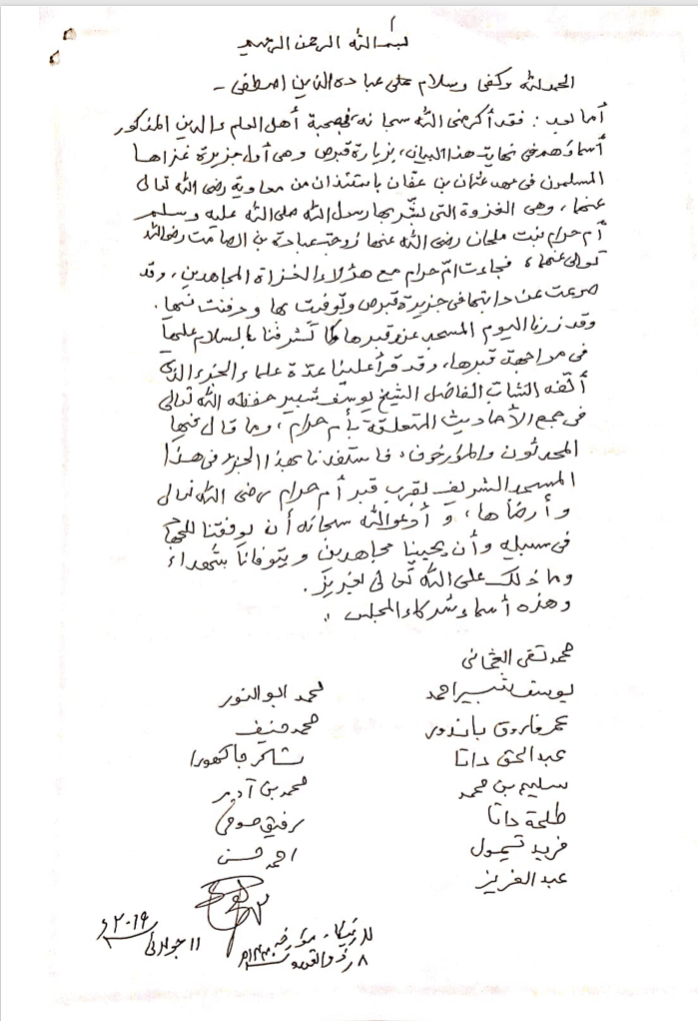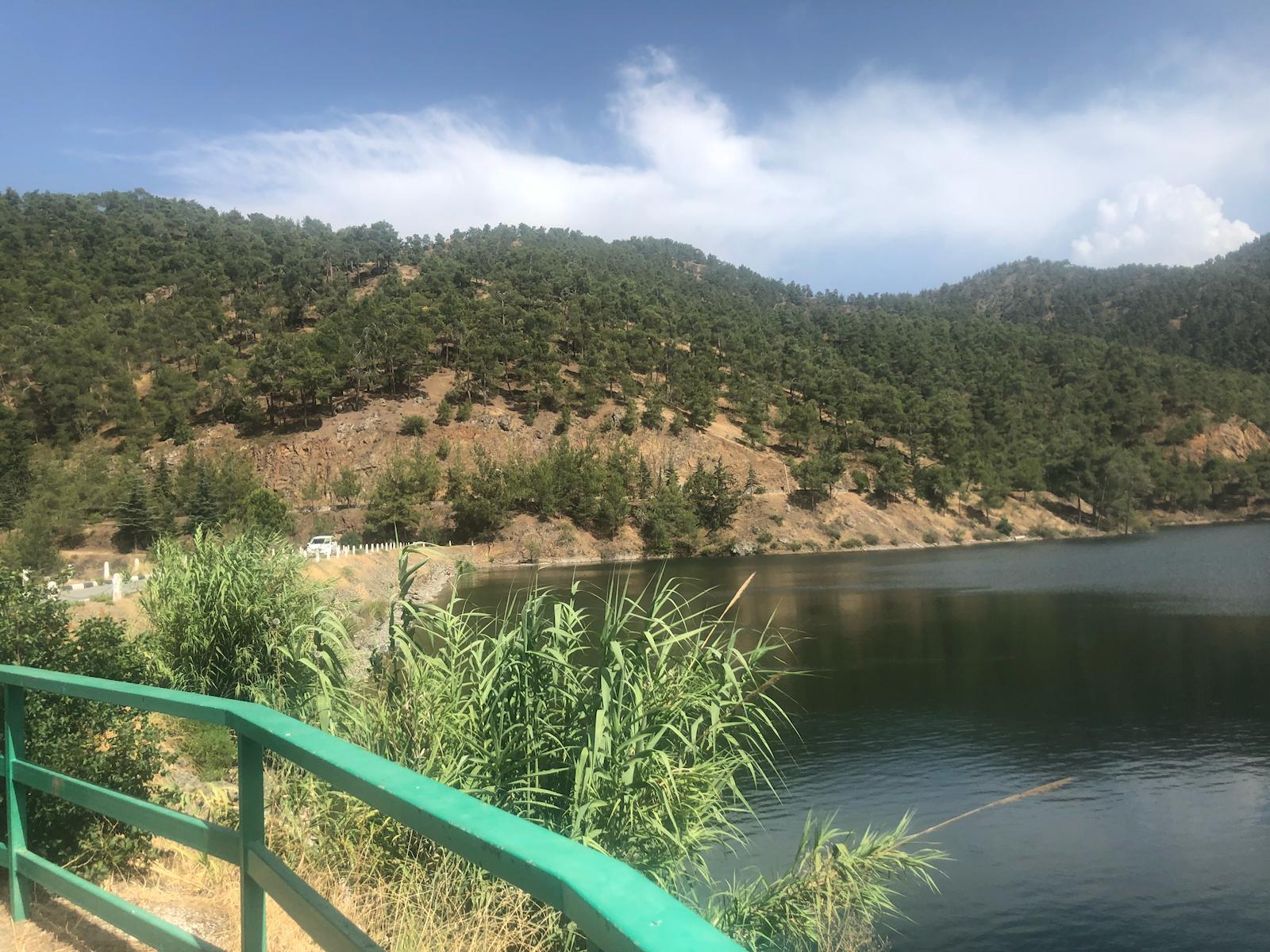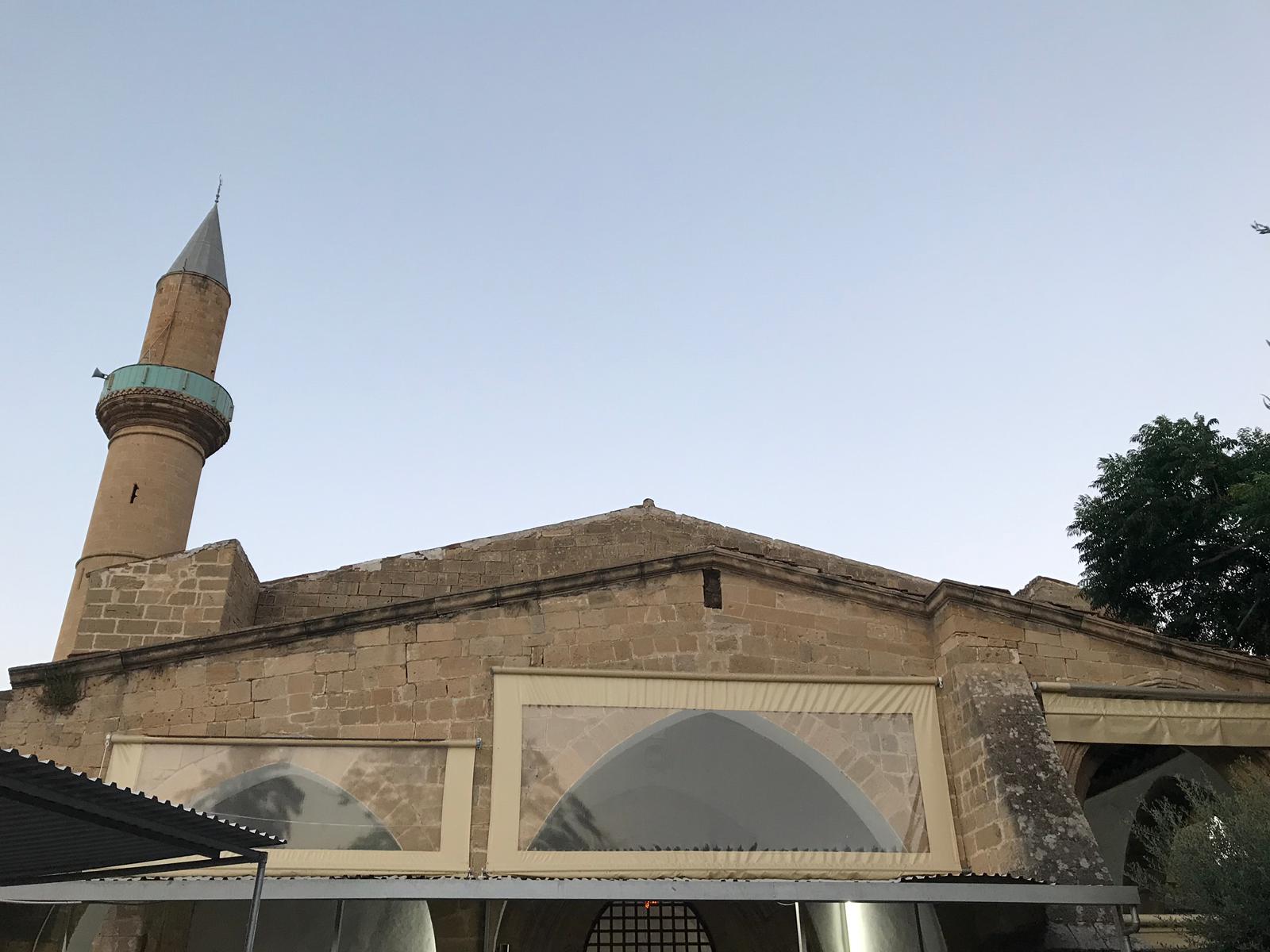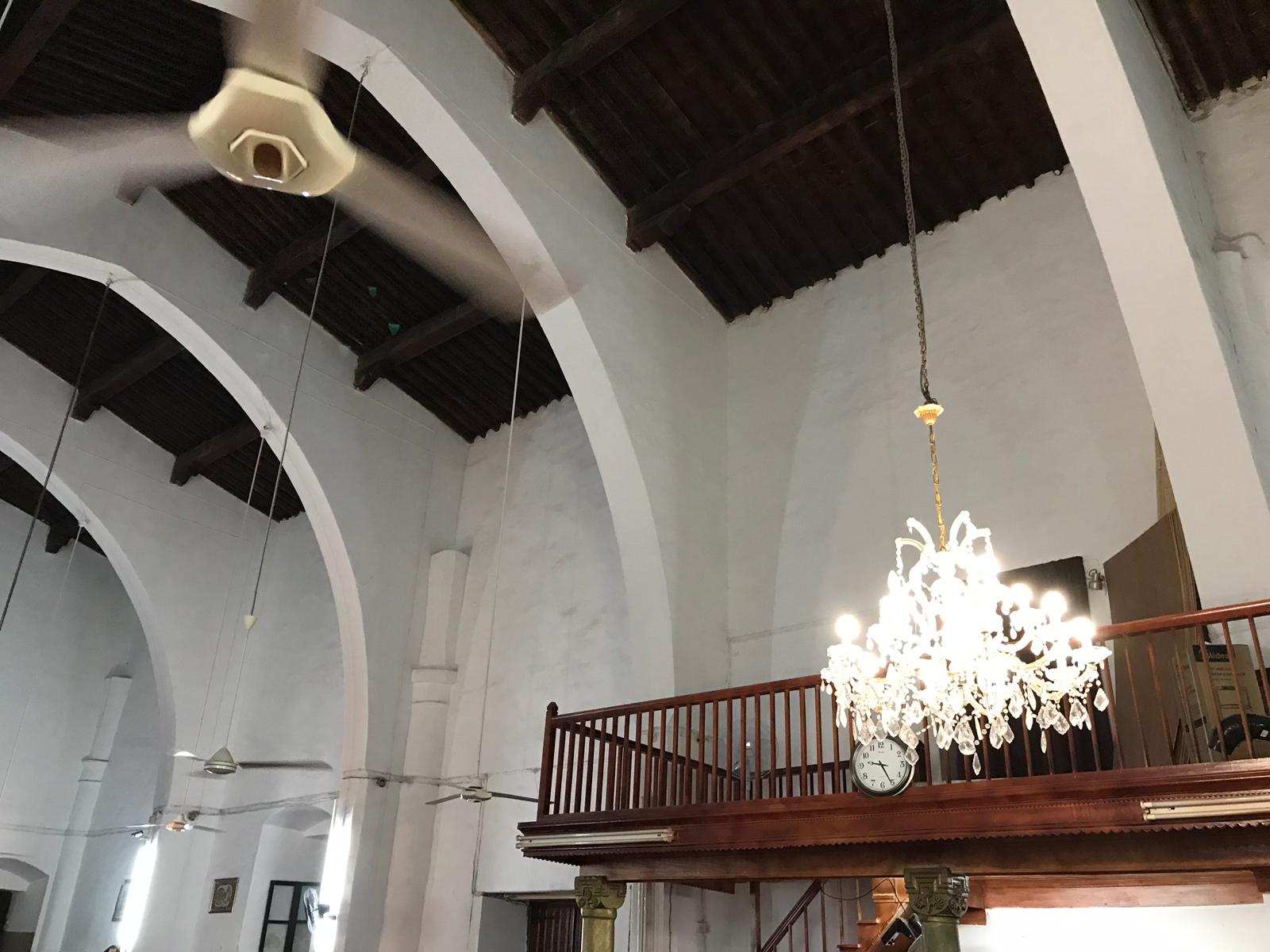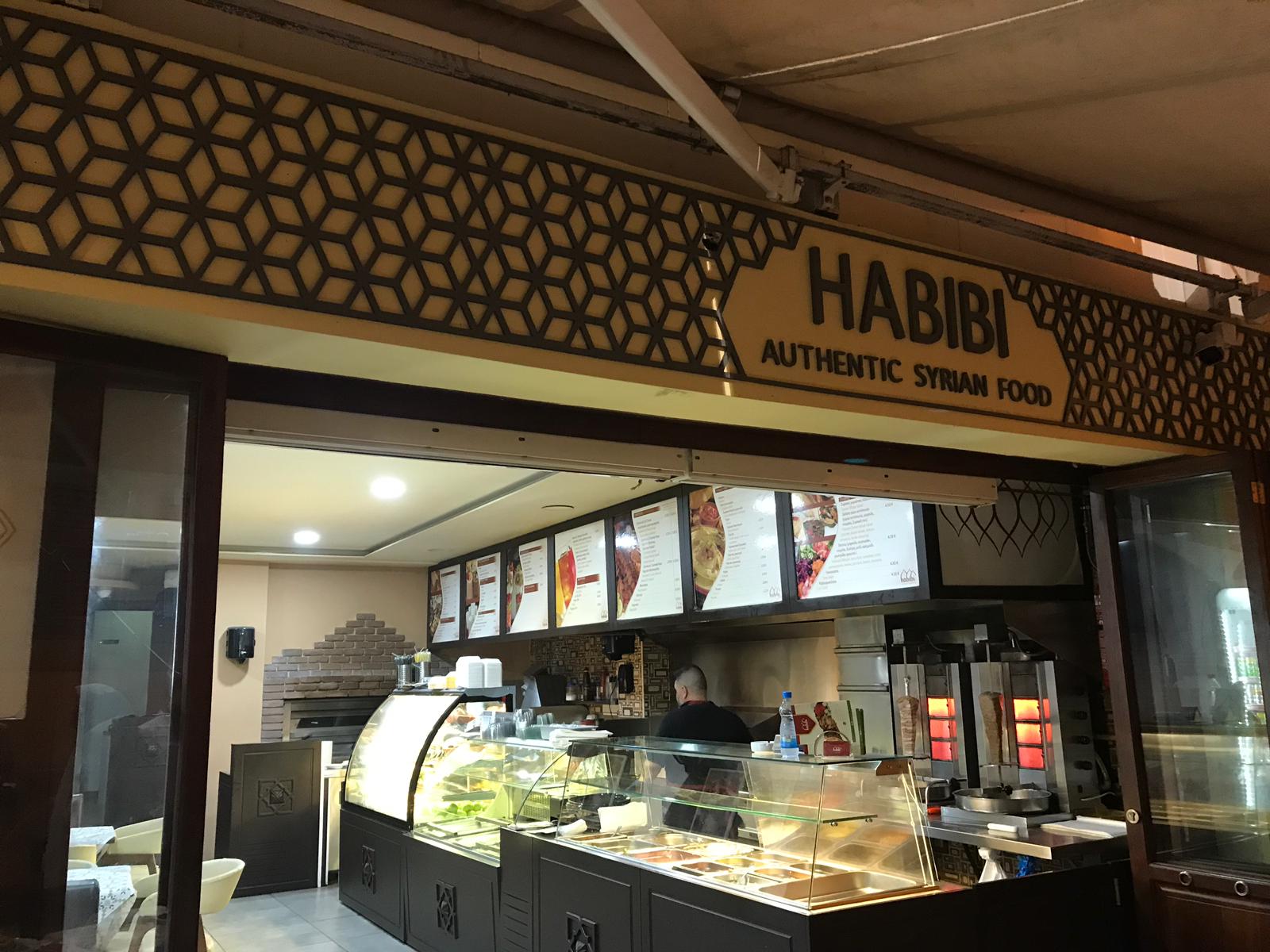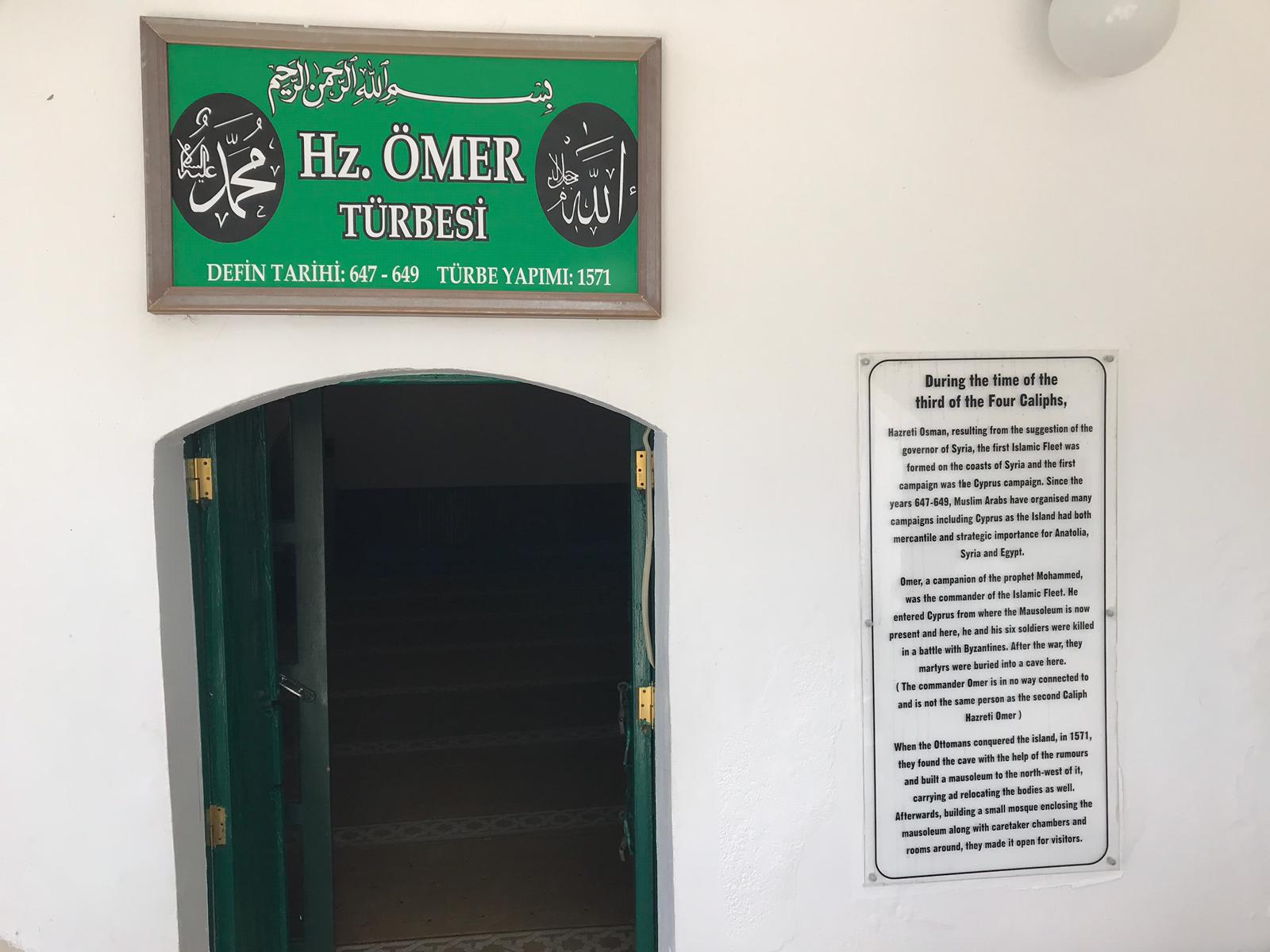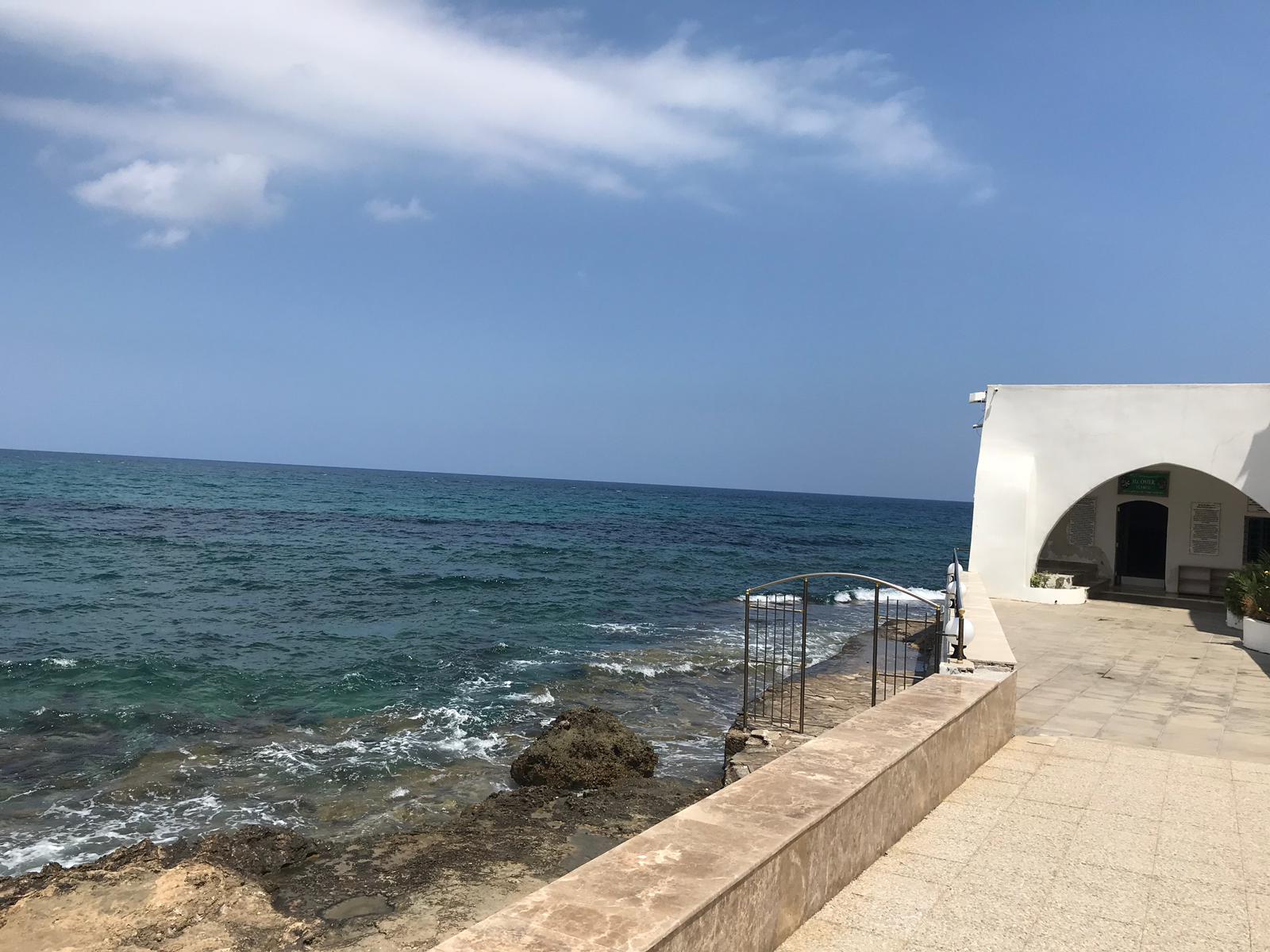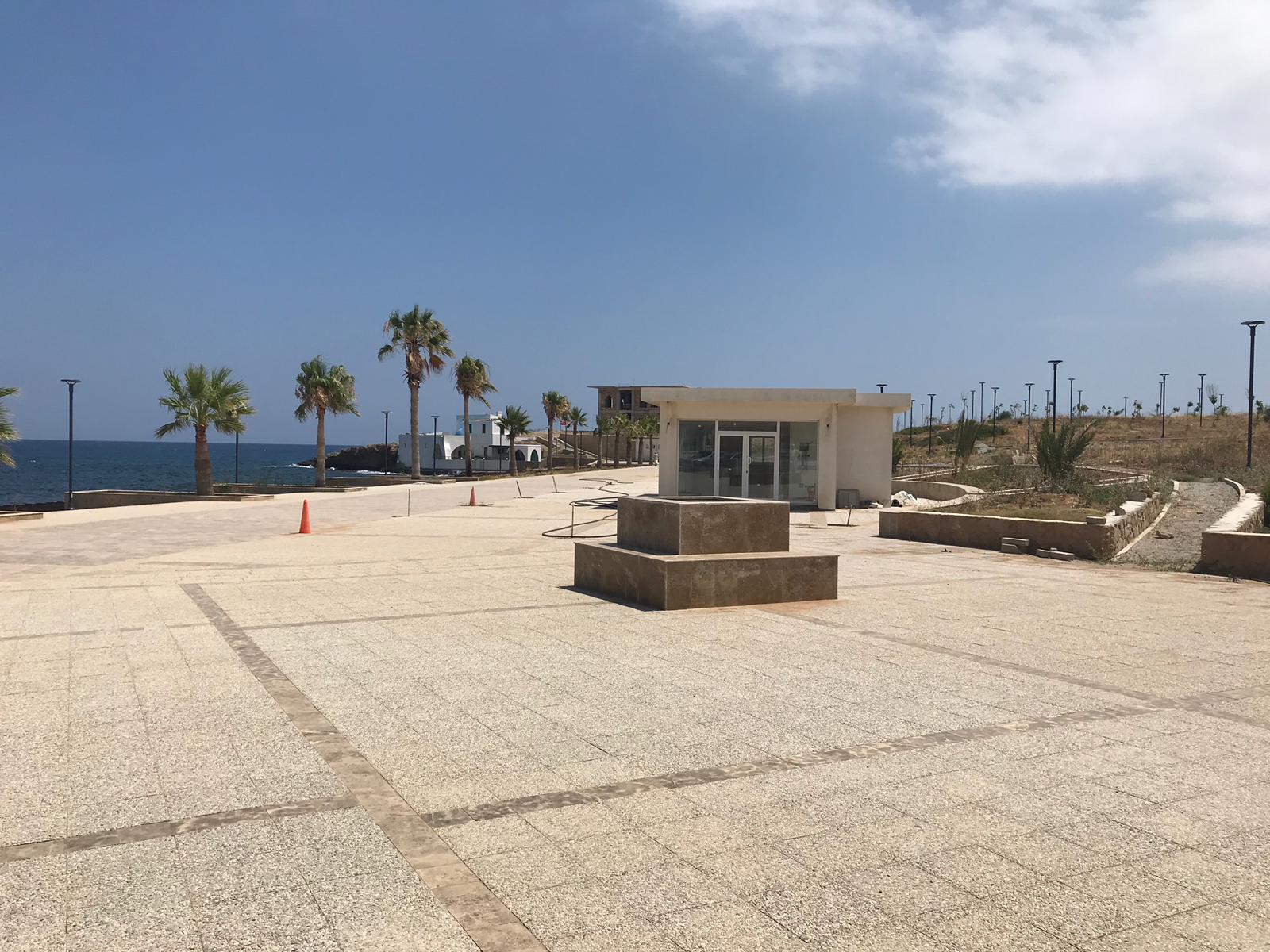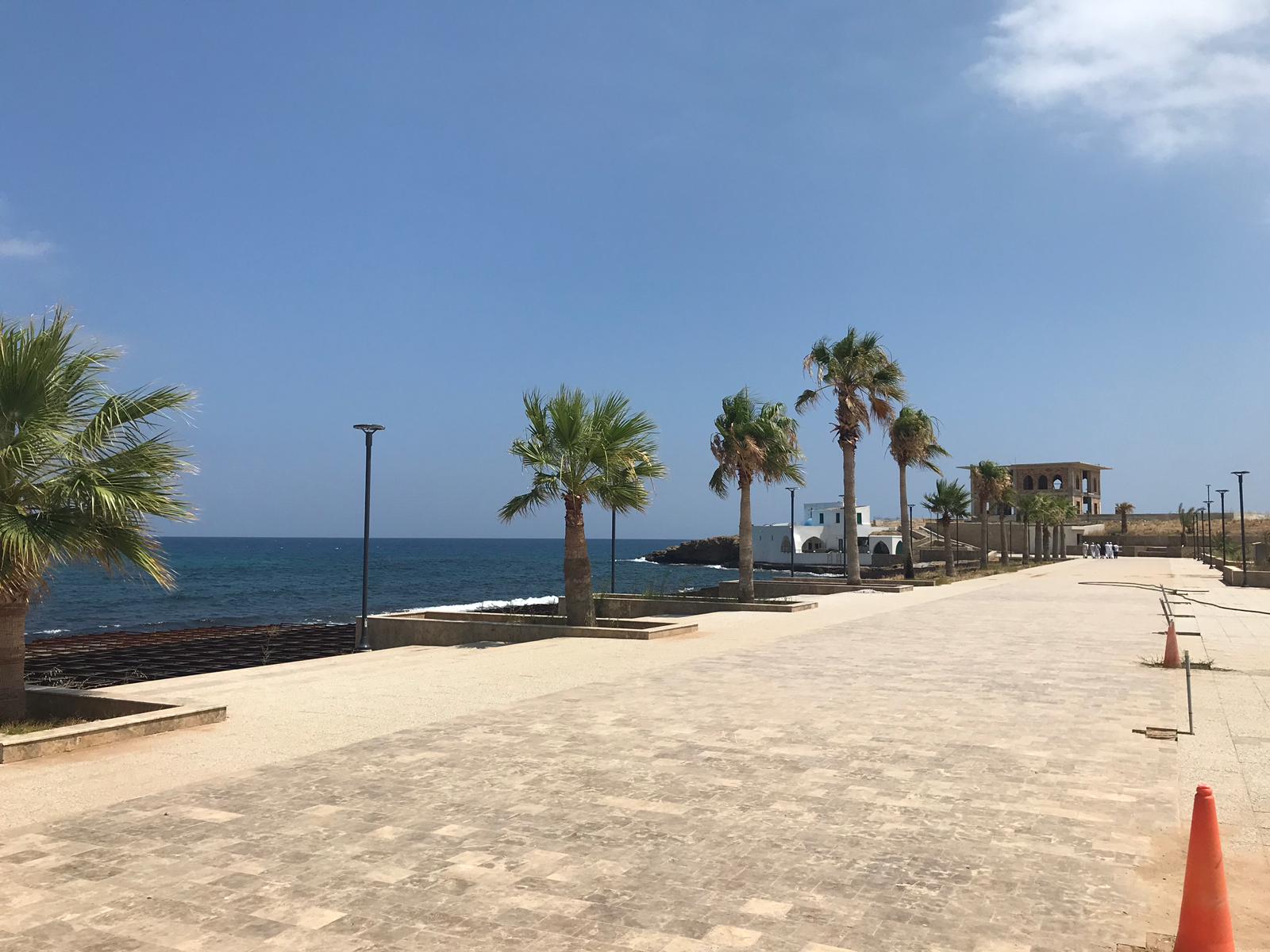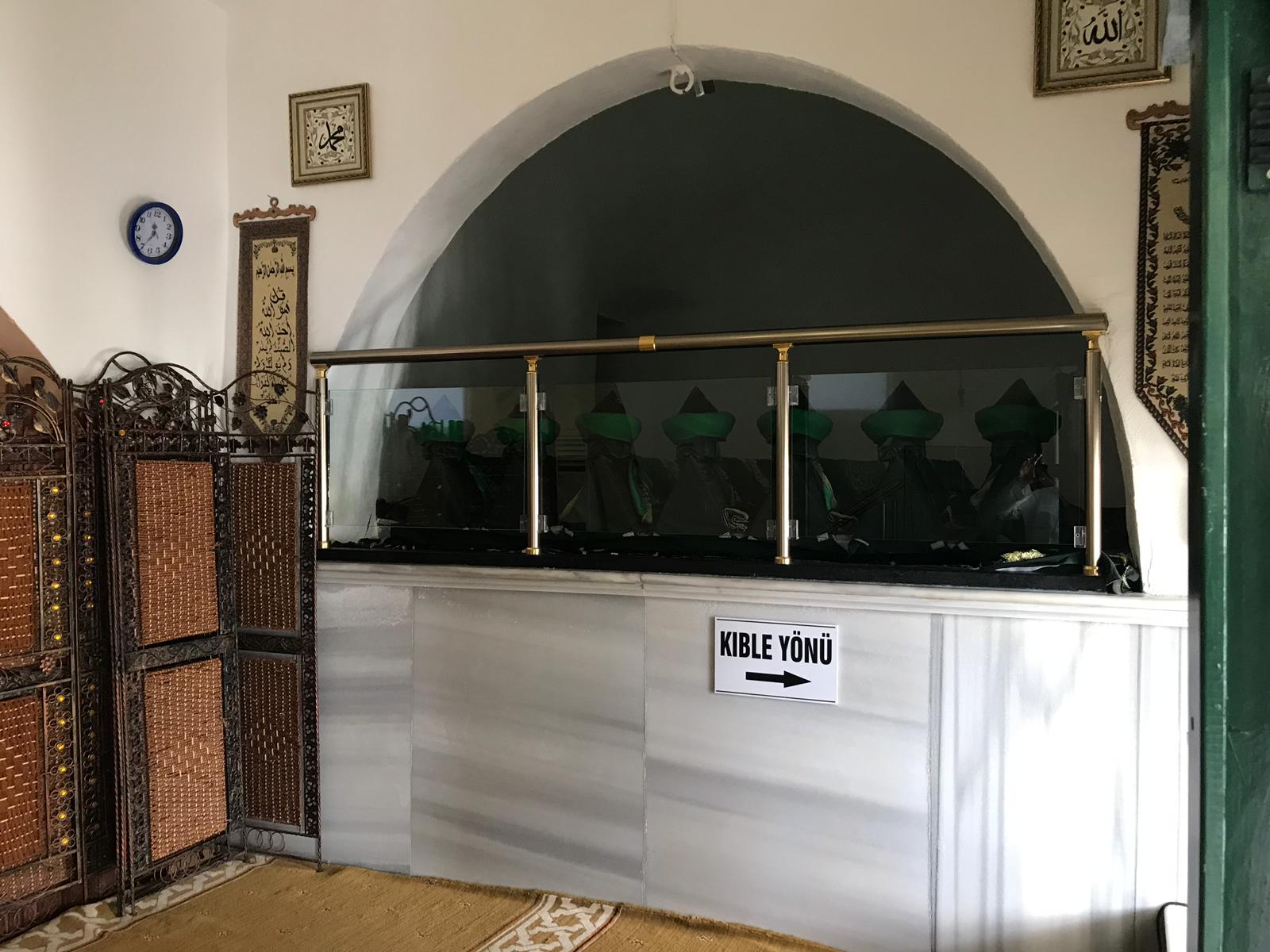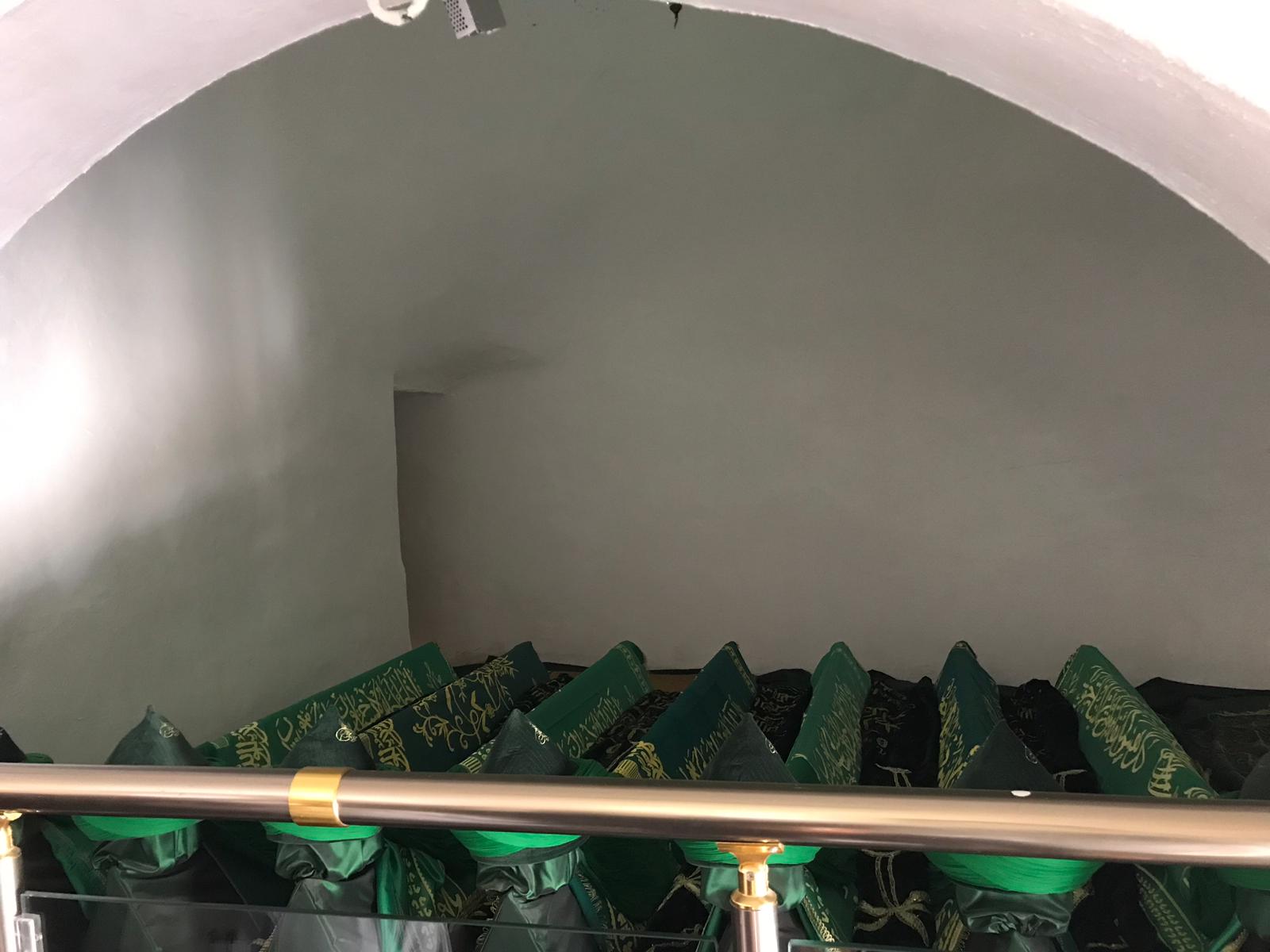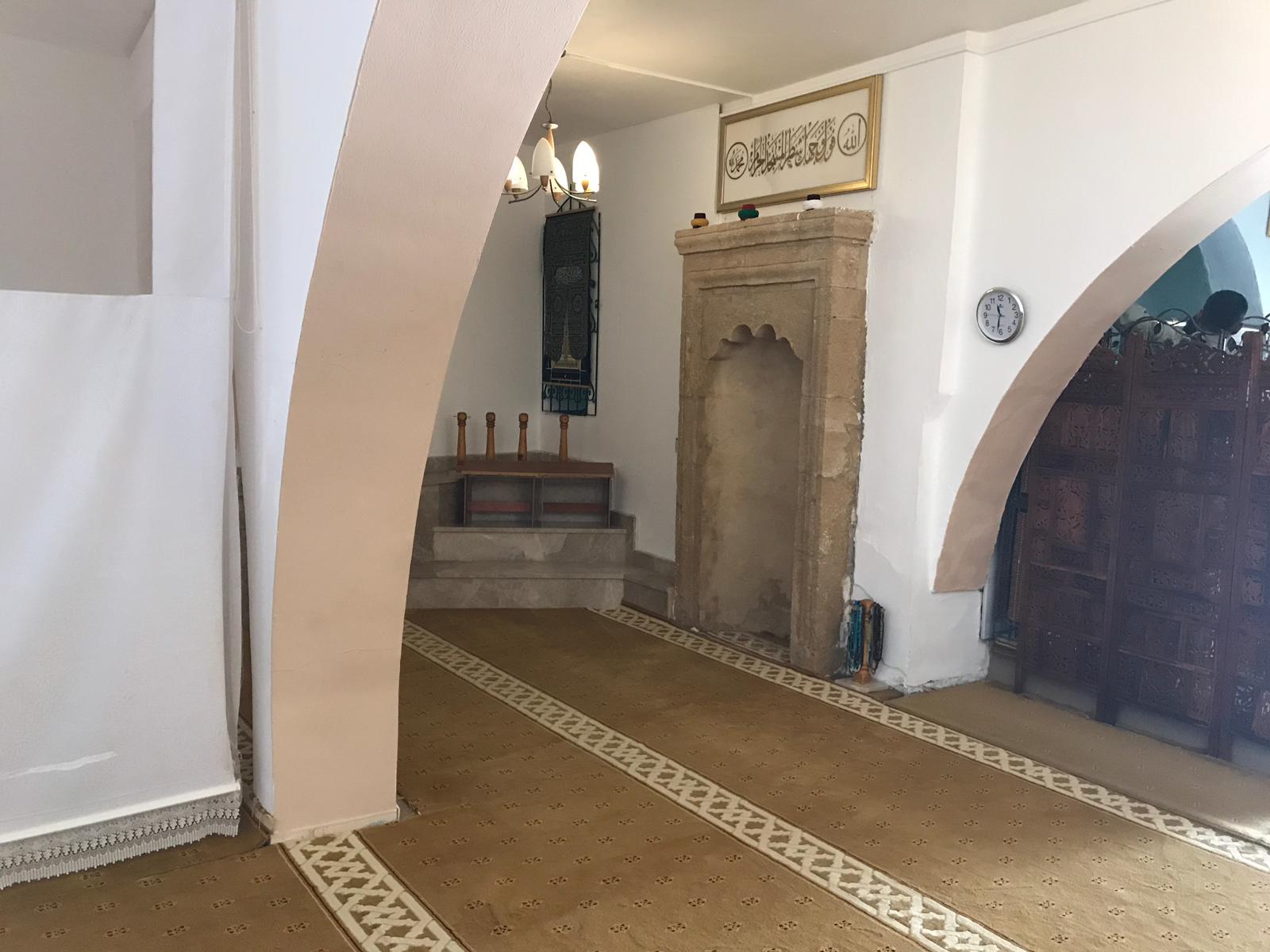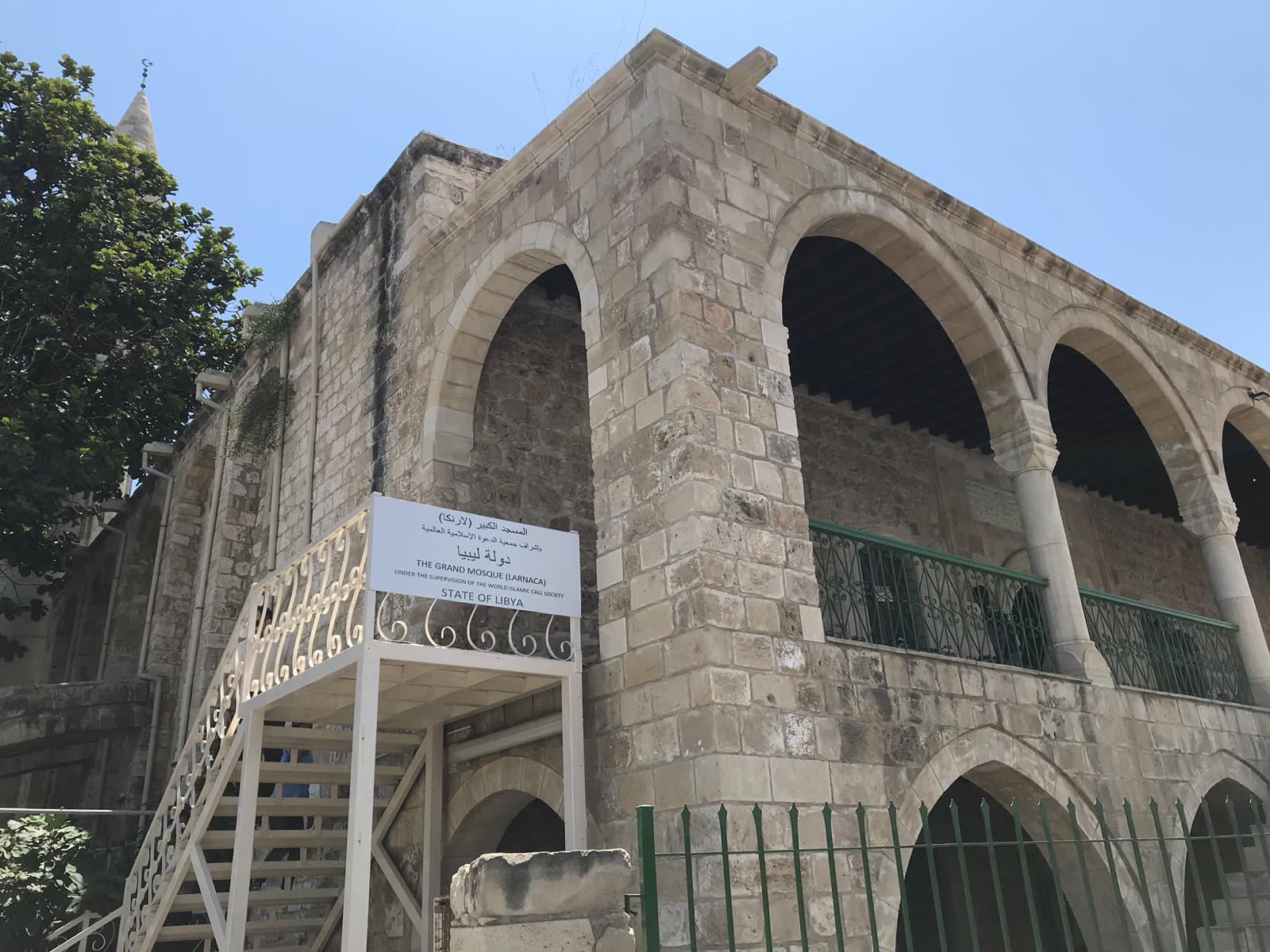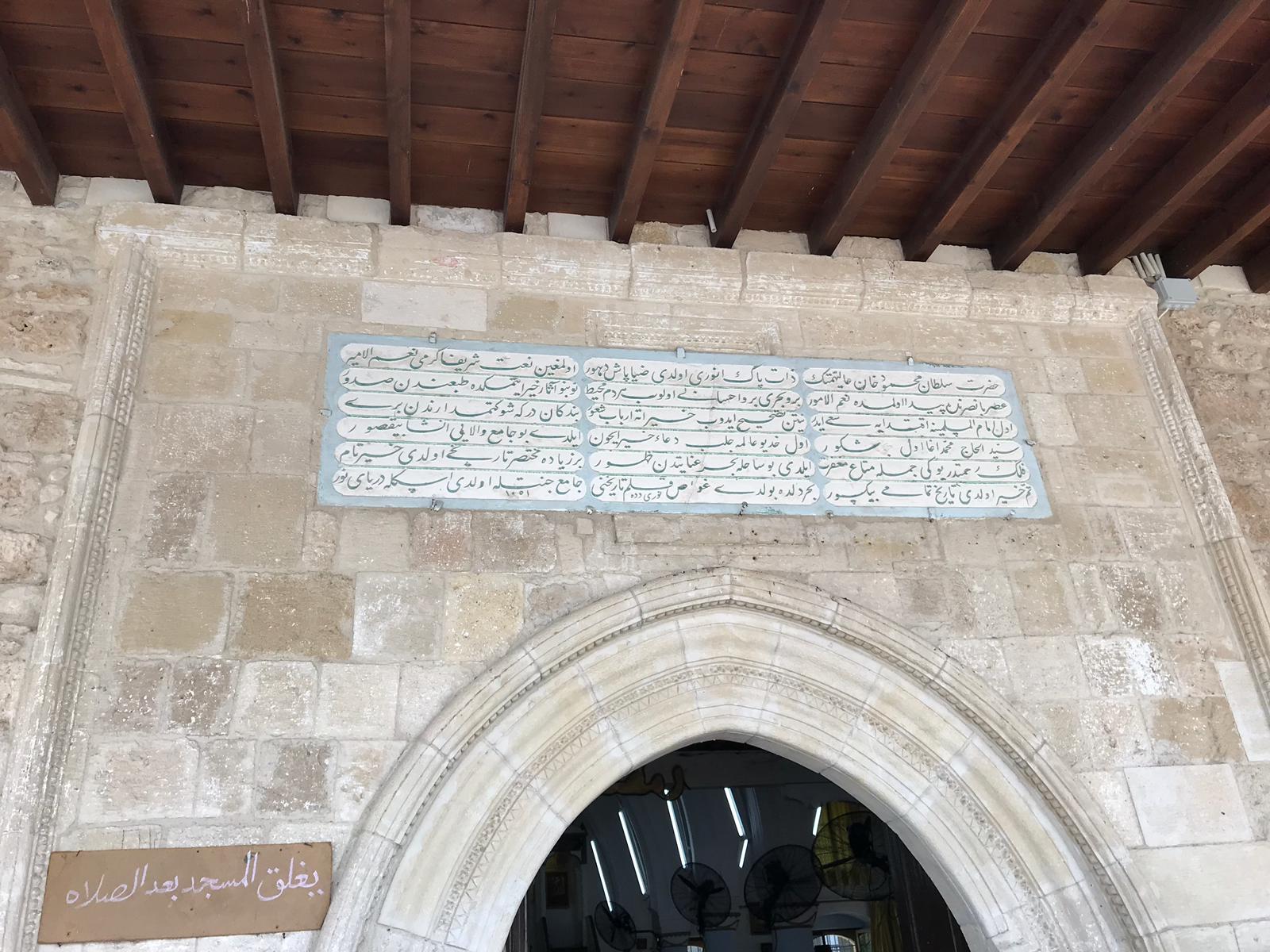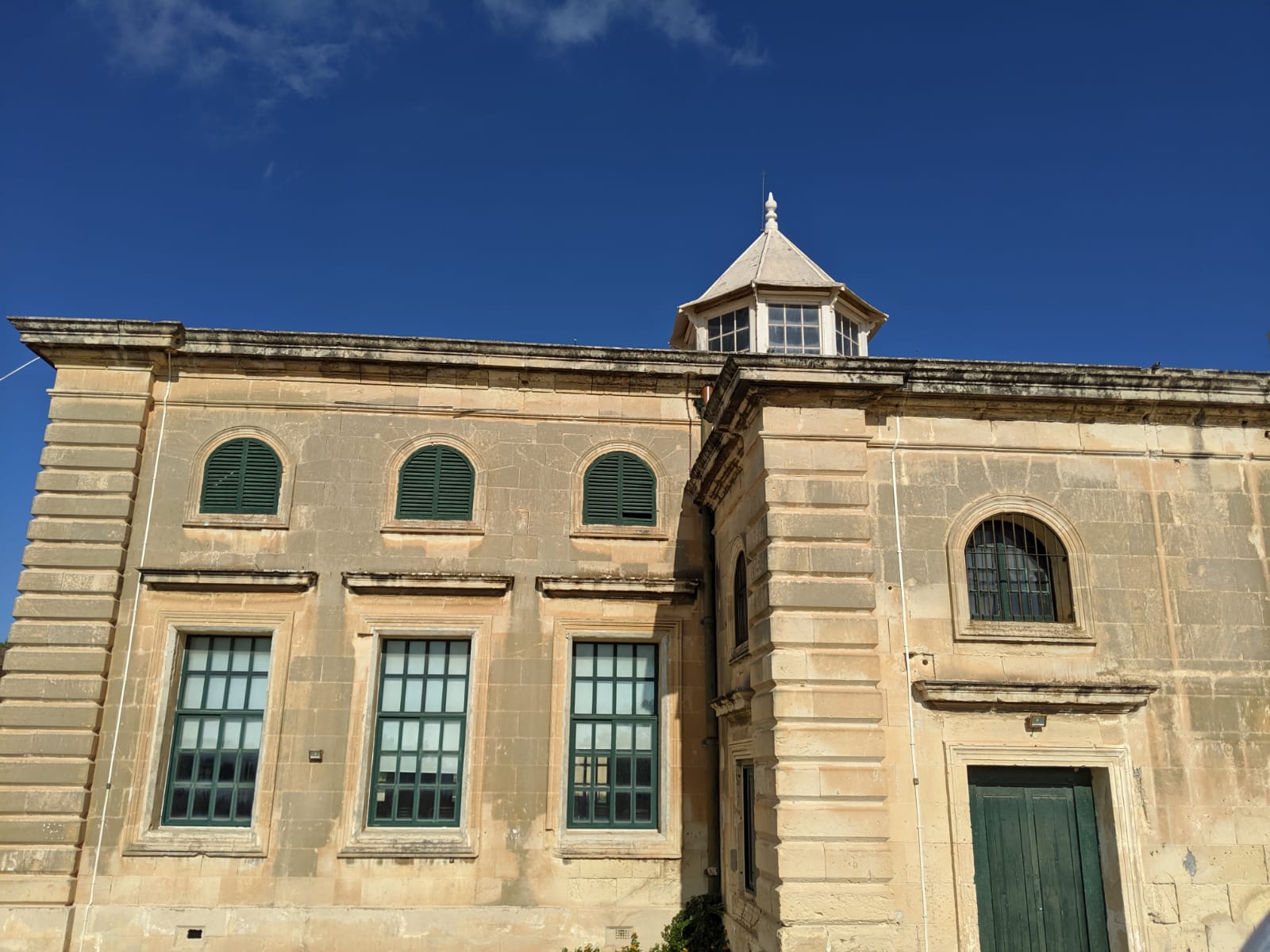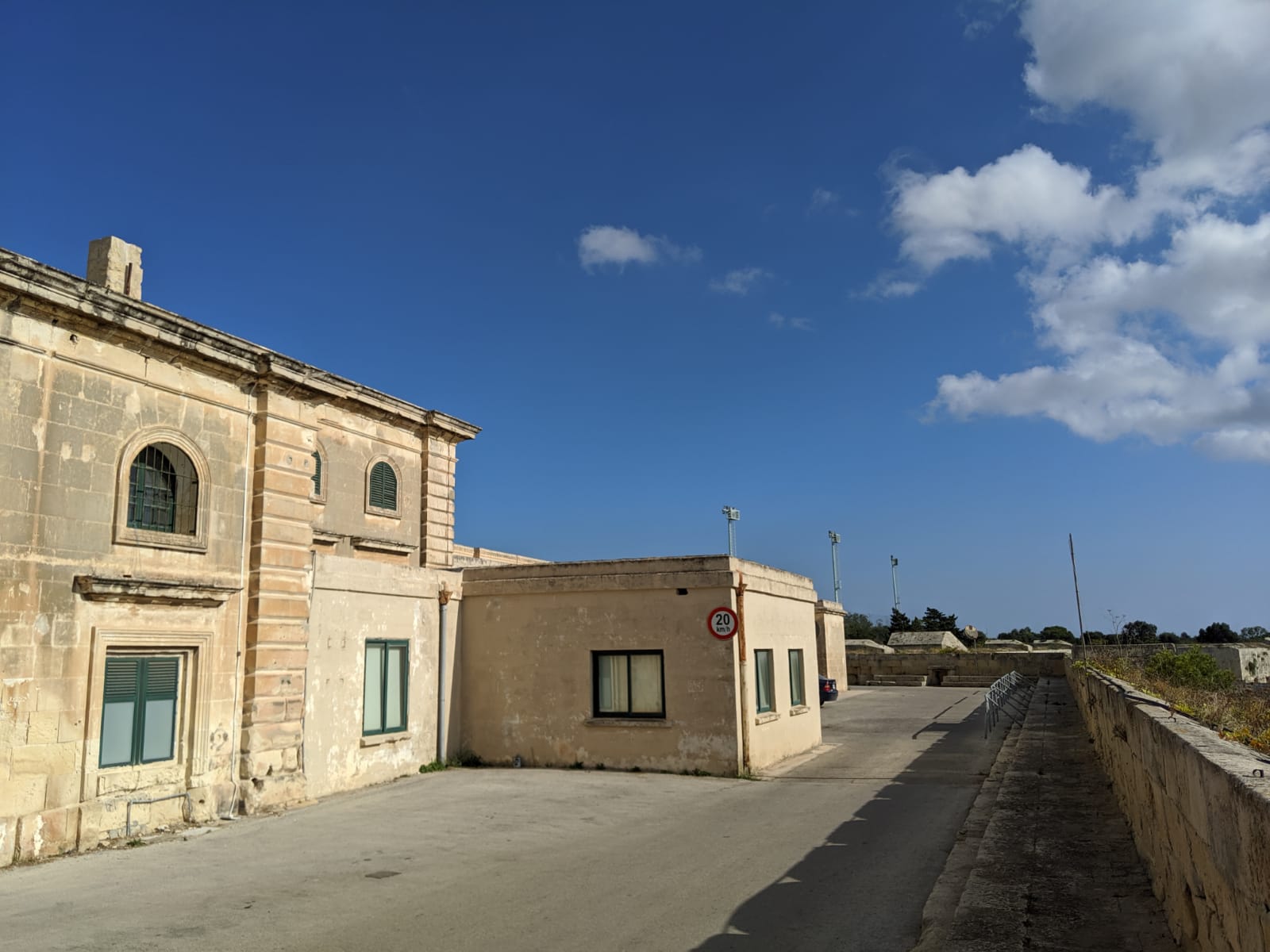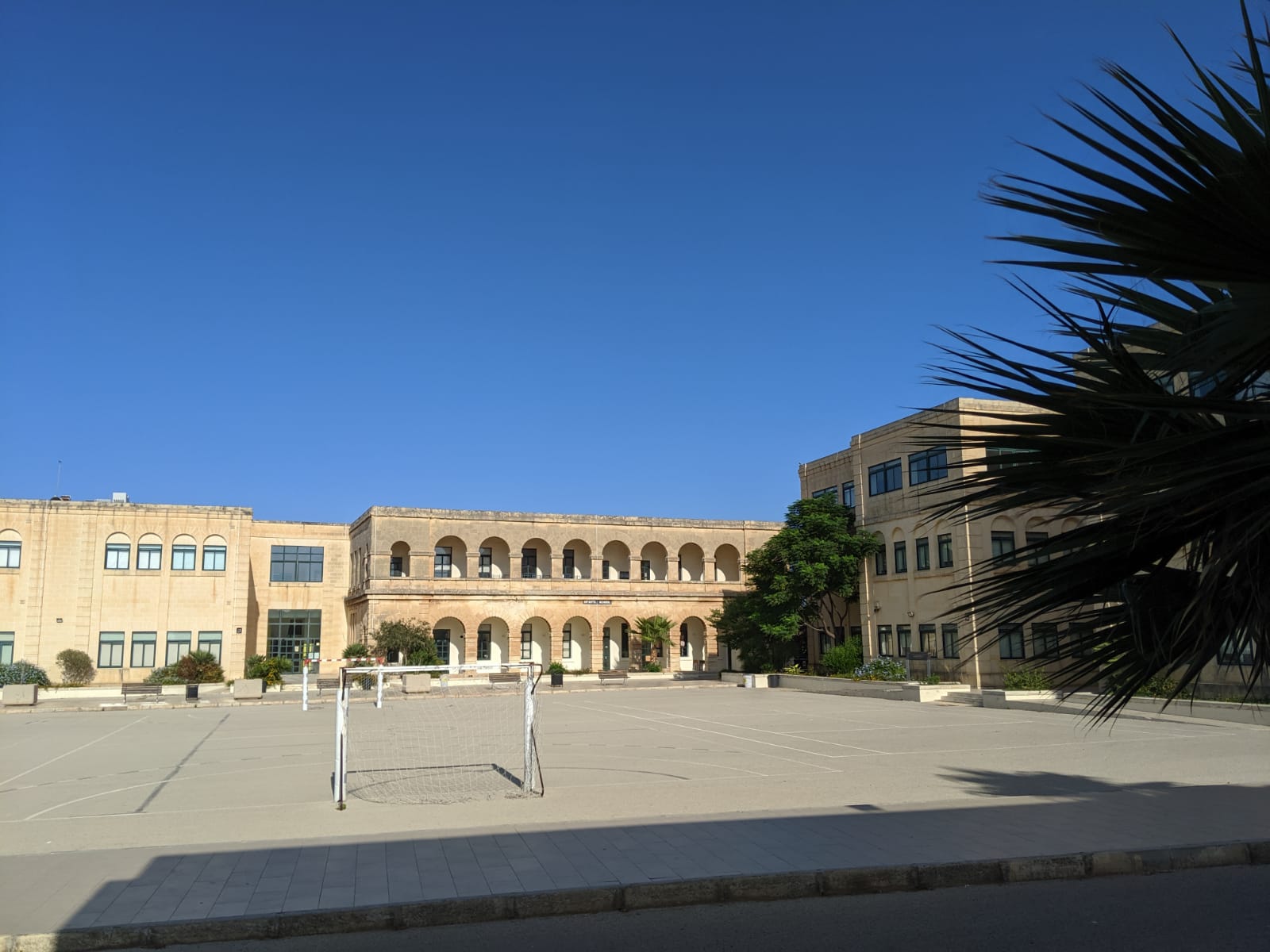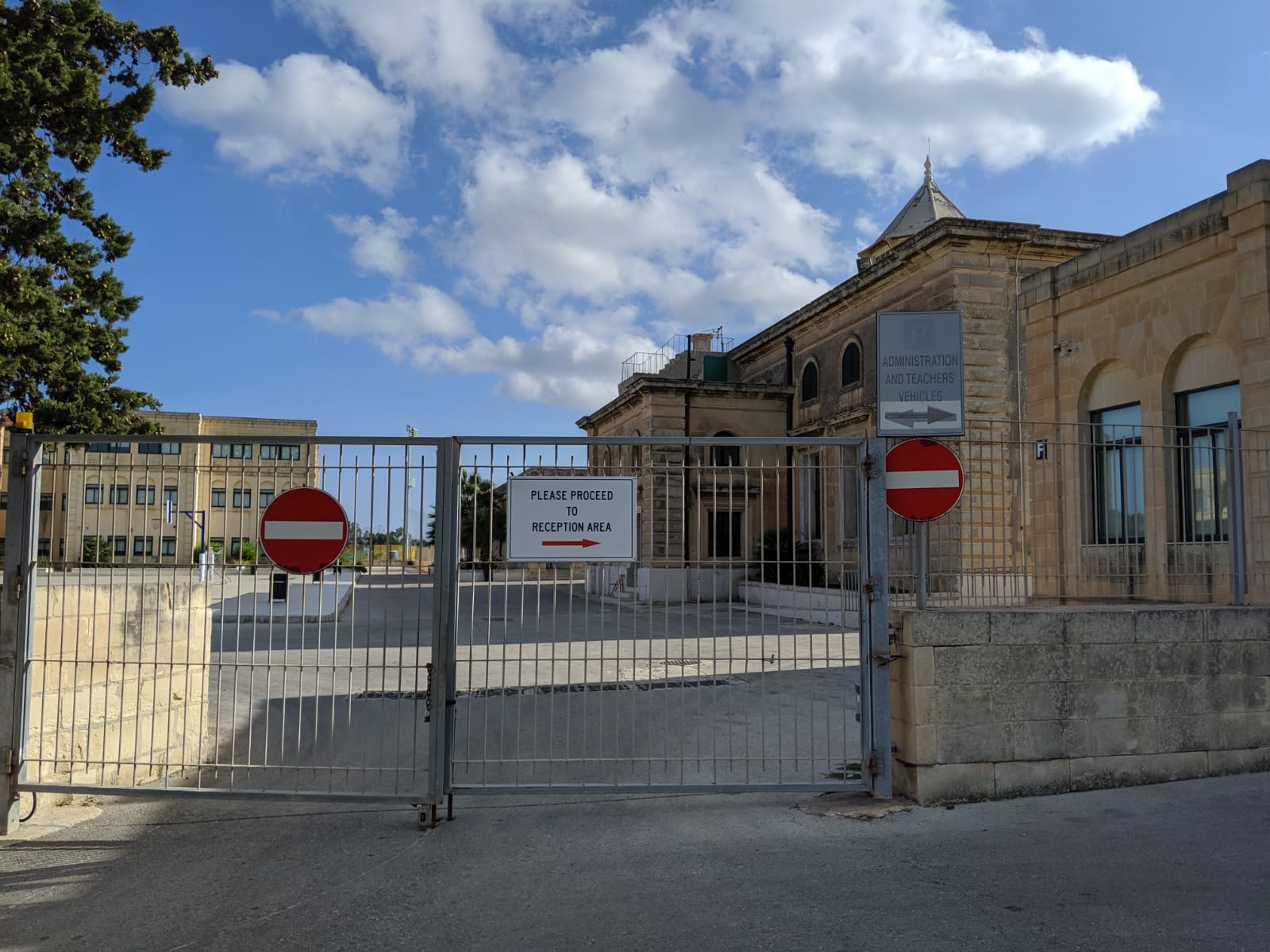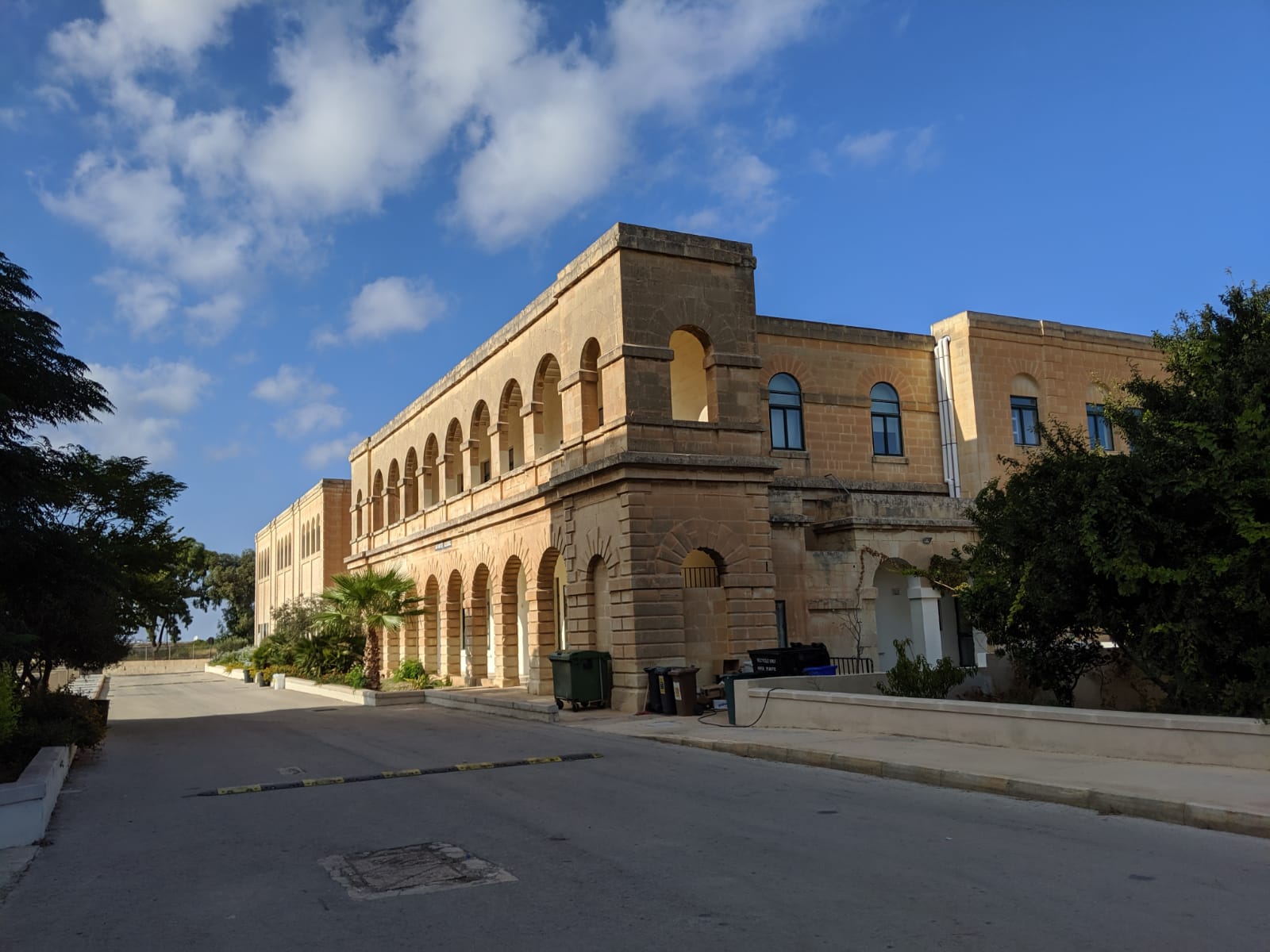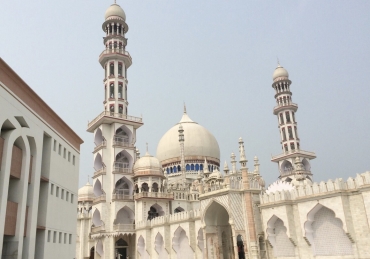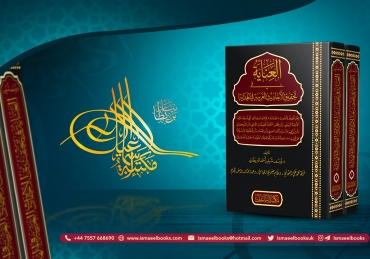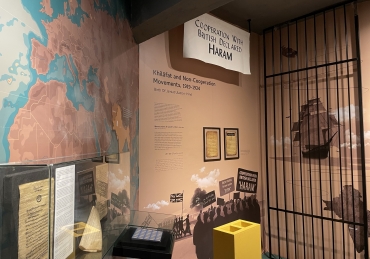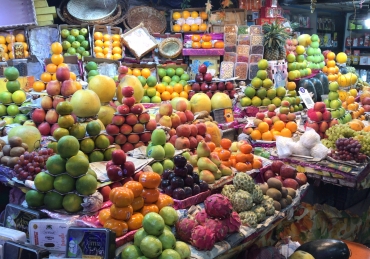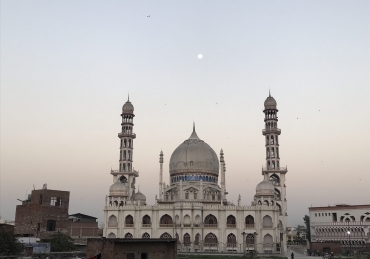Visit to Malta and Cyprus with Shaykh al-Islam Mufti Muhammad Taqi Usmani
By Yusuf Shabbir
In the name of Allah, the Compassionate the Merciful
Day 1 – Monday 8 July 2019
From the UK to Malta
Introduction
A few weeks ago, we travelled to Malta with our respected Mufti Ahmad Khanpuri (b. 1365/1946) and visited various historical places. A detailed account of this journey was published online, which also shed light on Fort Verdala, the location where Shaykh al-Hind Mawlānā Maḥmūd Ḥasan Deobandī (d. 1339/1920) and his colleagues were incarcerated between 1917 and 1920. Our respected Shaykh al-Islam Mufti Muhammad Taqi Usmani (b.1362/1943) was scheduled to join us on this journey, however, was unable to do so due to some unforeseeable circumstances. We therefore decided to organise another journey to Malta and also included Cyprus in the itinerary. I was tasked by my colleague Mawlānā Hanif Dudhwala to plan and coordinate this journey.
Travellers
Our group comprised of the following:
- Mufti Muhammad Taqi Usmani (Karachi, Pakistan)
- Mawlānā Shakir Siddiq Jakhura (Karachi, Pakistan)
- Hanif Dudhwala (Blackburn, UK)
- Yusuf Shabbir (Blackburn, UK)
- Rafiq Sufi (Blackburn, UK)
- Salim Mohammed Patel (Bolton, UK)
- Mohammed ibn Adam (Leicester, UK)
- Umar Faruk Pandor (Manchester, UK)
- Farid Ahmad Timol (Manchester, UK)
- Yahya Batha (London, UK) – Only Malta.
- Abdul Aziz Raje (London, UK) – Only Cyprus.
- Abdul Haq Data (Manchester, UK) – Only Cyprus
- Talha Data (Manchester, UK) – Only Cyprus
Arrival into Malta
Mufti Muhammad Taqi Usmani arrived to the UK on Friday 5 July to partake in several programmes in Birmingham. On Monday 8 July, he along with some of the aforementioned colleagues travelled from Birmingham International Airport on the 6.05am CityJet flight to Brussels and thereafter on the 9.10am Air Malta flight to Malta, which landed at 11.40am. The others including myself arrived an hour earlier on the EasyJet direct flight from Manchester. We were greeted and welcomed at the Airport by our dear brother Neville Gafa who had already informed the Airport officials of our arrival to fast track the entry process. Brother Neville works in the Office of the Prime Minister, he provided us invaluable support throughout our trip including arranging two comfortable eight-seater vans.
Turkish Military Cemetery
From the Airport, we proceeded first to the Turkish Military Cemetery in Marsa, which was a ten-minute drive. The weather was extremely hot with the temperature exceeding 35 degrees Celsius. We arrived at 12.30am and offered our Salams and prayers. In our previous visit, we were unable to visit the inside of the cemetery. However, Brother Neville had pre-arranged our visit with the Turkish Embassy, enabling us to visit the inside of the cemetery. The cemetery was built in 1290 (1874) as marked above the door of the graveyard and as mentioned in the plaque inside.
The plaque states, “Turkish Military Cemetery – This cemetery was built in 1874 by the architect E.L. Galizia upon instruction of the Ottoman Emperor Sultan Abdulaziz Khan in memory of the soldiers who had been martyrised during the Great Siege of Malta in 1565. The cemetery was repaired in the year 1919-1920 by Eshref Bey, Commander of the Muslim warriors in Malta and the monument was erected by him in order to keep alive the memory of those who died as prisoners of war in Malta during the first World War. May all martyrs souls rest in peace.”
The Great Siege of Malta in 1565 is a reference to the Ottoman attempt to conquer Malta. The Knights of St John withstood the siege and resisted. This marked a new phase in the Spanish domination of the Mediterranean and the perception of Ottoman invincibility was now under the spotlight. This, as Brother Neville highlights, was the only island in the Mediterranean which the Ottomans did not manage to conquer.
Shaykh al-Hind and his colleagues visited this cemetery on several occasions during their incarceration between 1917 and 1920, as detailed in the aforementioned travelogue. Mawlānā Ḥusayn Aḥmad Madnī provides a diagram of the graveyard in his Safarnāmah Asīre Malta (p.176). It was here that an Ottoman prisoner Ali Beg was bathed and buried after being executed, he had requested Shaykh al-Hind to be present during his execution and lead his Janāzah Ṣalāh (p.173). Subsequently, Shaykh al-Hind and his colleagues would visit his grave whenever they visited the graveyard (p.177). On 9 Dhū al-Qaʿdah 1336 (16 August 1918), Ḥakīm Nuṣrat Ḥusayn, a colleague of Shaykh al-Hind passed away, he was also buried in this cemetery. His Janāzah Ṣalāh was led by Shaykh al-Hind. Colonel Ashraf Beg (mentioned above in the plaque) paid for the transportation and gravestone costs whilst the other burial costs were paid for by Shaykh al-Hind and his colleagues (p.201-2). Mawlānā Ḥusayn Aḥmad Madnī mentions the following text that was written on his gravestone:
هذا قبر الحكيم السيد نصرت حسين من أهل كورا جهان آباد الهند، أسر بمكة مع حضرة العلامة الشيخ محمود حسن، صدر المدرسين بكلية ديوبند في الحرب العمومي، وتوفي أسيرا في تاسع ذي القعدة سنة ١٣٣٧ هجرة النبي سيدنا محمد صلى الله عليه وسلم، رحمه الله رحمة واسعة، وله الفاتحة
We toured the cemetery trying to locate this grave.
We found some gravestones with Arabic text written on them.
However, we were unable to locate Ḥakīm Nuṣrat Ḥusayn’s grave. It appears that the gravestone no longer exists due to the passage of time.
Mufti Muḥammad Shafīʿ, Shaykh al-Hind and Mawlānā Ḥusayn Aḥmad Madnī
We left the Cemetery and travelled towards our hotel. As we passed the Harbour, Mufti Ṣāḥib made reference to the first-hand account of Mawlānā Ḥusayn Aḥmad Madnī (d. 1377/1957) which mentions that Shaykh al-Hind and the group spent six hours waiting at the port when they arrived on 21 February 1917/29 Rabīʿ al-Thānī 1335 (Safarnāmah, p.125). Mufti Ṣāḥib said, “They arrived at 10am and remained at the port for six hours. Imagine how they spent these six hours. What thoughts would have crossed their minds? Will we be killed? Will be imprisoned indefinitely? What will happen to us? Where will we be taken?”
Mufti Ṣāḥib then said, “Mawlānā Ḥusayn Aḥmad Madnī was a great ʿĀshiq (adorer) of Shaykh al-Hind” adding that his father Mufti Muḥammad Shafīʿ Ṣāḥib (d. 1396/1976) would recall seeing Mawlānā Ḥusayn Aḥmad Madnī walking to Shaykh al-Hind’s home with a water pot on his head, on the day Shaykh al-Hind’s daughter was married. Mufti Ṣāḥib also informed us that his father Mufti Muḥammad Shafīʿ Ṣāḥib would attend the gatherings of Shaykh al-Hind under the famous pomegranate tree in Deoband. In fact, he delayed studying the final dawrat al-ḥadīth for one year in anticipation of Shaykh al-Hind returning from Hajj as he desired to study Ṣaḥīḥ al-Bukhārī with him. However, Shaykh al-Hind did not return to India the following year, he returned after seven years following his incarceration. Therefore, Mufti Ṣāḥib’s father studied Ṣaḥīḥ al-Bukhārī in the following year with ʿAllāmah Anwar Shāh Kashmīrī (d. 1352/1933).
The Diplomat Hotel
We arrived at The Diplomat Hotel in Sliema at 1.15pm, the hotel is on the eastern coast of the island with a beautiful view of the Mediterranean.
Here, we were welcomed by our host Shaykh Badr who along with Neville helped coordinate this trip. We met him on our previous journey. His colleague Shaykh Muwaffaq was unable to receive us as he was abroad. Shaykh Badr and his colleague Shaykh Zakariyya kindly brought food to the hotel. We ate lunch and rested for the afternoon.
At one point, I mentioned to Mufti Ṣāḥib that Scilly is only 50 miles away from Malta. Mufti Ṣāḥib expressed a desire to visit it as Muslims ruled it for more than 500 years. We agreed to organise a visit in the future. I mentioned to Mufti Ṣāḥib the research paper of John Makdisi entitled The Islamic Origins of the Common Law (published in the North Carolina Law Review) which highlights that the ‘Trial by Jury’ procedure in the Common Law legal systems originated from Muslim Scilly and its mālikī tradition.
Malta Stock Exchange
Malta’s economy is currently booming and is projected to become a major financial hub. Its location in Southern Europe makes it an ideal gateway to Africa, Europe and beyond. Accordingly, our hosts suggested it would be beneficial for Mufti Ṣāḥib to meet with the Chairman of Malta Stock Exchange to discuss Islamic Finance and potential areas of collaboration. A meeting was pre-arranged, and we arrived with Mufti Ṣāḥib at the Stock Exchange in Valetta at 5.45pm, where we were warmly received by the Executive Chairman Mr Joseph Portelli and his CEO.
A detailed discussion followed on the Maltese economy and the potential for Islamic Finance. The Chairman expressed his desire to make Malta into a hub of Islamic Finance. Mufti Ṣāḥib explained that Islamic Finance is the fastest growing financial system in the world and highlighted the difference between it and conventional finance, the former is asset based unlike the latter which is predominantly based on an artificial and bubble economy. To promote Islamic Finance, Mufti Ṣāḥib suggested that conferences and seminars are organised to facilitate an open discussion. Simultaneously, banks should be engaged to explore the introduction of Shariah compliant products. The meeting concluded positively with a shared commitment to work collaboratively to champion Islamic Finance.
After the meeting, we visited the neighbouring Upper Barrakka Gardens, which provide a offer a panoramic view of the Grand Harbour.
Programme at Al Fateh Mosque, Floriana
Our next stop was the Al Fateh mosque where we performed ʿAṣr Ṣalāh. This was followed by a short car tour of the coastal attractions.
We returned to Al Fateh Mosque for Maghrib Ṣalāh at 8.15pm. Mufti Ṣāḥib led the Ṣalāh and delivered a speech thereafter. The program was attended by fifty people. Mufti Ṣāḥib delivered most of his speech in Arabic with some English whilst Shaykh Badr translated accordingly.
Mufti Ṣāḥib began in English by saying, “Let me introduce myself, I am a student of Islamic knowledge, I am Vice President of Darul Uloom Karachi and I teach Ṣaḥīḥ al-Bukhārī. I also wrote a commentary of Ṣaḥīḥ Muslim.” Thereafter, Mufti Ṣāḥib proceeded to mention in Arabic the two purposes of his visit, he said: “I did not travel to this region purely for sight-seeing. Perhaps you do not know that the teacher of our teachers Shaykh Maḥmūd Ḥasan initiated the silk letter movement to liberate India from the British. He was imprisoned here in Malta for three years. He faced many difficulties and hardships. He was a pious saint, who taught Ṣaḥīḥ al-Bukhārī for many years, with expertise in various disciplines, and his students are spread throughout the world. So, I thought it appropriate to visit this region wherein Shaykh al-Hind resided albeit as a prisoner. Science has affirmed that the voice of a person remains in the atmosphere. Likewise, the atmosphere in these places attest to their worship, prostration and istigfār (seeking Allah’s forgiveness), and this makes the atmosphere blessed. This is why I was eager to visit this region. The second reason for visiting this region is to meet my brothers and establish a strong relationship and firm connection with them.”
Mufti Ṣāḥib then advised the congregation to undertake three actions to strengthen relationship with Allah:
- First, allocate a time daily, even if only 15 minutes to learn dīn and teach the family.
- Second, engage in Duʿāʾs constantly for all major and minor needs.
- Third, engage in Shukr (gratitude) for Allah’s countless bounties.
Dinner
Following the programme, a Syrian brother hosted us for dinner at the Karavan restaurant. Mufti Ṣāḥib’s favourite food dish is Buffalo Paya, if cooked properly overnight, followed by Nihari. His favourite sweet dish is Gajar (carrot) Halwa (with ice cream).
We finished the meal at 10.30pm. After a long day which started in the UK at 3.30am, it was time to rest.
Day 2 – Tuesday 9 July 2019
Touring Gozo and Mdina
Gozo Island
On the second day, we departed at 10am for Cirkewwa in the North of Malta. From here, we crossed over to Gozo island in the ferry with our vehicles and arrived shortly after midday. During the journey, several issues were discussed including the current turmoil in the Ummah, the conferences spearheaded by some of the Middle Eastern regimes and the Palestinian conflict. After discussing the bravery of the Palestinians and their sacrifices, Mufti Ṣāḥib mentioned that our Īmān is not even one hundredth of the Īmān of the Palestinians, adding that the 1967 war was fought on grounds of Arab nationalism, not Islam. Mufti Ṣāḥib has never visited Palestine. We pray to Allah Almighty to liberate the region from oppressors and tyrants.
Old Prison, Cittadella (Citadel)
We arrived at Citadel at 12.30pm and spent the next two hours here. Citadel is a small fortified town situated over the town of Victoria (also known as Rabat) on Gozo island.
In our previous visit, we toured the town, however, we were unable to visit the inside of the Old Prison, which is adjacent to the Courts of Justice. Today, we were able to visit the prison. It has a lot of interesting things such as original graffiti from inmates depicting crosses, ships and the cross of the Knights.
The prison was used between the mid-16th century until the beginning of the 20th century and is today divided into two sections, the entrance hall and the individual cells.
We visited the cells which are very small and saw the sanitary facilities.
Outside the prison, we visited a museum in Citadel and also a cafeteria where the owner fed us fresh cheese, much of the island is visible from here.
There is no doubt that Shaykh al-Hind and his colleagues were not incarcerated here on Gozo island, as detailed in the aforementioned travelogue. Further, the interior of the Old Prison which we observed does not correspond at all with the description of the prison outlined by Mawlānā Ḥusayn Aḥmad Madnī in his Safarnāmah.
Return to Malta Island
At 3pm, we returned to Malta island.
As we observed the beautiful view of the Mediterranean Sea from the ferry, I read a ḥadīth to Mufti Ṣāḥib, which the muḥaddith Thawr ibn Yazīd (d. 153/770) heard from Imam Khālid ibn Maʿdān (d. 103/721-22) whilst travelling on the sea. The following is the ḥadīth as quoted in my Arabic collection of ḥadīths on the companion Umm Ḥarām bint Milḥān (d. 28/648-9, may Allah be pleased with her) which was read as follows:
بسم الله الرحمن الرحيم. وبالإسناد المتصل منكم إلى الإمام البخاري (٢٩٢٤) قال: حدثني إسحاق بن يزيد الدمشقي حدثنا يحيى بن حمزة قال: حدثني ثور بن يزيد عن خالد بن معدان أن عمير بن الأسود العنسي حدثه أنه أتى عبادة بن الصامت وهو نازل في ساحة حمص وهو في بناء له، ومعه أم حرام. قال عمير: فحدثتنا أم حرام أنها سمعت النبي صلى الله عليه وسلم يقول: أول جيش من أمتي يغزون البحر قد أوجبوا. قالت أم حرام: قلت: يا رسول الله أنا فيهم؟ قال: أنت فيهم، ثم قال النبي صلى الله عليه وسلم: أول جيش من أمتي يغزون مدينة قيصر مغفور لهم. فقلت: أنا فيهم يا رسول الله؟ قال: لا. وزاد عند ابن أبي عاصم في الآحاد والمثاني (٣٣١٣): قال ثور: سمعته يحدث به وهو في البحر.
As we arrived into the ferry terminal on Malta island, I shared with Mufti Ṣāḥib the Arabic couplets of Mufti Kifāyatullāh Dehlawī (d. 1372/1952) regarding Malta. He was a student of Shaykh al-Hind and wrote the following couplets when Shaykh al-Hind was in Malta, as cited in Nuzhat al-Khawāṭir (8:1334):
ألا يا مالطة طوبى وبشرى ، ثوى بك من محا آثار كفر
ولم تك قبله إلا خرابا ، خمولا غير معروف بخير
فلما حلها عادت رياضا ، منضرة من التقوى وذكر
مكللة بأزهار المزايا ، وأزهار المزايا خير زهر
ألا يا مالطة كوني سلاما ، على محمودنا الراضي بقدر
إمام الخلق قدوتهم جميعا ، له كرم إلى الآفاق يسري
جنيد العصر سري الزمان ، غيوث فيوضه تهمي وتجري
فريد في خلائقه العذاب ، وحيد في التقى من غير فخر
أشد الناس أمثلهم بلاء ، فيا شمس الهدى يا طود صبر
ذكرنا يوسف الصديق لما ، أسرت بغير استحقاق أسر
لحر البين في صدر الكئيب ، تفيض دموعه حمراً كجمر
سينزلك العزيز محل عز ، ويضرك النصير أعز نصر
سيكفيك الإله فأنت مرء ، كفاك الله قدما كل شر
I asked Mufti Ṣāḥib two language related questions. The first regarding the language he thinks in? Mufti Ṣāḥib responded, “I think in Urdu mostly, and also in Arabic sometimes.” The second question was regarding how he learnt English. He explained that his brother Mawlānā Muḥammad Walī Rāzī taught him some basic English. However, it was when working on Iẓhār al-Ḥaq (which resulted in the publication of the three volume Urdu book Bible sey Quran tak) that he became proficient in English. To understand the English works on the bible and Christianity, he would use the dictionary for every paragraph initially and this substantially improved his English. When appointed as judge, he would initially write his court edicts in Urdu, however, over time, he started to write judgements in English.
We left from the terminal and returned back towards our hotel. Whilst observing the scenery, Mufti Ṣāḥib commented citing the verse of the Quran ربنا ما خلقت هذا باطلا, “We think that these mountains and these animals serve no purpose. There is a purpose behind every creation of Allah. Nothing has been created in vain.”
Lunch and rest
We stopped on the way to the hotel at a restaurant and ate lunch. Our travel colleague Salim Mohammed Patel’s sons insisted on paying for it. During lunch, Shaykh Badr asked Mufti Ṣāḥib regarding migrating to another country as he is worried about the future of his children due to the changing environment. Mufti Ṣāḥib advised him that to migrate to a Muslim country is good, however, which country can he migrate to? He added that the situation is similar in many Western countries and that it is not practical for all Muslims to migrate, therefore scholars and community leaders need to consider how they can preserve the faith of their communities.
Meeting with President Emeritus Marie-Louise Coleiro
Following the afternoon siesta, President Emeritus Marie-Louise Coleiro visited our hotel at 7pm to meet Mufti Ṣāḥib. We were scheduled to visit her office; however, this was not possible due to an event in Floriana. Her Excellency served as the 9th President of Malta from 2014 to 2019 and enjoys an excellent relationship with faith communities and civic society. She is a humanitarian, active in various national and global charities and forums. Between 2013 and 2014, she served as Minister for Family and Social Solidarity and from 1998 to 2014, she was an MP. Malta has a parliamentary system similar to the UK.
The meeting was extremely beneficial and positive. Her Excellency explained that Malta has always been at the crossroads of civilisation and recommended a visit to the 700-year-old temple on Gozo island, which is a UNESCO heritage site. A detailed discussion followed regarding children’s education and Islamic finance. Her Excellency said, “I do not believe in borders.” She emphasised the importance of children’s education and maintaining their faith identity. Mufti Ṣāḥib explained the primary difference between Islamic finance and conventional finance and Her Excellency made some observations and asked a few questions regarding the various Shariah compliant house purchase schemes. She also invited Mufti Ṣāḥib to deliver a lecture at the University of Malta on this subject.
Finally, Her Excellency asked Mufti Ṣāḥib the purpose of writing travelogues. Mufti Ṣāḥib explained that the purpose is to introduce to people what he saw and also to provide an insight into the great personalities who lived there, enabling the people to emulate them.
Mdina, the silent city
Later in the evening, at 8.45pm, we travelled to Mdina, a fortified medieval town enclosed in bastions, located on a large hill in the centre of Malta. The town served as the country’s capital from antiquity until 1530. With its narrow streets, few inhabitants and beautiful views over the Island, it is truly a magical town. The name Mdina is from the Arabic Madinah which means town. Although the town was founded in 8th Century BC, the current structure appears to have been built during the Byzantine or Arab rule. Shaykh Badr suggests that Arabs built the town considering the design.
We toured the city and passed a building which Shaykh Badr suggests could have been the Masjid during the Arab rule, there is a section inside the building where it is suggested the mihrab was originally located and subsequently destroyed.
Today, the descendants of the Knights continue to reside in this city. It has never regained its pre-1530 importance, however it has become a popular tourist attraction. It became known as the silent city because it became a ghost town after the capital moved and to this date, the silent status of the city remains. Very few cars are permitted to enter and at night there is pin drop silence. The silent atmosphere at this time of the evening allowed us to experience Mdina as it perhaps was centuries ago.
Our final destination in the evening was the Ladamas restaurant where some of the local friends of Shaykh Badr hosted us for dinner. The Syrian cuisine was delicious. We returned to the hotel and rested for the evening.
Day 3 – Wednesday 10 July 2019
From Western Mediterranean to Eastern Mediterranean
Verdala International School (Fort Pembroke)
As it was our final day in Malta, we checked out from the hotel at 11am and decided to visit Verdala International School (Fort Pembroke) and Mariam Al-Batool Mosque in Paola before heading to the airport.
We visited Verdala International School on our previous visit on the assumption that this is Fort Verdala where Shaykh al-Hind and his colleagues were incarcerated. We decided to do similar on this trip. Therefore, at 11.30am, we arrived at Verdala International School. I sought permission from a Senior Leadership Team member on site who granted permission to a local consultant on site Ms Lisa Carson to give us a tour of the estate. Ms Carson explained that the school had moved here some twenty years and that the name of the Fort is Fort Pembroke.
As we toured the school estate, my colleague Mufti Muhammad ibn Adam asked Mufti Ṣāḥib to share something about Shaykh al-Hind. Mufti Ṣāḥib narrated from his father Mufti Muḥammad Shafīʿ Ṣāḥib that when Shaykh al-Hind returned to India from Malta, he mentioned that he had thought about the reasons behind the decline of the Muslims whilst in seclusion in Malta. He concluded that there are two reasons: first, the abandonment of the Quran and second, the divisions in the Ummah. Shaykh al-Hind pledged to spend the rest of his life addressing these shortfalls. Thus, he established makātib to promote the Quran and worked with Jamia Millia and Aligarh University to unite the Muslims. Mufti Muhammad Taqi Usmani explained that Mawlānā Ḥusayn Aḥmad Madnī has written in his Safarnāmah (p.164) that Shaykh al-Hind would spend most of his time in the dhikr of Allah Almighty. It therefore appears that Shaykh al-Hind had ilhām (inspiration) of these reasons during these moments of meditation. Mufti Ṣāḥib then said, “The greatest lesson from their three-year imprisonment is that friction among Muslims should never be tolerated.” Mufti Ṣāḥib also made reference to the fact that Mawlānā Ḥusayn Aḥmad wrote the Safarnāmah whilst in Karachi jail, he has mentioned this at the end of the book (p.210) as the reason for making the account of the latter days brief.
After Mufti Ṣāḥib finished his advice, I took this opportunity to read the following narration from Sunan al-Tirmidhī:
بسم الله الرحمن الرحيم. وبالإسناد المتصل منكم إلى الإمام أبي عيسى محمد بن عيسى الترمذي رحمه الله قال: باب ما جاء أن الدنيا سجن المؤمن وجنة الكافر. حدثنا قتيبة حدثنا عبد العزيز بن محمد عن العلاء بن عبد الرحمن عن أبيه عن أبي هريرة قال قال رسول الله صلى الله عليه وسلم: الدنيا سجن المؤمن وجنة الكافر. وفي الباب عن عبد الله بن عمرو. قال أبو عيسى: هذا حديث حسن صحيح
Where was Shaykh al-Hind incarcerated?
The location of Shaykh al-Hind’s incarceration in Malta was discussed in detail in my earlier travelogue of Malta. It was concluded that Fort Verdala, also known as Verdala Barracks, is almost certainly where Shaykh al-Hind was incarcerated. Seven indicators were provided to substantiate this. Reference was also made at the end of the travelogue to Shaykh Muḥammad ʿAbdurraḥmān al-Ṣabāḥī’s Arabic book ‘Khamsa Sinīn fī Magāwir al-Asr’ which was published from Egypt in 1922. We have now obtained a PDF copy of this book. It details his incarceration in Malta during the same period.
The book provides some additional indicators regarding the location of the prison being Fort Verdala, also known as Verdala Barracks, which are summarised here:
- Shaykh Muḥammad ʿAbdurraḥmān al-Ṣabāḥī describes the location of his imprisonment around a military fort. He explains that there were two areas for the prisoners, the first was St Clements Camp which contains tents in an open area and a large building, and second is a grand building known as Verdala Barracks (p.76). The Arabic term he uses is فرداله which is Verdala in English. This corresponds with the description provided by Mawlānā Ḥusayn Aḥmad Madnī, as outlined below.
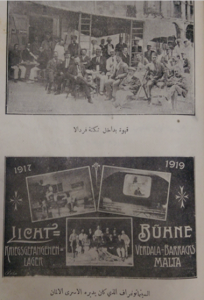 Shaykh Muḥammad ʿAbdurraḥmān al-Ṣabāḥī provides a picture of an advert which mentions “Verdala Barracks” in English and also a picture of Verdala Barracks with فرداله (Verdala) written underneath it (p.88-89, refer to image).
Shaykh Muḥammad ʿAbdurraḥmān al-Ṣabāḥī provides a picture of an advert which mentions “Verdala Barracks” in English and also a picture of Verdala Barracks with فرداله (Verdala) written underneath it (p.88-89, refer to image).- Shaykh Muḥammad ʿAbdurraḥmān al-Ṣabāḥī provides a picture of an Indian prisoner with white beard, with the following caption: الشيخ حسين محمود، العالم الهندي الكبير، رئيس كلية عليكره الذي رفض أن يفتي ضد الأتراك (p. 92-93). This is most probably a reference to Shaykh al-Hind Mawlānā Maḥmūd Ḥasan. Mufti Muhammad Taqi Usmani observed during our discussion that in that era it would have been extremely difficult for someone to take a photograph without the person knowing and Shaykh al-Hind would not have consented. (The only plausible explanation is that the picture was sourced from the prison authorities, and Allah knows best). I mentioned to Mufti Ṣāḥib that the picture cannot be of Mawlānā Ḥusayn Aḥmad as he was young and his appearance is well known, however, it is possible though unlikely that it is of another colleague of Shaykh al-Hind. Either way, the relevant point here is that Shaykh Muḥammad ʿAbdurraḥmān al-Ṣabāḥī was imprisoned in the same location as Shaykh al-Hind.
- Shaykh Muḥammad ʿAbdurraḥmān al-Ṣabāḥī has provided a profile of Ashraf Beg (Esref Bey) (p.97) and also his picture (p.12-13 and p.52-53). Mawlānā Ḥusayn Aḥmad Madnī has also made reference to him as mentioned in our earlier travelogue.
- Shaykh Muḥammad ʿAbdurraḥmān al-Ṣabāḥī makes reference to German prisoners (p.27). Mawlānā Ḥusayn Aḥmad Madnī has also made reference to this.
- Shaykh Muḥammad ʿAbdurraḥmān al-Ṣabāḥī has mentioned the Turkish Military Cemetery (p.94).
All these points affirm that Shaykh Muḥammad ʿAbdurraḥmān al-Ṣabāḥī was imprisoned in the same prison as Shaykh al-Hind and that the location of the incarceration was Fort Verdala, also known as Verdala Barracks. The references to ‘Verdala Barracks’ and ‘St Clement’ are the most explicit.
When I shared these observations along with the seven indicators mentioned in our earlier travelogue, Mufti Ṣāḥib concurred that Fort Verdala is the location of the prison and suggested that in matters of history such indicators suffice to provide a near certain view.
Fort Verdala is different to Verdala International School (Fort Pembroke)
At this juncture, it is important to note that the Verdala International School which we visited during this trip and the previous trip is currently housed in Fort Pembroke, which is different to Fort Verdala. Fort Verdala is in Cospicua and all our geographical indicators in our earlier travelogue relate to this. We did not visit Fort Verdala. We visited Verdala International School which is located in Fort Pembroke. Fort Pembroke is located in Pembroke, several miles away. It is also near the coast and was used as a prison in the second world war, however, it is not the place where Shaykh al-Hind was incarcerated.
The reason for the confusion appears to have been the fact that the locals are unaware of the history of Shaykh al-Hind and the location of the prison. There is also a school operating within the Fort Verdala area. Thus, in our first journey, when the name Verdala was mentioned alongside a school and a fort, a local guide misunderstood and thought that Verdala International School located in Fort Pembroke is the location. The same confusion appears to have occurred to a journalist from India or Pakistan whose video online regarding the jail of Shaykh al-Hind makes reference to Verdala International School.
When we visited Verdala International School and Ms Lisa Carson explained that the Verdala International School moved here some twenty years ago and that the name of the Fort is Pembroke, this created a doubt in my mind. However, the matter was not pursued further as a local guide confirmed that this is Fort Verdala. However, upon my return to the UK, I decided to revisit this issue after reading Shaykh Muḥammad ʿAbdurraḥmān al-Ṣabāḥī’s book. This is because the book features some images which do not match Fort Pembroke. As I investigated further, it became apparent very quickly that the Fort Pembroke is different to Fort Verdala and both are located several miles apart in different areas. Had I inserted Fort Verdala, Cospicua in Google Maps, we would have realised the error then (قدر الله ما شاء). A local colleague has since confirmed that Fort Verdala exists in Cospicua and it is well known.
Further, a google map of Fort Verdala confirms the map of the camp which is located on Wiki Media.
Contrast these drawings with the google map and satellite images below.
Notre Dame Gate and St Helens Gate exist to date. St Nicholas Road indicates the location of St Nicholas Bastion. Shaykh al-Islam Mawlānā Ḥusayn Aḥmad Madnī has mentioned various camps of prisoners including the St Clements Camp, also known as the German Camp (Safarnāmah, p.127). Mawlānā mentions that half of the 3000 prisoners were German (p.136). Further, Mawlānā Ḥusayn Aḥmad Madnī describes the place of their internment as a large fort consisting of fortified walls with trenches and several buildings in open spaces. He adds that the mountain was dug and the fort was built therein (p.125). Fort Verdala fits this description as some of the old pictures and the satellite images above illustrate.
Mawlānā Ḥusayn Aḥmad Madnī also explains that they were initially housed in the Rogate Camp before being moved to the Arab Camp, also known as St Clement Barracks. He describes the Rogate Camp being located in the fort’s ditch, close the main gate of the fort. (Safarnāmah, p.127) These camps had tents for prisoners provided by the British, although some prisoners constructed wooden structures at their own expense (p.140). Shaykh al-Hind and his colleagues stayed in these tents in the Rogate camp for several months (p.146). Mawlānā Ḥusayn Aḥmad also describes the Rogate Camp as being located in a trench, with all the tents in an open space, with no buildings (p. 155). In relation to the Arab Camp (St Clement Barracks) where Shaykh al-Hind and his colleagues resided for the remainder of their time, Mawlānā Ḥusayn Aḥmad Madnī describes it as featuring buildings with space for a few tents, adding that they had to walk down many stairs before reaching it (p.128). He also provides a diagram of the room they were given here (p.157).
A visit is required to Fort Verdala to precisely ascertain the location of the various camps detailed by Mawlānā Ḥusayn Aḥmad Madnī, although it is clear from the maps above where St Clements Camp was located.
In short, there is no change to our previous conclusion that Fort Verdala in Cospicua is the place where Shaykh al-Hind and his colleagues were incarcerated. However, during this visit and the previous visit, we visited Fort Pembroke, which is a different Fort altogether, and the misunderstanding stemmed from the fact the Verdala International School is housed in Fort Pembroke.
Mariam Al-Batool Mosque, Paola
Our final stop in Malta was the Mariam Al-Batool Mosque in Paola where we performed Ẓuhr Ṣalāh. This is the largest mosque in Malta, which was financed by the former ruler of Libya, Muammar Qaddafi. In 1978, he visited Malta and placed the foundation stone of the mosque. The mosque opened its doors in 1982 and is the only place to possess the legal status of a mosque.
At the mosque, we met with Imam Mohammed El Sadi, who is of Libyan origin and has resided in Malta for forty years. He welcomed us to his office which is full of Islamic books.
Mufti Ṣāḥib explained to him the purpose of our trip and shared with him the profile of Shaykh al-Hind, highlighting that during his incarceration he authored the translation of the Quran and taught various books including Ṣaḥīḥ al-Bukhārī and Tafsīr al-Jalālayn. Imam Mohammed El Sadi gifted Mufti Ṣāḥib a translation of the Quran in Maltese which was translated by a non-Muslim, although thoroughly checked by Muslim scholars.
Bidding farewell to Malta
We arrived at Malta International Airport in Luqa at 1.45pm and checked in for our onwards 3.30pm Emirates flight to Larnaca, Cyprus. Emirates Airlines stops at Larnaca to drop and collect passengers with a very short stopover, passengers travelling to the UAE are not required to disembark. Both Shaykh Badr and Brother Neville bade us farewell at the Airport.
Mufti Ṣāḥib’s generosity and caution
Whilst at Malta Airport, Mufti Ṣāḥib insisted on treating us all with fresh juice. The ‘Flu Fighter’ juice made from carrots, apples, oranges and ginger was the favourite choice. Mufti Ṣāḥib insisted on giving me 40 euros that I had paid. As he only had 30 euros in change, he insisted on giving me £10. I have experienced Mufti Ṣāḥib’s generosity, caution in financial matters and adherence to principles many times. During this journey, Mufti Ṣāḥib insisted several times to pay for all his accommodation, travel and food costs. On more than one occasion, he offered to pay for food. When we visited a pharmacy, Mufti Ṣāḥib did not allow me to pay for his medicine.
A few weeks ago, when Mufti Ṣāḥib visited our house in Blackburn, he gave £20 to my children. Last year in Bosnia, I accompanied Mufti Ṣāḥib in the car, and we stopped at a petrol station and purchased some ice cream. Mufti Ṣāḥib immediately offered to pay. In 2013, I arranged for Mufti Ṣāḥib to stay in the Lake District. I still recall the scene in the garden of Lodore Falls Hotel, when Mufti Ṣāḥib gave me £300 in fifty notes for the hotel costs, despite my refusal, and also insisted on paying the boat costs. In April 2018, when we accompanied Mufti Ṣāḥib in Windermere, and Mufti Ṣāḥib’s wife requested ice cream, Mufti Ṣāḥib stood in the queue to pay for the ice cream and insisted that he should pay. The examples and stories of Mufti Ṣāḥib’s generosity and caution in financial matters are countless.
Mufti Ṣāḥib has visited 80 countries
As we awaited to board our flight, I presented a list of countries to Mufti Ṣāḥib requesting him to tick the countries he has visited, other than the fifty countries I had already highlighted. Mufti Ṣāḥib ticked a further 30 countries. These are outlined in an article written yesterday entitled: 80 countries visited by Shaykh al-Islam Mufti Muhammad Taqi Usmani.
Earlier in the journey, I asked Mufti Ṣāḥib if he has visited Srinagar in the Indian controlled Kashmir. Mufti Ṣāḥib replied in the negative and started to read couplets from his Urdu poem written during the Indo-Pakistani War of 1965, the words begin with اے وادی کشمیر. In relation to a question regarding New Zealand, Mufti Ṣāḥib commented that the country has every type of scenery and also a live volcano. His host there was my father in law Shaykh Khalil Ahmed Nadat.
Arrival into Cyprus
We flew over the Mediterranean Sea eastwards and arrived into Larnaca International Airport at 7pm, performed our ʿAṣr Ṣalāh and travelled to our hotel at 7.45pm. The Airport is located 2.5 miles south west from the city on the southern coast and is the country’s main international gateway and the largest of the country’s two commercial airports, the other being Paphos International Airport on the island’s southwestern coast.
The Republic of Cyprus
The Republic of Cyprus is an island country in the Eastern Mediterranean located south of Turkey, west of Syria and Lebanon and north of Egypt. It is the third largest and third most populous island in the Mediterranean. Its history extends back to around 10th Millennium BC. As a strategic location in the Middle East, it was occupied by several major powers. In 27 or 28 Hijrī, Muslims conquered the island during the era of the Caliph ʿUthman ibn ʿAffān (d. 35/656, may Allah be pleased with him). In Arabic, the island is known as Qubrus. Although Islam came to Cyprus quite early on, a permanent presence of Muslims occurred in 1571 after the Ottoman conquest, which lasted for the next three centuries.
In 1878, the Cyprus Convention granted control of Cyprus to the United Kingdom and in 1914, it was formally annexed by the UK. Ever since, the Turkish Cypriots and Greek Cypriots have attempted a union of the island with Turkey and Greece respectively. In 1960, the country gained independence and in 1974, Turkey invaded the north in response to a military coup on the island which was backed by the Greek government. The status of the North continues to be a matter of dispute, and Turkey is the only country to recognise The Turkish Republic of Northern Cyprus.
Today, the island is partitioned, with the northern third run by a Turkish Cypriot government and the southern two-thirds by the internationally-recognised government led by Greek Cypriots. The Greek side is an independent presidential republic, part of the EU, with Greek and Turkish as its official languages, whilst Turkish is the official language in the North. English is common throughout the island and Russian is also becoming common due to immigrants and investors. Cyprus is known for its tourism and finance sectors; offshore companies provide a safe tax haven.
It is worth noting that the United Kingdom has military bases in Cyprus which were negotiated when independence was granted to Cyprus. The strategic location enabled the British government to use these bases during the Iraq War.
We are received at the Airport by Shaykh Muhammad Abu an-Noor, who is our main host here, and his co-driver Ahmed Husayn, who is originally from Siyalkot, Pakistan. I was put in touch with Shaykh by our respected Mawlānā Saeed Patel, the son of the late Hafiz Patel (d. 1437/2016). This is a blessing of the Tabligh network. Shaykh Abu an-Noor is a successful businessman, active in the field of Tabligh. He explained that in the North, approximately 95% of the inhabitants are Muslims with their numbers exceeding 400,000, the majority are Turkish Cypriots. However, Muslims on the Greek part of the Island are mainly Arabs, although in recent years, many from the Indian Sub-continent have moved here for residence or employment. There are approximately 20 to 30,000 Muslims on the Greek side, with the number increasing due to the influx of refugees from Syria and Turkey. Mufti Ṣāḥib commented in this regard:
كانوا يأتون مجاهدين، والآن يأتون لاجئين
They [in the previous era] would come as warriors, and now they come as refugees
We arrived at the Sun Hall Hotel in Larnaca shortly after 8pm, performed Maghrib Ṣalāh and ate dinner which our hosts had arranged from Nicosia, the capital, which is 55km to the North.
Day 4 – Thursday 11 July 2019
Tomb of Umm Ḥarām bint Milḥān (may Allah be pleased with her)
Larnaca
In the morning, we woke up to the beautiful scenic views of Larnaca city and the Mediterranean. Larnaca is a city on the southern coast of Cyprus and the capital of the eponymous district. It is the third-largest city in the country, after Nicosia and Limassol. Its attractions include its palm-tree seafront, the Church of Saint Lazarus, Hala Sultan Tekke, Kamares Aqueduct and Larnaca Castle. Along with being home to the country’s primary airport, it has a seaport and a marina. It was here on the coast of Larnaca where the exalted companions led by Muʿāwiyah (d. 60/680, may Allah be pleased with him) arrived from Shām in 27 or 28 Hijrī and conquered the country. Another fleet led by ʿAbd Allah ibn Saʿd ibn Abī al-Sarḥ (d. 36/656-7, al-Istīʿāb, 3:920, Usd al-Gābah, 3:260; Siyar, 3:33) arrived from Egypt, entering from the other side of Cyprus and joined forces (al-Bidāyah wa al-Nihāyah, 7:153).
Hala Sultan Tekke
We are joined this morning by three colleagues from the UK, Abdul Aziz Raje, Abdul Haq Data and Talha Data. Abdul Aziz also bought some Paan ingredients for Mufti Ṣāḥib, for which Mufti Ṣāḥib was immensely grateful.
Our first stop at 10.45am was Hala Sultan Tekke where it is suggested that the female companion Umm Ḥarām bint Milḥān (d. 28/648-9, may Allah be pleased with her) is buried. Hala Sultan is a reference to her being the Khala (aunt) of the Prophet ﷺ, either through raḍāʿah or through blood relation. There is a difference of opinion regarding this as outlined in my treatise.
Umm Ḥarām bint Milḥān was the sister of Umm Sulaym (d. era of ʿUthmān), the mother of Anas ibn Mālik (d. 93/711-2) (may Allah be pleased with them). Umm Ḥarām was married to ʿUbādah ibn al-Ṣāmit, who was from among the 12 men who gave the Prophet ﷺ the first pledge. There is a difference of opinion in relation to whether they were married to each other in the Prophetic era or whether they married later (see Fatḥ al-Bārī, 11:72). Both sisters were very close to the Prophet ﷺ, and he would visit them in their homes. One day the Prophet ﷺ visited Umm Haram and she fed him. He lied down and she examined his head (to pick up any stray insect or to give him comfort). He fell asleep. He then woke up smiling. She asked him the reason for his smile. He said: “I was shown some people from my Ummah as warriors in the path of Allah, riding at sea, like kings on the thrones.” She said: “Messenger of Allah, pray for me that I will be one of them.” He said: “You are one of them.” He fell asleep again. Once more he woke up smiling and she asked him why he was smiling. His answer was the same as he gave her the first time. Again, she asked him to pray to Allah to make her one of them. He said: “No. You will be among the first ones.” (Ṣāḥīḥ al-Bukhārī, 2788)
It was some two decades later in the era of Caliph ʿUthman ibn ʿAffān (d. 35/656, may Allah be pleased with him) that this prophecy came to fruition. The first Muslim naval expedition under the leadership of Muʿāwiyah (d. 60/680, may Allah be pleased with him) occurred in 27 or 28 Hijrī and many companions including Umm Ḥarām, her husband ʿUbādah ibn al-Ṣāmit and Abu al-Dardāʾ (d. 32/652-3) were part of this expedition. When the Muslim army arrived Cyprus, the Cypriots negotiated a peace treaty with the Muslims. As the Muslim convoy was about to leave Cyprus, Umm Ḥarām fell of her donkey breaking her neck and she passed away. She was buried here in Larnaca and later a shrine was built around her grave.
Imam Hishām ibn al-Gāz (d. 153/770) said, “Umm Ḥarām bint Milḥān’s grave is in Cyprus, and they [the people of Cyprus] say, this is the grave of the pious lady (al-Muʿjam al-Kabīr, 25:130; Ḥilyat al-Awliyāʾ, 2:62). Ḥāfiẓ Ḍhahabī (d. 748/1348) said, “Information has reached me that the non-Muslims visit her grave” (Siyar, 2:317). Imam Abū Nuʿaym writes that the people of Shām pray for rain by her grave, referring to it as the grave of the pious lady (Maʿrifat al-Ṣaḥābah, 6:3479).
The Hala Sultan Tekke complex comprises of a mosque, mausoleum, minaret and a cemetery. We observed many non-Muslims touring the complex. Modest clothing is available for tourists.
The location of the complex is one or two kilometres away from the sea. It is not clear if she was always buried here or whether her grave was moved here later. This is because the mosque was built during the Ottoman era. Some reports suggest that her grave had become unknown and it was later discovered in 1760 by a pious saint, Allah knows best.
First, we entered the Masjid and performed Taḥiyyat al-Masjid.
Then, we proceeded to her tomb which is accessible from a door within the front Qiblah wall of the mosque to the left of the pulpit, the grave is located in a room behind the wall.
As I entered the area, I experienced a strange feeling throughout my body which I have not experienced before, this can only be attributed to the blessings and nūr in the atmosphere, which Allah places around the graves of pious people. We offered our prayers and Salāms. Mufti Ṣāḥib then turned towards the qiblah, with the grave behind him, raised his hands and made duʿāʾ. Raising the hands whilst supplicating in the graveyard is established from a ḥadīth in Ṣaḥīḥ Muslim (974), however, one should avoid facing the grave (see Fatāwā Maḥmūdiyyah, 13:278 and Five questions regarding Janazah Salah and burial).
A local person shared with us something interesting. There is a stone hovering over her grave which is currently supported by two pillars. However, previously for many years, there were no pillars and the large piece of stone acting as the roof of the grave hovered over the grave miraculously without any physical support from a pillar or otherwise.
Apart from the grave of Umm Ḥarām bint Milḥān, there are several other tombs within the complex including one of Adile Huseyin Ali, the Turkish wife of Hussein bin Ali, the Sharif of Makkah al-Mukarramah.
Mawlānā Hanif asked Mufti Ṣāḥib, “What should a person recite when visiting a grave?” He replied, “Surah Yāsīn, Sūrah Mulk and if time does not permit then Sūrah al-Ikhlāṣ thrice with Sūrah al-Fātiḥah.”
Recitation of ḥadīths and dars (lesson)
We returned to the Masjid and requested Mufti Ṣāḥib if we could recite a collection of ḥadīths that I had gathered regarding Umm Ḥarām bint Milḥān (may Allah be pleased with her). Several of us read the ḥadīths in the following order: myself, Mawlānā Umar Faruk Pandor, Mawlānā Rafiq Sufi, Mufti Muhammad ibn Adam and Mawlānā Shakir. This was a very emotional moment. Mufti Ṣāḥib then delivered a short dars (lesson) wherein he explained the unique story of Umm Ḥarām and provided commentary on the collection of ḥadīths and her biography therein. In particular, he quoted from the collection the statement of Abu al-Dardāʾ (may Allah be pleased with him) who cried during the conquest and when asked he said, “This nation was a mighty nation that had power, but they violated the orders of Allah, and thus they were degraded to the conditions you see. Allah imposed captivity on them and whenever Allah imposes such a fate as captivity on any people, this means that He does not need them” (al-Bidāyah wa al-Nihāyah, 7:153). Mufti Ṣāḥib reminded us that whilst people were rejoicing on the day of the conquest, Abu al-Dardāʾ was crying, pondering upon the reason behind the defeat of the Cypriots and worrying about what will happen when Muslims start disobeying Allah. Abu al-Dardāʾ’s statement explains why Muslims lost control of Cyprus over a century ago and the solution to regain it.
The visit to Hala Sultan Tekke was undoubtedly the highlight of the entire journey. Mufti Ṣāḥib commented as we were leaving the complex, “This is a rare visit, I never thought I would ever visit this place.” Mufti Ṣāḥib also wrote a foreword to the collection, which is available online. The dars delivered by Mufti Ṣāḥib is currently being transcribed and will be available online soon Inshāʾ Allah.
It should be noted that Hala Sultan Tekke is a five-minute drive from the Airport, so anyone transiting in Larnaca should visit it.
Troodos Mountains
After spending 75 minutes at Hala Sultan Tekke, we departed at 12pm for the Troodos Mountains. Troodos is the largest mountain range in Cyprus, located in roughly the centre of the island. Its highest peak is Mount Olympus at 1,952 metres, which hosts four ski slopes. The Troodos mountain range stretches across most of the western side of Cyprus.
The weather was extremely warm with the temperature exceeding 40 degrees Celsius. Cyprus is very fertile and its produce includes apples, grapes, mangoes, bananas, oranges, watermelons, however, it is most famous for its halloumi cheese and olives. Ḥāfiẓ Ibn Kathīr (d. 774/1373) makes reference to the many fruits and mines of Cyprus (al-Bidāyah wa al-Nihāyah, 7:153). During the 90-minute drive to Troodos, Mufti Ṣāḥib spent the entire time reciting the Quran and thereafter editing a book. Mufti Ṣāḥib does not waste a moment.
We arrived at 1.40pm at the Xyliatos Dam Picnic Site. Shaykh Muhammad Abu an-Noor and his co-driver Ahmed Hasan started the BBQ, supported by Shaykh Qāsim, fish and meat are on the menu. As we waited for the food to cook, we performed Ẓuhr Ṣalāh and my colleague Mawlānā Hanif began asking Mufti Ṣāḥib some questions.
Memorable Moments in Mufti Ṣāḥib’s life
The first question was regarding the top memorable moments in Mufti Ṣāḥib’s life. Mufti Ṣāhib answered in the following order, the summary of which is as follows:
- ʿUmrah trip in 1963: The first memorable moment in my life was when I visited Saudi Arabia with my brother Mawlānā Muḥammad Walī Rāzī in 1963. We travelled in a boat and it took seven days to reach and the same number of days on return. I had visited Saudi Arabia before this in 1952, however, this was my first time in the state of Shuʿūr (awareness and maturity). This was a memorable occasion in my life which cannot be forgotten. (The travelogue of this journey was penned by Mufti Ṣāḥib, however, he lost it during his return journey and was never able to pen it again, as mentioned in the introduction to Jahāne Dīdah. However, Mufti Ṣāḥib informed us that his auto biography Yādey has captured some aspects of this memorable journey).
- Kiss on the forehead by Mufti Muḥammad Shafīʿ in 1975: The second memorable moment was when I travelled with my respected father Mufti Muḥammad Shafīʿ Ṣāḥib (d. 1396/1976) to Saudi Arabia for ʿUmrah, this was his last journey. From Saudi Arabia, I had to travel to Africa with Mawlānā Yūsuf Binorī (d. 1397/1977) for the Khatm Nubuwwat (finality of the Prophethood) cause. My father had to return to Pakistan as he was not too well. When he bid me farewell, he kissed me on my forehead, this is the second memorable moment of my life.
- Enactment of Hudood Ordinances in 1979: The third memorable moment of my life was when as a member of the Council of Islamic Ideology, the Islamic laws pertaining to Hudood were enacted in 1979. Much of the happiness and joy was directed at me because of my role in drafting the laws.
- Qadiyanis declared non-Muslim by the National Assembly in 1974: The fourth memorable moment of my life was in 1974 when I authored a book on Khatm Nubuwwat (entitled Qādiyānī Fitnah awr Millat Islāmiyyah kā Mawqaf) within one week, and it was transcribed and printed within the subsequent week, and thereafter presented to the National Assembly which declared Qadiyanis as non-Muslim as a result.
- Completion of Takmilah Fatḥ al-Mulhim in 1994: The fifth memorable moment of my life was in 1994 when I completed the Arabic commentary of Ṣaḥīḥ Muslim, Takmilah Fatḥ al-Mulhim. A walīmah (function) was organised thereafter which was attended by the scholars, similar to the walīmah of Ḥāfiẓ Ibn Ḥajar (d. 852/1449) when he completed Fatḥ al-Bārī. However, the memorable moment was when I wrote the final sentence of the commentary.
- Urdu Quran Translation in 2008: The sixth memorable moment was when I completed the Urdu translation of the Quran.
- English Quran Translation in 2005: The seventh memorable moment was upon the completion of the English translation of the Quran.
Continue with sincerity and do not lose hope
Mawlānā Hanif also asked a pertinent question regarding what a person should do if makes an effort, and starts to lose hope due to not achieving the results. Mufti Ṣāḥib said, “Sometimes whilst writing I would lose hope, particularly when writing about Islamic Banking. This is a test from Allah. At that point, turn to Allah and persevere. Continue and do not lose hope.” Then Mufti Ṣāḥib quoted his brother Mawlānā Muḥammad Walī Rāzī’s couplet:
منزل نہ مل سکی نہ ملی کوئی غم نہیں ، ہر راہ شوق میں میرا نقش قدم تو ہے
Mufti Ṣāḥib then mentioned his own couplet:
قدم ہیں راہ الفت میں تو منزل کی ہوس کیسی ، یہاں تو عین منزل ہے تھکن سے چور ہوجانا
Then, Mufti Ṣāḥib said, “If there is sincerity in any work of Dīn, then every step you take is a destination. Every step you take should be for Allah, and pleasing Allah is the destination. Do not be preoccupied with results. This is the secret. If the path is correct and there is sincerity, then every step is a destination.”
I asked Mufti Ṣāḥib about his approach to writing books. He said, “Before writing any book, I perform Istikhārah. Then I perform Ṣalāt al-Ḥājah and make Duʿāʾ, O Allah, if Your pleasure is in the writing of this book then make it happen, otherwise do not make it happen.”
Personalities who influenced Mufti Ṣāḥib
Mufti Ṣāḥib was asked regarding the various personalities and saints he was influenced by the most. He explained that in matters of tazkiyah, he was influenced the most by his father and his two Shaykhs Dr ʿAbd al-Ḥayy ʿĀrifī (d. 1406/1986) and Mawlānā Masīḥullāh Khan (d. 1413/1992). Mufti Ṣāḥib commented that his love of his father was in a way a student loves his teacher and Shaykh, not merely a father-son affection. He wanted to make his father his Shaykh, however, his father was of the view that the father-son relationship can become a barrier to islāḥ (reform). Hence, he took him to Dr ʿAbd al-Ḥayy ʿĀrifī.
In addition to his father, the personalities whose piety and knowledge left a great impression on him include: Mufti Muḥammad Ḥasan (d. 1380/1961), the founder of Jamia Ashrafia Lahore, and Mawlānā Yusuf Binorī who was extremely knowledgeable and humble.
Throughout his life, Mufti Ṣāḥib has met many great personalities. He said, “To visit saints is a source of good fortune and blessing.” He also mentioned that Mawlānā ʿAṭāʾ Allah Shāh Bukhārī (d. 1381/1961) held him in his lap.
Work Life Balance
In relation to a question regarding work life balance, Mufti Ṣāḥib said, “I have travelled a lot, this is also a trust from Allah. During my travels, I undertake some work. In the past, I would work throughout the flight continuously. The flight attendants would know that I would work non-stop when travelling from Pakistan to the UK. I was tasked with checking all the Fatwas of Darul Uloom in the past, so I would check 3-4 fatwas whilst travelling for a programme at a nearby mosque and the same number on return. This is why I do not know the roads of Karachi very well. The key is to plan the time from before and organise a schedule that is practical. Thereafter, the difficult part is to adhere to it.” I have observed Mufti Ṣāḥib during his journeys not wasting a moment. His itinerary is planned in advance enabling him to schedule his activities accordingly.
Nicosia
Our hosts served the BBQ meal and thereafter, we departed at 3.30pm and arrived at Hilton Park Hotel in Nicosia just after 4pm. Nicosia is the largest and capital city of Cyprus. It lies near the centre of the Mesaoria plain, on the banks of the River Pedieos. Interestingly, the city is split into two, with Northern Nicosia serving as the capital of the Turkish Republic of Northern Cyprus and the remainder serving as the capital for the South. Its attractions include Cyprus Museum, Venetian Fortifications, Büyük Han, The Byzantine Museum, Selimiye Mosque and Leventis Museum.
Programme at Omeriye Mosque, Nicosia
In the evening, we performed Maghrib Ṣalah at the Omeriye Mosque, located in the south of the city. The Omeriye Mosque was once the medieval Augustinian monastery of St. Marie, built in the 14th century. In 1571, it was converted to a mosque by Lala Mustafa Pasha, the Ottoman conqueror of the island.
We were greeted at the mosque by Imam Muhammad who is from Senegal, and also by Shaykh Qasim, who is Libyan. Maghrib Ṣalāh commenced a few minutes after the adhān. Mufti Ṣāḥib performed two Rakʿat and thereafter led Maghrib Ṣalāh. If Maghrib Ṣalāh is already being delayed, there is no harm in performing Ṣalāh as outlined in several of our writings (see Tanshīṭ al-Ādhān min Kitāb al-Arbaʿīn fī al-Adhān, p.163, al-Tibyān fī al-Faṣl baʿd al-Adhān and Tawaf Salah after Asr Salah).
After Maghrib Ṣalāh, Mufti Ṣāḥib delivered a speech in English. Some 200 people attended, many of the attendees were of Bangladeshi and Pakistani origin. Mufti Ṣāḥib said, “I respect this country because it is the first part of Europe that was enlightened by Islam during the era of ʿUthmān رضي الله عنه.” Mufti Ṣāḥib then outlined the story of Umm Ḥarām (may Allah be pleased with her) and reminded the congregation of Abu al-Dardāʾ (may Allah be pleased with him) crying on the day of the conquest and his aforementioned statement which Mufti Ṣāḥib summed up in his own words, “They were very powerful, they disobeyed Allah, so Allah imposed us on them. I cry because what if Muslims disobey Allah, then some other nation will be imposed upon them.” We are now in this situation, he said.
Further, Mufti Ṣāḥib said, “Our problem is that we always worry about reforming others without worrying about reforming ourselves. Look into yourself. Analyse your life from morning to evening and reform yourself.” He then gave some practical advices to achieve this:
- Allocate a time daily even if only 15 minutes to learn dīn, for example, by reciting the translation of the Quran and Riyāḍ al-Ṣāliḥīn in the presence of family members and proceeding this this with the following supplication: O Allah, please guide us. Duʿāʾs can transform the life of a person.
- Remain in the good company of Muslims by arranging regular gatherings of Muslims. The work of Tabligh should also be supported.
- Read the morning and evening supplications and also the supplications of other occasions. Memorise the Duʿāʾs from al-Ḥizb al-Aʿẓam or al-Ḥiṣn al-Ḥaṣīn or Munājat Maqbūl.
Mufti Ṣāḥib concluded the speech by requesting the congregation for Duʿāʾs adding that he is nearly 80 years old and does not know whether he will meet them again. Shaykh Qāsim provided an eloquent summary of Mufti Ṣāḥib’s speech in Arabic and thanked him, it was very emotional, Mufti Ṣāḥib had tears in his eyes.
The evening concluded with a Syrian cuisine meal at the Habibi restaurant, kindly arranged by our hosts.
Day 5 – Friday 12 July 2019
Hazrati Umar Tekke, Northern Cyprus
The Turkish Republic of Northern Cyprus
We departed from our hotel in Nicosia at 10.15am and arrived at the border in ten minutes. Crossing the border is a smooth and swift process. Northern Cyprus, officially the Turkish Republic of Northern Cyprus, is a de facto state that comprises the northeastern portion of the island of Cyprus. Recognised only by Turkey, Northern Cyprus is considered by the international community to be part of the Republic of Cyprus. As soon as we entered the region, the differences were apparent. Everything was written in Turkish and many minarets were visible. Thanks to President Erdogan, many mosques are being built here and there is also an Islamic university. Approximately, 95% of the people in the North are Muslims, as mentioned above.
Hazrati Umar Tekke
Our primary purpose of visiting North Cyprus was to visit the Hazrati Omer Tekke on the Northern Coast, a forty-minute drive from the border crossing. It is suggested that a companion by the name ʿUmar, other than Caliph ʿUmar, is buried here, and that he was part of the army that conquered the island. The small mosque and mausoleum were built during the Ottoman era on the coast.
A new Masjid is also being constructed nearby.
The scenery here is breath-taking. There is complete tranquillity as the site is completely out of sight, there is hardly anyone here.
We entered the complex and offered our Salams at the seven tombs of ʿUmar and his colleagues.
Mufti Ṣāḥib mentioned that perhaps these people were part of the fleet led by ʿAbd Allah ibn Saʿd ibn Abī al-Sarḥ (d. 36/656-7) who entered Cyprus from the other side, as mentioned above. Whilst this is a possibility, the more probable entry point from Egypt is South of the island. Moreover, after searching al-Iṣābah and other books, I have not come across any companion named ʿUmar who entered Cyprus. There is a mention of a companion ʿUmar ibn Saʿīd ibn Mālik in al-Iṣābah (4:486) who was appointed by Caliph ʿUmar to lead some expeditions. However, there is no record of him participating in the expedition to Cyprus nor is the location of his demise mentioned. Although it is possible that a companion is buried here, the probability is minimal. If indeed there was a companion buried in this region, this is likely to have been recorded in the books of biographies and history. It therefore appears that a warrior or a saint by the name of ʿUmar and his six colleagues are buried here, and Allah knows best.
Jumuʿah Salah at Larnaca Djami Kebir Mosque
We left from Hazreti Omer Tekki at 12pm, crossed the border at 12.40pm and arrived at the Grand Mosque in Larnaca at 1.30pm. The Muslim population in the city is small. 250-300 people attend Friday Ṣalāh. The mosque was built in the 16th century and was perhaps the first mosque built by the Ottomans. It is located opposite the Larnaca Castle.
Mufti Ṣāḥib delivered the Jumʿuah sermon in Arabic. The pulpit has ten steps and Mufti Ṣāhib stood on the fifth step. He began by explaining that Taqwa means God consciousness and outlined some practical steps to achieve it: First, to learn what is Halal and Haram. Second, to allocate a time daily to learn about dīn and reading the Quran and ḥadīth books such as al-Adab al-Mufrad or Riyāḍ al-Ṣāliḥīn. Third, to supplicate to Allah Almighty: O Allah, we want to live an Islamic life in this environment, so grant us the tawfīq. Mufti Ṣāḥib made reference to the supplication of Prophet Yūnus (peace be upon him) whilst in the stomach of the fish: لا إله إلا أنت سبحانك إني كنت من الظالمين. The verse mentions thereafter, “and this is how we save the believers.” Not every believer will find himself in the physical darkness of a fish, rather, the meaning is that Allah will save the believers from the darkness of the sins and the environment, so call out to Allah just as Prophet Yunus called out to Allah to be saved.
Lunch and rest
After Jumuʿah Ṣalāh, we ate lunch at the Ocean Basket restaurant nearby. As far as we are aware, there are no Halal restaurants in this area, so sea food was the only option. Mufti Ṣāhib rested thereafter at a local hotel, whilst we did some shopping. Halloumi cheese is a speciality of Cyprus which is delicious when grilled.
Bidding Mufti Ṣāḥib farewell
At 5.45pm, we departed from the hotel and arrived at Larnaca International Airport at 6pm. It was an emotional moment as we bade farewell to Mufti Ṣāhib and Mawlānā Shākir Ṣāḥib and our local hosts Shaykh Muhammad Abu an-Noor and brother Ahmed Husayn. The past few days had been from among the memorable moments of our lives. Mufti Ṣāḥib’s humility is second to none.
Mufti Ṣāḥib’s flight was at 8.05pm, whilst the rest of us had different flight times. The first group which included myself departed on the 9.30pm Thomas Cook flight to Manchester and arrived at 12.30am. Like Malta, Cyprus is a popular tourist destination and there are many cheap holiday flights to both Larnaca and Paphos. A person should undertake visits with the intention of learning history, connecting with our legacy and also supporting the local people. The religious situation in Cyprus appears better than Malta, however, both countries require support.
Fiqh and various Q&A
The greatest advantage of travelling with Mufti Ṣāḥib is that one can tap into his ocean of knowledge and profound wisdom. Throughout this journey, we discussed a number of jurisprudential and other issues with him, a summary is presented here for completeness:
- Nikāḥ in the Masjid: Mawlānā Hanif asked Mufti Ṣāḥib if he was aware of any Nikāḥ taking place in the Masjid in the Prophetic era because the profiles of various companions like Umm Ḥarām bint Milḥām (may Allah be pleased with her) simply mention who they married without any information regarding who conducted their marriage or who attended, and whether there is any example of anyone requesting the Prophet ﷺ to conduct the marriage. Mufti Ṣāḥib explained that the implementation of Nikāḥ did not have the same significance as it does nowadays and that he was unaware of any example where a companion requested the Prophet ﷺ to perform Nikāḥ, nor any example of Nikāḥ in al-Masjid al-Nabawī. The Prophet ﷺ performed the Nikāḥ of his beloved daughter Fāṭimah (d. 11/632) and ʿAlī ibn Abī Ṭālib (d. 40/661). I informed Mufti Ṣāḥib that I could not find any example of Nikāḥ being undertaken in al-Masjid al-Nabawī in the authentic ḥadīth collections except the incident wherein a woman presented herself to the Prophet ﷺ for marriage, and a companion expressed a desire to marry her, and the Prophet ﷺ said, “I marry you to her in exchange of the Quran which you possess.” Some narrations mention that this incident occurred in al-Masjid al-Nabawī, however, it was not pre-planned (as outlined in our answer on Nikah in the Masjid and on Friday), nevertheless, nowadays, it is highly recommended to perform the Nikāh in the Masjid, as outlined in another answer).
- Sprinkling water on the newly married couple: I asked Mufti Ṣāḥib regarding the ḥadīth which mentions that the Prophet ﷺ recited some supplications upon water and sprinkled it upon Fāṭimah and ʿAlī ibn Abī Ṭālib following their marriage (al-Sunan al-Kubrā li al-Nasāʾī, 8456; also see Muṣannaf ʿAbd al-Razzāq, 9782; Ṣaḥīḥ Ibn Ḥibbān, 6944; ʿAmal al-Yawm wa al-Laylah, 606; al-Muʿjam al-Kabīr, 22:408). Mufti Ṣāḥib said there is no harm in doing similar, it is good to emulate the Prophet ﷺ, however, the person doing so must be mutadayyin (religious/pious) (also refer to Bahishtī Zeywar, p.335).
- Mufti Rashīd Aḥmad Ludyānwī’s final view on 15/18 degrees: I asked Mufti Ṣāḥib regarding Mufti Rashīd Aḥmad Ludyānwī (d. 1422/2002) relaxing his position on the 15/18 degrees issue for Ṣalāh times, as mentioned by Shabbir Kakakhel in Fahm al-Falakiyyāt. Mufti Ṣāḥib said he was unaware of this and that the Fatwa of Jamiatur Rasheed remains on 15 degrees, as far as he recalls.
- The Four Gospels: I asked Mufti Ṣāḥib regarding the four gospels of Mark, Matthew, Luke and John and whether any of these are the injīl that was revealed upon Prophet ʿĪsā (peace be upon him). Mufti Ṣāḥib replied in the negative highlighting that the injīl does not exist in its original or modified form. I suggested to Mufti Ṣāḥib that the four gospels, having studied them, can be contrasted to ḥadīth collections as they quote Prophet ʿĪsā (peace be upon him) therein, a point made by Shaykh al-Islam Ibn Taymiyyah (d. 728/1328) in his masterpiece al-Jawāb al-Ṣaḥīḥ (3:21) and others. Mufti Ṣāḥib concurred adding that their chains are all severely defective. The Gospel of Barnabas is relatively more authentic, however, even that is defective. Mufti Ṣāḥib then mentioned that sometimes when reading the bible, you can in some places experience a special illumination, one can sense that some sentences therein are authentic and divine. Shaykh al-Islam Ibn Taymiyyah has made a similar point that there are many authentic sections in the gospels (Ibid).
- Organ Donation: I asked Mufti Ṣāḥib regarding Mufti Zubair Butt Ṣāḥib’s recent fatwa on organ donation. Mufti Ṣāḥib replied that he has not had a chance to study it. Mufti Ṣāḥib’s latest stance, as outlined in a written Fatwa from Darul Uloom Karachi, is one of tawaqquf (suspension), he is not inclined either way. I mentioned to Mufti Ṣāḥib that some people in the UK are levelling some absurd accusations at Mufti Zubair, for example that he was paid by the NHS to issue this verdict. Mufti Ṣāḥib expressed his displeasure at such personal attacks and said, “Mufti Zubair is a very capable person”. (This humble writer adds that the issue of organ donation is a mujtahad fīh (differed upon) issue and any disagreements should reflect this fact. Any critique should be objective, factual and evidence based, not based on emotion, hearsay or personal attacks. As a matter of personal choice, I have opted out, however, suspended judgement until further research).
- Ḥanafī texts: I asked Mufti Ṣāḥib regarding the ḥanafī texts he benefited from the most. He said: “Badāʾiʿ al-Ṣanāʾiʿ and then Shāmī” (Radd al-Muḥtār). (Mawlānā Shākir Ṣāḥib informed me later that the structure of Fiqh al-Buyūʿ is based on Badāʾiʿ al-Ṣanāʾiʿ).
- Students Loans in the UK: Mufti Ṣāḥib was asked regarding student loans in the UK. He advised against it and explained that the one who has a student loan should seek Allah’s forgiveness. Mufti Ṣāḥib then asked me regarding the student loan system in the UK. Mufti Ṣāḥib commented that scholars need to consider whether the student loan is a dayn (loan) in the eyes of the Sharīʿah, because a person does not have to repay it until he is employed with remuneration above a specific threshold. The repayment is conditional. It is conceivable that a person is not legally required to repay his debt altogether if his earnings remain less than the threshold. Is it therefore possible to treat it as a gift (tabarruʿ) or amānah in the first instance and thereafter treat the additional repayments as money taken by compulsion? It must be stressed that Mufti Ṣāḥib was merely sharing a thought for scholars to consider and did not provide a definitive view or Fatwa in this regard. This is why he advised the questioner to avoid it. I suggested to Mufti Ṣāḥib that the rise in tuition fees in the UK means that working part time is not sufficient to cover costs, therefore the community should consider donating Zakat to students who are unable to afford the fees and are in debt as a result. Mufti Ṣāḥib commented that if the student loan is not a dayn (debt) in the eyes of the Sharīʿah, then the person would not be eligible to receive Zakat. I suggested to Mufti Ṣāḥib that if Zakat is used, there is no need to take a student loan. The student will be indebted to his university and/or to his family and friends and Zakat can be given to him to repay his debt. Mufti Ṣāḥib agreed that using Zakat is permissible and the preferred option compared to a student loan. I further suggested to Mufti Ṣāḥib that the British Muslim community is already funding students abroad in the sub-continent for religious and worldly studies including degree programmes through Zakat funds, however, the mindset of the community needs to be developed to fund school fees and tuition fees in the UK. Many parents with several children struggle to afford fees for Muslims schools and Madrasahs. Mufti Ṣāḥib concurred with using Zakat for those who are in debt because of school fees or tuition fees and do not have recourse to other funds. This needs to be considered by the community with appropriate safeguards, as it will enable students to become Zakat payers in the future without any loan on their shoulders or the harmful effects of interest.
- Three divorce: A detailed discussion took place regarding three divorces that are pronounced together. Mufti Ṣāḥib suggested most people do not differentiate between taʾsīs (initiating a fresh divorce) and taʾkīd (re-affirming the first divorce), therefore a Mufti should thoroughly consider the possibility of taʾkīd.
- Civil Divorce in the UK: In relation to civil divorce, Mufti Ṣāḥib confirmed that if the husband petitions the court, one ṭalāq bāʾin (irrevocable divorce) will occur at the end of the process. If the wife petitions the court, the divorce will not occur unless the husband consents to the divorce, for this the specific wording has to be carefully reviewed. A generic statement like ‘I will not dispute this’ may not suffice. I asked Mufti Ṣāḥib regarding a person who appoints two witnesses in advance that his intention by petitioning the court for civil divorce is merely to annul the civil marriage, not the Nikāḥ, will this be valid? Mufti Ṣāḥib said this is valid and his nikāḥ will remain intact, however, this should be done in writing and the wording reviewed by a scholar in advance. Mufti Ṣāḥib then made reference to the concept of taljiʾah (تلجئة).
- Washing hands before eating: Mufti Ṣāḥib warned that the Sunnah of washing hands before eating is being abandoned.
- Language of Friday sermon: Mufti Muḥammad asked Mufti Ṣāhib regarding the language of the Friday sermon. Mufti Ṣāḥib explained that it should be delivered in Arabic only, otherwise there will be a gap between the two sermons. Further, if there is a severe need and it is partially delivered in non-Arabic, the obligation will be fulfilled, adding that the flexibility is only in the ḥanafī school, not in the other schools. He also mentioned that if one or two points are mentioned in non-Arabic, this is permissible as mentioned in the books of Fiqh. However, the vast majority must be in Arabic.
- Mina is part of Makkah: I asked Mufti Ṣāḥib whether Mina is part of the blessed city of Makkah for the purpose of shortening Ṣalāh and Qurbānī. Mufti Ṣāḥib confirmed that it is part of Makkah. Shaykh ʿAbdullāh al-Subayyil, who was a muʿtadil (balanced) scholar, confirmed to Mufti Ṣāḥib in writing that it is part of Makkah. (For further reading on the subject, refer to our answer).
- Facilities for women in Masjids: I asked Mufti Ṣāḥib regarding Masjids in the UK and whether they should have facilities for women, highlighting the reality that women are routinely leaving the homes for jobs, mastūrāt jamāʿat, local taʿlīm, Masjid programmes, ʿĀlimah classes, boarding madrasahs, shopping, events and for a variety of other reasons. Many a times they will be present in the Masjid hall due to a programme but will not join in the Ṣalāh. Mufti Ṣāḥib explained that Masjids should definitely have facilities for women. It is a separate matter that they should be encouraged to perform Ṣalāh at home, however, there may be times when they are not at home. Women spending time out of the homes is a reality, and changes in the circumstances of people can impact upon the ruling. I mentioned to Mufti Ṣāḥib that in winter months many women make their Ṣalāh qaḍāʾ and that many female travellers do not have anywhere suitable to perform Ṣalāh. Moreover, if we do not provide segregated facilities for women on our terms, this will be imposed upon us in the future via equality and planning regulations and then we will have limited control on the safeguards. (It should also be noted that Imam Abū Ḥanīfah (d. 150/767) and our earlier hanafi jurists did not advocate that Masjids should not have facilities for women, rather to the contrary, their positions clearly indicate that Masjids should have facilities for women, refer to al-Aṣl, 1:10, 164, 382, 446; and this answer).
- Taxi and coach drivers crossing mīqāt regularly: In the ḥanafī school, anyone who crosses the mīqāt must enter into iḥrām irrespective of the intention. There is flexibility in other schools. Mufti Ṣāḥib sent a questionnaire to several scholars in relation to taxi drivers from Taif (and al-Madīnah al-Munawwarah) who regularly cross the mīqāt, to seek their views on providing flexibility based on necessity. One scholar wrote that the driver should drive the vehicle until the mīqāt, and another driver should drive the coach from there onwards. Mufti Ṣāḥib said, “this is guluww.”
Concluding thoughts
The islands of Malta and Cyprus are both strategically important locations in the Mediterranean. Both have been contested throughout history. Today, both countries are popular tourist destinations, however, there are many lessons to be drawn from both countries. The life of Shaykh al-Hind Mawlānā Maḥmūd Ḥasan and Shaykh al-Islam Mawlānā Ḥusayn Aḥmad Madnī is one of sacrifice, endurance, perseverance and service. Above all, as Mufti Ṣāḥib reminded us a few times, the current state of the Ummah is a result of our sins and deeds, as understood from the statement of the companion Abu al-Dardāʾ (may Allah be pleased with him) on the day Cyprus was conquered. These lands, like many other lands, are calling out to us reminding us of their glorious past and inviting us to reform ourselves, so that Allah Almighty can once again return these lands to us. وما ذلك على الله بعزيز.
Yusuf Shabbir
16 Dhū al-Qaʿdah / 18 July 2019
Addendum
Some colleagues from Ummah Welfare Trust visited Malta a week ago and shared some images from Fort Verdala in Cospicua, which is where Shaykh al-Hind and his colleagues were incarcerated. These images presented below affirm the description of the prison mentioned above.
In addition, they visited the Turkish Military Cemetery and located the grave of Ḥakīm Nuṣrat Ḥusayn (d. 1336/1918), a colleague of Shaykh al-Hind who passed away in Malta and was buried there. The picture of the grave and the new gravestone is presented below.
Yusuf Shabbir
3 Rabīʿ al-Awwal 1441 / 31 October 2019
To read the Urdu travelogue by Mawlana Shakir Siddiq Jakhura Sahib, visit the following link: One week in Europe (Mawlana Shakir Jakhura Sahib)
To read the Urdu travelogue and speech transcripts prepared by Mufti Mahmood Bardoli, visit the following link: Deykhi Huwi Dunya Mufti Mahmood Bardoli vol 5 Cyprus and Malta.
Related articles:
- Visit to Greece and Hungary with Shaykh al-Islam Mufti Muhammad Taqi Usmani
- Visit to Malta with Mufti Ahmad Khanpuri and Colleagues
- Treatise on the hadiths of Umm Haram bint Milhan and her demise in Cyprus (Arabic)
- 80 countries visited by Shaykh al-Islam Mufti Muhammad Taqi Usmani
- Seven Days in Bukhara and Samarqand with Mufti Muhammad Taqi Usmani (b. 1362/1943) and Mufti Shabbir Ahmed (b. 1376/1957)
- 12 day tour of the Balkan States in the company of Mufti Muhammad Taqi Usmani, Mufti Ahmed Khanpuri, Mufti Shabbir Ahmed and other scholars
- Pearls of Mufti Muhammad Taqi Usmani (2019)
- Gems of Mufti Muhammad Taqi Usmani (2019)
- UK Tour 2018: Discourses of Shaykh al-Islām Mufti Muḥammad Taqī ʿUthmānī
- In the company of Shaykh al-Islām Mufti Muhammad Taqi Usmani in al-Madinah al-Munawwarah
- Adhkār and the protection of Shaykh al-Islām Mufti Muhammad Taqi Usmani from assassins
- Six days in Pakistan
- Profile of Mufti Muhammad Taqi Usmani (Arabic)
- Mufti Muhammad Taqi Uthmani on the unlawfulness of wealth unless it is given wholeheartedly

